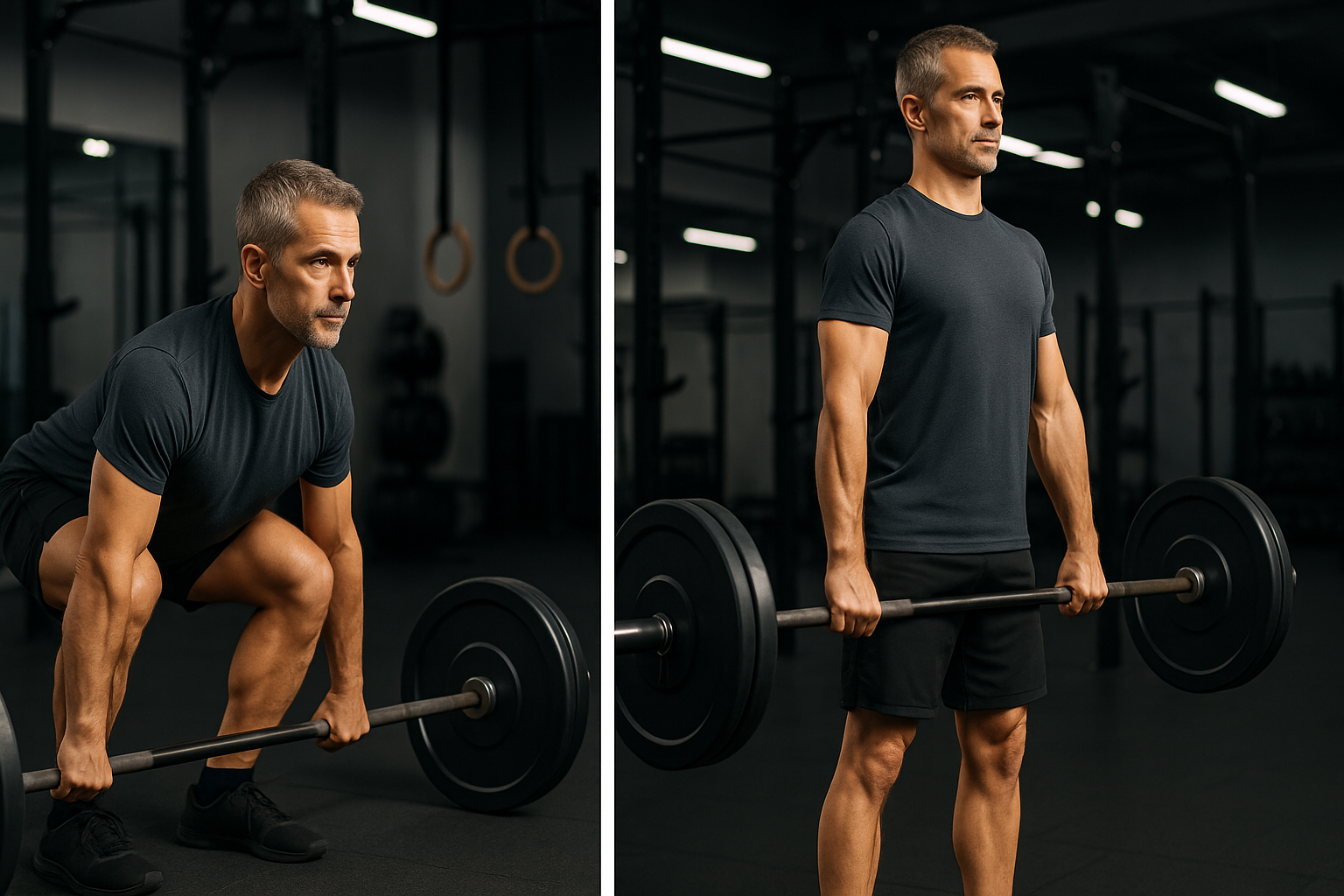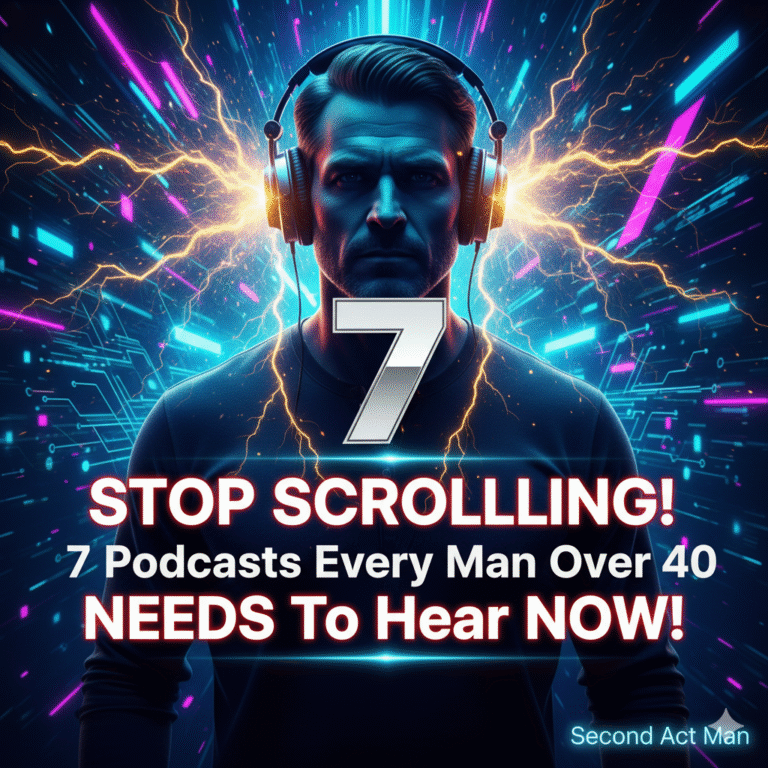Best Fitness Trackers for Men Over 40 – Expert Comparison 2025
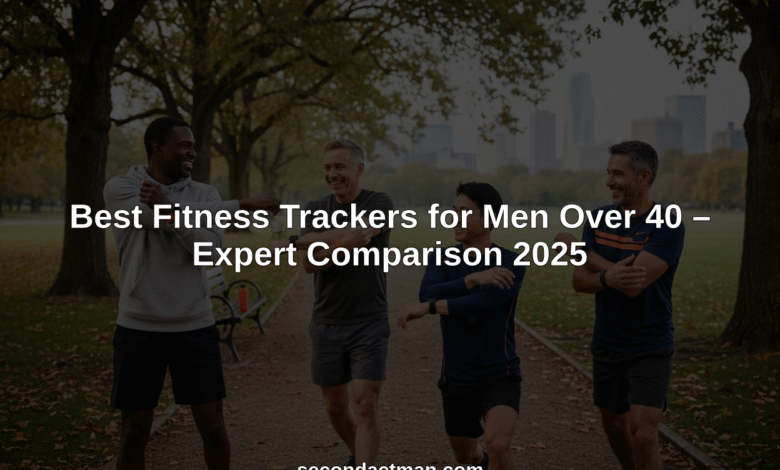
Choosing the right tech can shape your daily routine in unexpected ways. Whether you want to take charge of your health, improve how you track workouts, or enjoy devices that fit into your lifestyle, there are plenty of options that promise something different for everyone. Each product brings its own set of features and benefits, making it interesting to see what stands out. Curiosity grows as you wonder how these choices stack up and which one might match your needs best. Ready to see what makes these picks unique and which surprises might be waiting for you?
Table of Contents
- Second Act Man
- Fitbit
- Apple
- Garmin
- Samsung Electronics
- WHOOP
- Oura Ring
- Amazfit
- Polar
- Coros
- Xiaomi
- Honor
- realme
- Google Store
- Fossil
- PulseIt Fitness Tracker
- Top Tech Report
Second Act Man
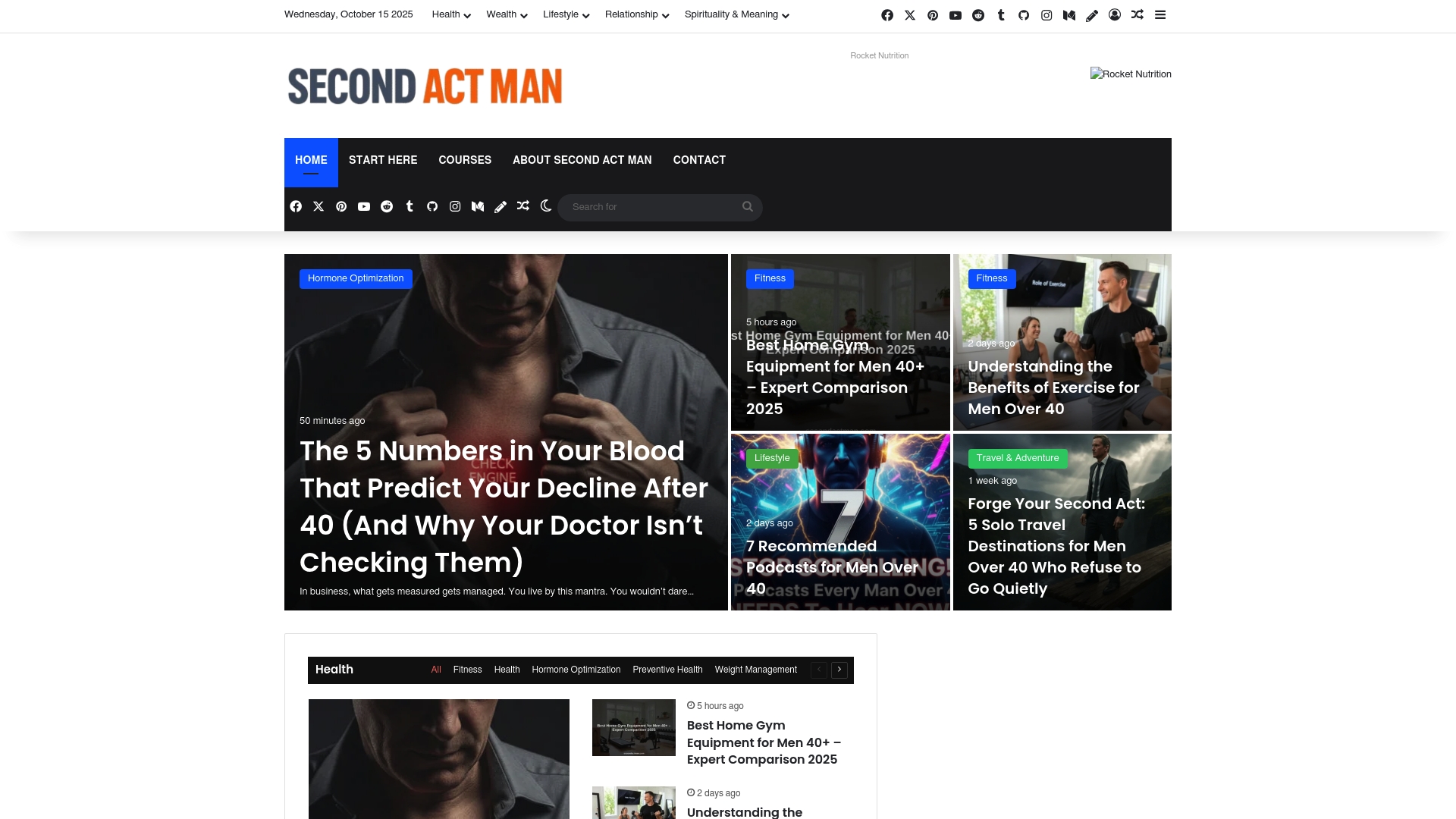
At a Glance
Second Act Man is a focused, purpose-driven resource hub built for men over 40 who want to regain energy, sharpen their health, and reinvent their next chapter. It blends evidence-informed articles, practical guides, and conversational podcasts into an approachable package for midlife change. If you’re serious about optimizing health, career, and relationships during midlife, this site is a smart first stop.
Core Features
Second Act Man offers a broad content mix tailored to midlife men: in-depth articles on health, fitness, and mental wellness; practical guides on hormone optimization and preventive health; podcasts diving into life, career, and personal growth after 40; plus lifestyle articles on travel, relationships, and finances. The platform focuses on actionable tips—workouts you can realistically schedule, hormone considerations framed for men in their 40s–50s, and career advice geared toward pivots and reinvention.
Pros
- Comprehensive midlife focus: The platform zeroes in on the specific health and lifestyle needs of men over 40, offering content you won’t find in generic wellness sites.
- Multi-format content mix: Articles, guides, and podcasts give you multiple ways to learn—read for depth, listen on the commute, or follow a step-by-step guide.
- Specialized health topics: Coverage of hormone optimization and preventive care provides focused guidance on issues particularly relevant to midlife men.
- Practical life and career guidance: Advice on career pivots, financial planning, and lifestyle changes is oriented toward real-world midlife transitions.
- Designed for the audience: Every piece is crafted with the lifestyle constraints and goals of men over 40 in mind, making recommendations realistic and sustainable.
Who It’s For
Second Act Man is ideal for men in their 40s and 50s who want evidence-based, pragmatic guidance to feel better, perform better, and plan the next phase of life. That includes men returning to fitness, those curious about hormone and preventive health, individuals facing career change or divorce, and anyone who wants to boost energy and mental clarity without gimmicks.
Unique Value Proposition
Second Act Man empowers men navigating life transitions to rediscover purpose, reinvent themselves, and thrive in their next chapter—whether it’s career pivots, health transformations, or personal growth after 40. This statement captures the essence of supporting men through major life changes while positioning the brand as a guide for meaningful reinvention and fulfillment in midlife and beyond. What sets it apart is the combination of targeted subject matter (hormone optimization, midlife fitness, mental wellness) with practical delivery (step-by-step guides and conversational podcasts). Rather than broad wellness platitudes, the site emphasizes actionable routines, realistic timelines, and mindset shifts tailored to midlife responsibilities. It’s not trying to be everything to everyone; that focus is a design choice that keeps the content sharp, relevant, and immediately useful.
Real World Use Case
Picture a 48-year-old professional returning to consistent workouts after a decade of irregular exercise: he reads a guide on hormone-aware training, listens to a podcast about pacing a career pivot, and follows a preventive health checklist to discuss with his doctor. He leaves with a 12-week plan and concrete next steps.
Pricing
Not specified on the website
Website: https://secondactman.com
Fitbit
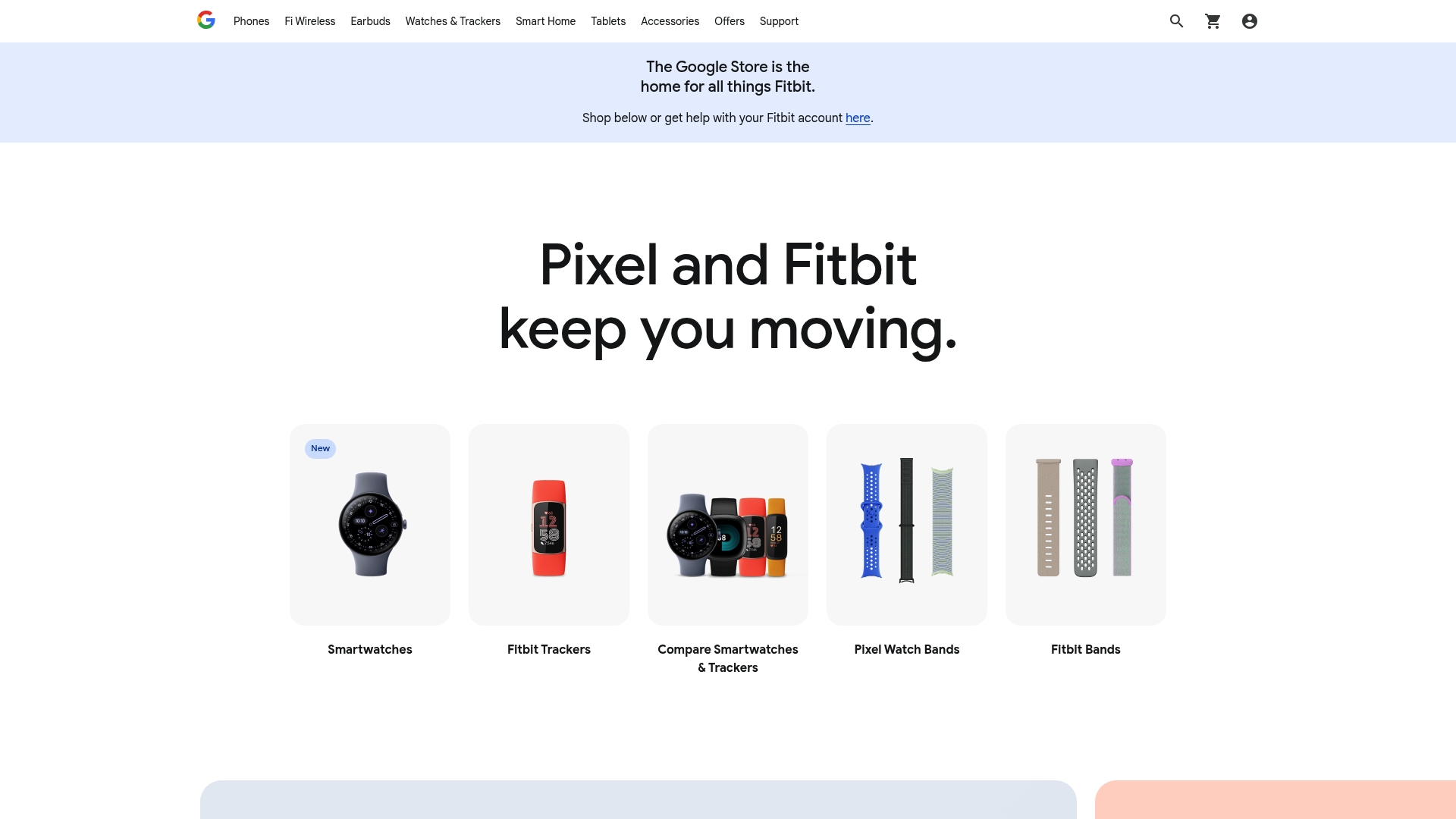
At a Glance
Fitbit delivers a broad ecosystem of activity trackers, smartwatches, and services aimed at helping you manage health and fitness as you age. It combines core sensors—like heart rate and sleep tracking—with subscription-based personalized insights through Fitbit Premium. Integration with Google services on compatible watches adds everyday conveniences such as maps and wallet support. Bottom line: a strong, mainstream choice for men over 40 who want dependable tracking plus deeper insights if they opt into the subscription.
Core Features
Fitbit focuses on activity and fitness tracking, continuous heart rate monitoring, and detailed sleep tracking and management. On compatible smartwatches, you also get integration with Google apps and services—think Google Maps and Google Wallet—so your watch doubles as a practical everyday device. Fitbit Premium layers personalized health insights and coaching over the raw data, while Fitbit’s ecosystem supports accessories, device support, and optional care services for ongoing management.
Pros
- Comprehensive fitness tracking features: Fitbit tracks steps, heart rate, and sleep patterns in a consistent, reliable way that makes daily progress easy to follow.
- Integration with Google services for a seamless experience: On supported smartwatches, Google Maps and Google Wallet integration simplify navigation and payments without pulling out your phone.
- Variety of products tailored to different fitness needs: From basic trackers to full-feature smartwatches, Fitbit offers device choices whether you want simplicity or advanced smartwatch functions.
- Availability of personalized insights and fitness guidance: Fitbit Premium delivers tailored recommendations and coaching that help translate numbers into actions you can follow.
- Subscription services for enhanced data analysis and coaching: Paid tiers expand the value of the hardware by providing deeper analytics and guided programs.
Cons
- Premium features require subscription which may involve additional cost: To access the most useful guided programs and deeper insights you’ll need Fitbit Premium, which is an extra expense.
- Compatibility may be limited for some devices or operating systems: Not all features are available on every phone or OS version, so some users may experience reduced functionality.
- Some advanced features may need internet access and app setup: Getting full value requires app setup and often a connected internet service for cloud syncing and premium features.
Who It’s For
Fitbit is ideal for men over 40 who want an accessible way to monitor daily activity, sleep, and heart health while keeping the option to expand into coaching and premium analytics. If you value a range of device options and plan to use Google services, Fitbit fits naturally into that lifestyle. If you prefer entirely free features, expect some capabilities to be gated behind subscription.
Unique Value Proposition
Fitbit combines mature, easy-to-read health sensors with an ecosystem approach: hardware, app, and subscription working together. Its real strength is offering straightforward tracking for daily habits with the option to upgrade into deeper, personalized health coaching when you’re ready.
Real World Use Case
Imagine tracking daily steps and sleep with a wrist device, monitoring resting heart rate trends, and then using Fitbit Premium to identify recovery gaps or stress patterns—while receiving turn-by-turn directions from your smartwatch using Google Maps. Practical, continuous, and actionable.
Pricing
Pricing varies by product and configuration; specific prices are available on the website.
Website: https://fitbit.com
Apple
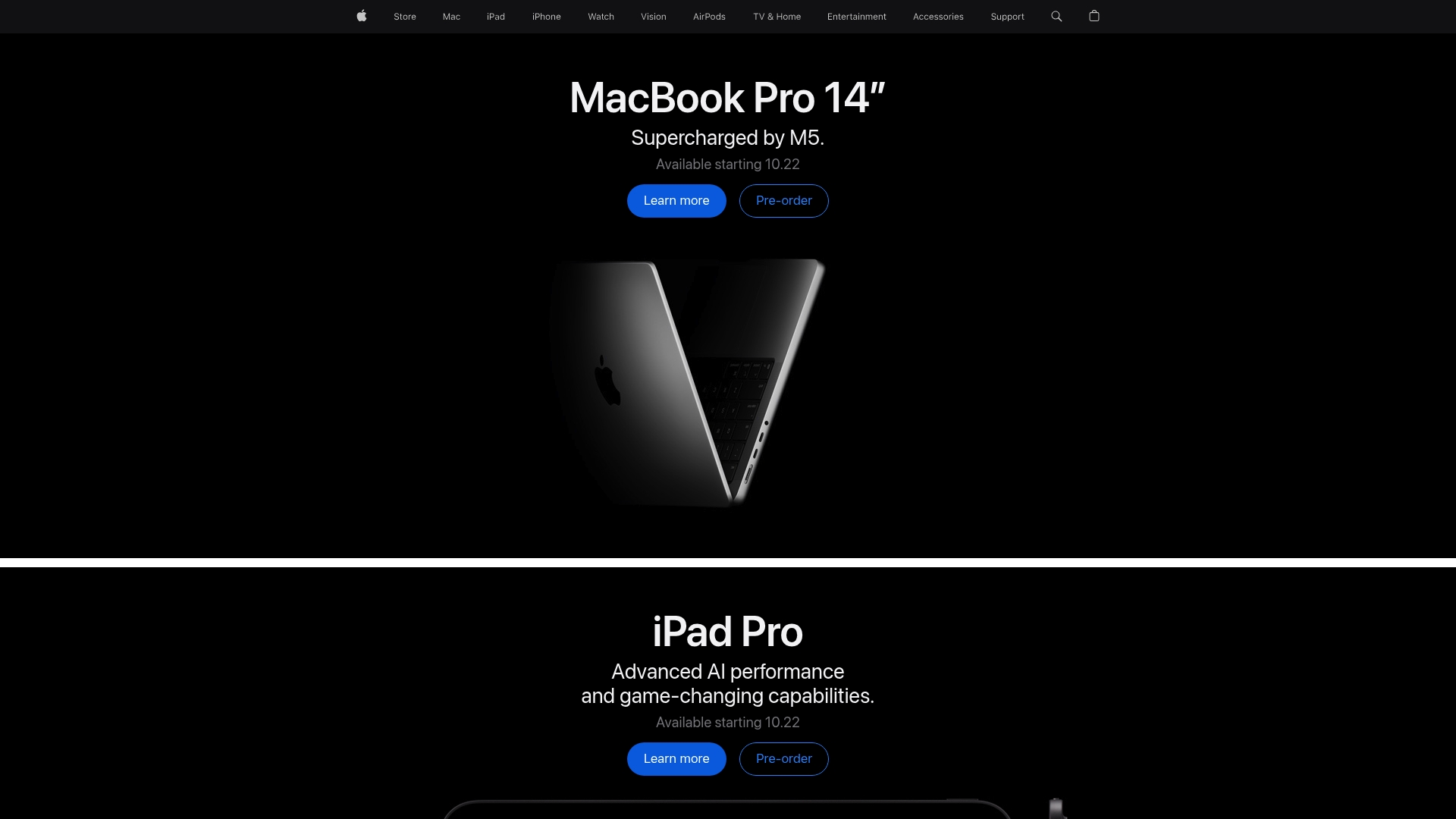
At a Glance
Apple delivers a broad lineup of premium devices—from MacBook Pro and iPhone 17 Pro to Apple Vision Pro and AirPods Pro 3—anchored by a tightly integrated ecosystem of hardware, software, and services. For men over 40 looking for reliable performance across work, fitness, and entertainment, Apple’s products offer polished experiences and frequent updates. The trade-off is predictable: premium pricing and a dependence on the Apple ecosystem. Bottom line: exceptional design and continuity if you commit to the ecosystem; less flexible if you want customization or lower cost.
Core Features
Apple’s strengths lie in its range and integration: high-performance MacBook Pro models (now with M5 chip), iPad Pro optimized for AI and gaming, multiple iPhone options including the iPhone 17 Pro and the thin iPhone Air, the mixed-reality Apple Vision Pro, and audio and wearable accessories like AirPods Pro 3 and Apple Watch Series 11. Add on subscription services such as Apple TV+ and programs like Apple Trade-In and Apple Card, and you get a unified platform for computing, communication, health tracking, and entertainment. Devices are designed to work together, sharing apps, files, and settings smoothly across the ecosystem.
Pros
- Innovative and high-performance hardware: Apple consistently ships powerful chips and refined hardware that handle intensive tasks such as video editing and gaming with ease.
- Wide range of products and services: From laptops to AR headsets to streaming services, Apple covers most consumer tech needs in one place.
- Strong ecosystem integration: Continuity features let your devices hand off calls, messages, and media effortlessly, saving time and friction.
- Frequent product updates and new releases: Regular updates and new models keep hardware and software current for longer than many competitors.
- Subscription services like Apple TV+: Built-in content and services add entertainment and convenience without juggling multiple vendors.
Cons
- Premium pricing: Apple’s devices are positioned at the high end, which can be a barrier if you’re watching your budget.
- Product compatibility limited to Apple ecosystem: Many features work best only with other Apple products, which reduces flexibility if you use non-Apple gear.
- Limited customization options for some products: Hardware and software choices are intentionally constrained, limiting deep personalization.
- Dependence on proprietary technology: Repair, upgrades, and accessory choices are often tied to Apple’s standards and policies.
Who It’s For
Apple is ideal for tech enthusiasts, creative professionals, and users who want a seamless, high-quality experience across devices. If you value performance, polished design, and tight integration—especially for productivity, photography, and media—Apple is a sensible choice. For midlife men balancing work, fitness tracking, and family entertainment, Apple simplifies device management so you can focus on results.
Unique Value Proposition
Apple’s unique value is its end-to-end ecosystem: hardware optimized with in-house chips, cohesive software services, and content offerings that work together to reduce friction. It’s not just individual devices; it’s an interconnected experience that speeds workflows and keeps your digital life organized.
Real World Use Case
A professional journalist edits video on a MacBook Pro, captures interviews and photos with an iPhone 17 Pro, uses AirPods Pro 3 for noise cancellation while traveling, and unwinds with Apple TV+ content—all while the devices sync notes, files, and calendar events automatically.
Pricing
Pricing varies by product and configuration; specific prices are not provided in the source content.
Website: https://apple.com
Garmin
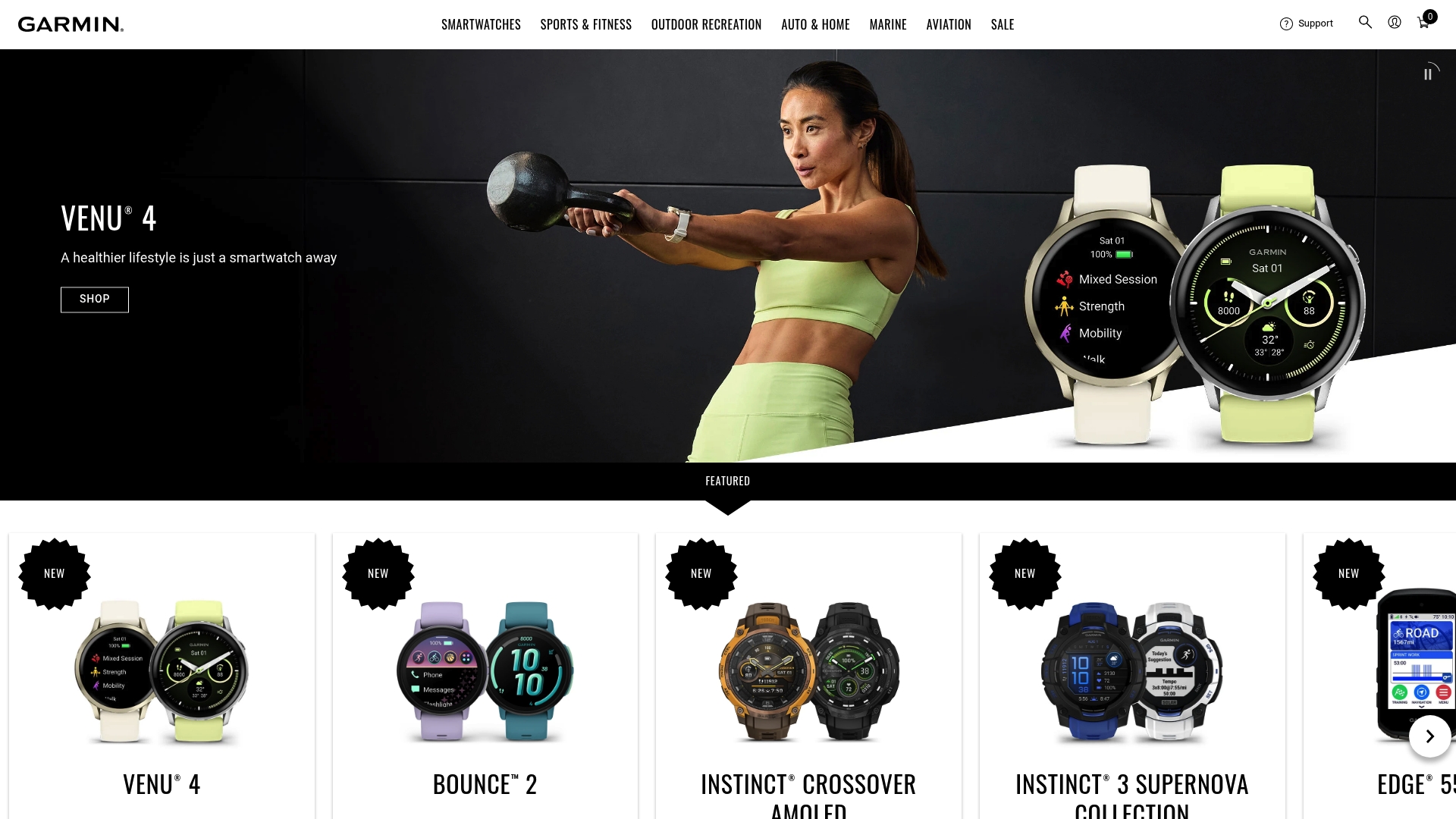
At a Glance
Garmin’s website is a centralized hub for the brand’s broad product ecosystem and support services, and it works well if you know what you’re looking for. The site combines shopping, account management, and a dedicated support center so you can buy a device, track an order, and troubleshoot without jumping between sites. For men over 40 seeking dependable navigation or fitness hardware, Garmin’s site signals depth and specialization, though product detail often requires a few extra clicks. Bottom line: robust portal, clear paths, and reliable support—provided you’re willing to dig for specifics.
Core Features
The site’s core capabilities include a multi-category support center, account management with order tracking, a shopping cart for purchases, and clear navigation between product and support sections. These elements create a single place to manage ownership lifecycle: research, buy, register, and get help. The structure emphasizes specialized categories—aviation, marine, fitness, outdoor—making it straightforward to find products or resources tailored to distinct needs.
Pros
- Wide range of products and support services: Garmin organizes offerings across navigation, fitness, outdoor, aviation, and marine domains, so you can find specialized gear in one place.
- User-friendly website navigation: Menu structure and category breakdowns make it easier to move from general browsing to specific product pages without frustration.
- Specialized categories for different user needs: The site’s divisions help you focus on the tech that matters for your activities, whether it’s trail navigation or cockpit instrumentation.
- Account and order management that enhance user experience: You can create an account to track orders and manage registered devices, which simplifies post-purchase support.
- Support resources for troubleshooting and product information: The support center centralizes manuals, FAQs, and service options so problems can be addressed quickly.
Cons
- Limited detailed product information visible from the homepage content: You often need to navigate deeper to find full specifications or comparative details.
- Potential need for user registration for full access to some features: Certain resources and order histories require an account, which adds a step for casual shoppers.
- The shopping experience may be minimal without detailed product listings from the provided content: Product pages may be concise, meaning you might want to cross-reference other materials before deciding.
Who It’s For
Garmin’s website is best for users interested in GPS, navigation, fitness, outdoor, aviation, or marine technology who want to research, buy, and get support for devices. If you value a single source for purchase, registration, and troubleshooting—especially when you own specialized gear—this site fits. It’s practical for men over 40 who prioritize durability, dependable support, and access to category-specific resources.
Unique Value Proposition
Garmin uniquely combines retail, account services, and a deep support library across multiple technology verticals, giving users a single destination to manage the entire device lifecycle. That integrated approach reduces friction between buying and maintaining gear.
Real World Use Case
Imagine you need replacement parts or a firmware update: you log in, find your registered device, check support articles, and place an order—all from the same portal—so you spend less time troubleshooting and more time using the gear.
Pricing
Not specified in the provided content.
Website: https://garmin.com
Samsung Electronics
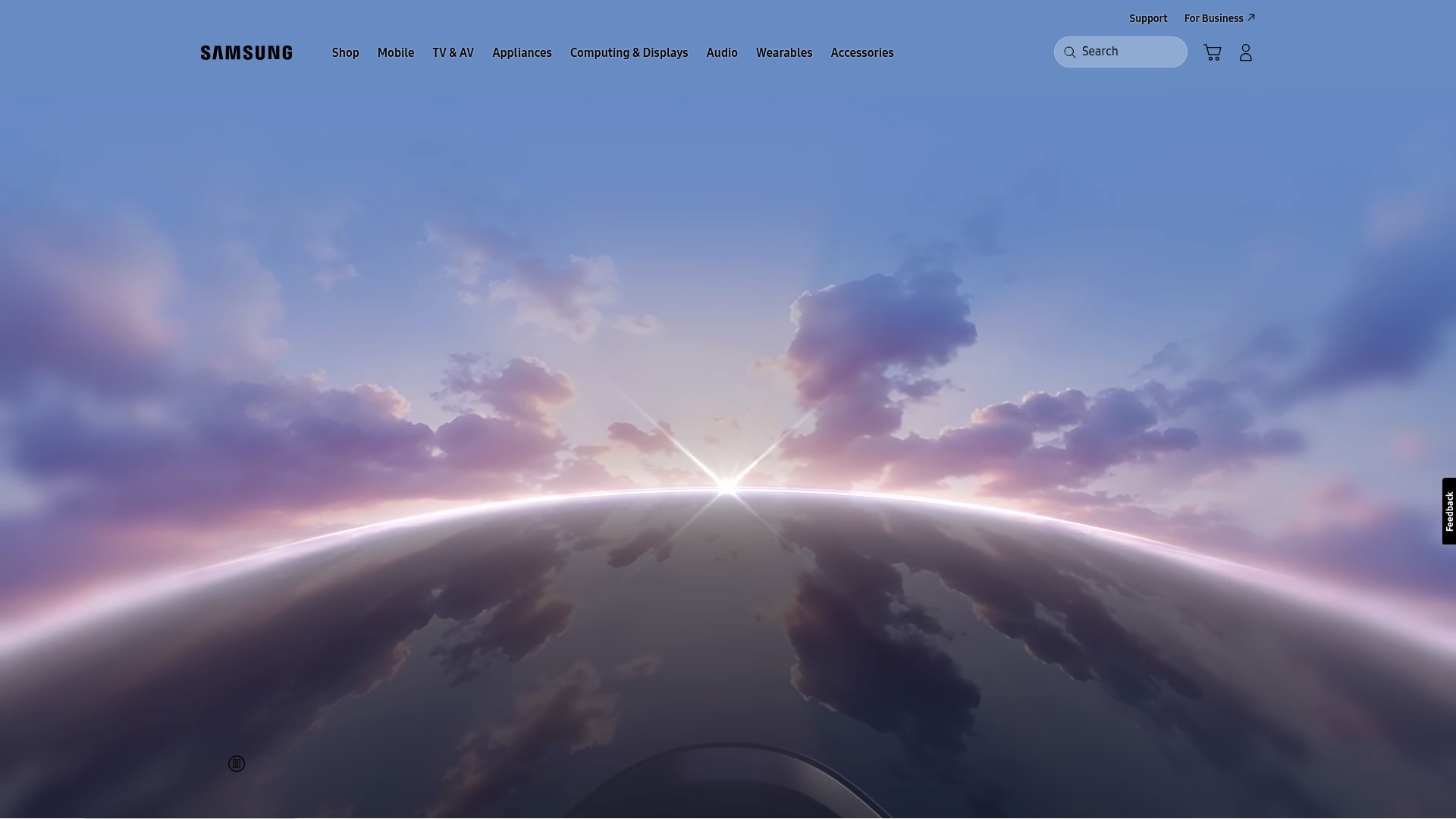
At a Glance
Samsung Electronics is a global leader in consumer electronics that combines broad product variety with connected smart-home capabilities. For men over 40 who want convenience, innovation, and a single ecosystem for phone, TV, and home devices, Samsung delivers a compelling, integrated experience. The site emphasizes new launches, pre-orders, and promotional incentives, though the sheer volume of content can feel overwhelming at first.
Core Features
Samsung offers a wide range of electronics—mobiles, TVs, home appliances, and home electronics—backed by online reservation and purchasing options. The ecosystem centers on smart technology integration, including SmartThings and Samsung Health, enabling device-to-device interaction and health tracking inside a unified platform. The website showcases latest product launches with pre-order benefits and frequent special offers, making it easy to discover and buy the latest gear in one place.
Pros
- Extensive product variety: Samsung carries everything from smartphones to ovens, giving you one stop for upgrading multiple parts of your life with compatible devices.
- Global reputation and trust: Decades of brand presence mean reliable warranty channels and broad accessory ecosystems.
- Innovative technology offerings: Integrated smart features like SmartThings and Samsung Health let multiple devices work together to simplify daily routines.
- Online shopping convenience: Reservation and purchasing options let you pre-order launches and buy directly from the manufacturer without intermediary steps.
- Frequent promotions and exclusive offers: Regular promotional events and pre-order incentives can reduce net cost and add value like store credit or bundled accessories.
Cons
- Website may be overwhelming for new users: The volume of content, categories, and promotions can make it hard to quickly find the specific specs or model you need.
- Limited detailed specifications in some listings: Certain product pages lack deep technical detail, which forces extra research before buying.
- Limited personalized support information online: Support options and tailored guidance aren’t always obvious on the site, which can slow down troubleshooting when you need quick answers.
Who It’s For
Samsung is best for tech-curious men over 40 who value a cohesive ecosystem: you want a phone that talks to your TV, a watch that ties into health metrics, and appliances that can be managed remotely. If you prefer buying from a single trusted manufacturer and appreciate promotional perks, Samsung fits well.
Unique Value Proposition
Samsung’s strength is its integrated ecosystem—hardware, software, and services designed to work together. That integration makes day-to-day tech feel less like a tangle of gadgets and more like a streamlined system that supports work, fitness, and home life.
Real World Use Case
Imagine exploring the latest Galaxy S25 Ultra on Samsung’s site, pre-ordering during a promotional window to receive a $100 credit, and adding Galaxy Buds plus a smartwatch to create an integrated setup where calls, notifications, and health data sync across devices.
Pricing
Pricing varies by product, with special offers and promotions available; specific prices are not listed on the homepage.
Website: https://samsung.com
WHOOP
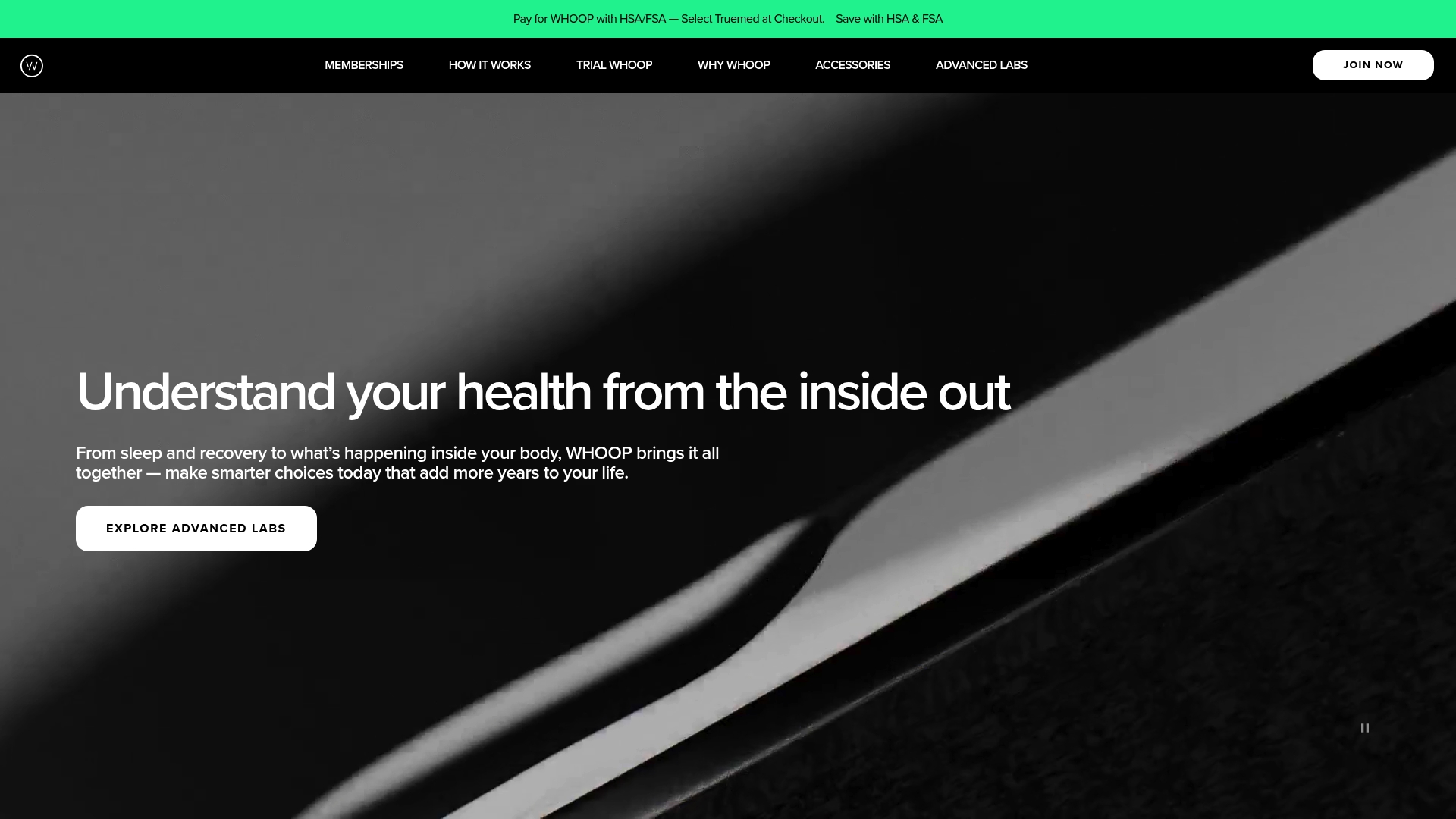
At a Glance
WHOOP is a 24/7 health and performance tracker built around continuous monitoring of sleep, strain, stress, and heart health. Backed by researchers and used by elite performers, it focuses on optimizing healthspan and longevity through data-driven guidance. For men over 40 who want actionable recovery and heart-focused insights, WHOOP delivers deep, science-oriented feedback rather than simple step counts. It’s powerful — but some medical features are region-limited and geared toward wellness, not formal diagnosis.
Core Features
WHOOP continuously collects physiological data to create a holistic picture of recovery and readiness. Key capabilities include round-the-clock sleep, strain, and stress monitoring, blood pressure insights (beta), menstrual cycle insights, and ECG/irregular heart rhythm notifications where available. In the U.S., users can also access advanced lab testing to deepen health analysis. The platform emphasizes personalized guidance based on longitudinal trends instead of one-off metrics.
Pros
- Comprehensive health tracking and insights: WHOOP aggregates sleep, strain, stress, and heart metrics into continuous, contextual recommendations you can act on daily.
- Backed by scientific research: The platform’s development involves PhDs and published science, which strengthens confidence in its algorithms and recommendations.
- Used by high-profile athletes and celebrities: Adoption by elite performers provides social proof and motivates consistent use for those seeking serious improvement.
- Personalized guidance to optimize health and fitness: WHOOP translates raw data into tailored suggestions for recovery and training load management.
- One device with multiple wear options: The hardware supports different wearing styles, letting you adapt comfort and accuracy to daily life.
Cons
- Region-dependent feature availability limits consistency: Some features like ECG, irregular heart rhythm notifications, and blood pressure insights are not available everywhere, so your experience may vary by location.
- Medical features are wellness-focused, not diagnostic: WHOOP’s medical-style data is intended for wellness insights and should not replace formal medical evaluation or diagnosis.
- Advanced labs testing is geographically limited: Deeper lab options are available only in the U.S. and under specific conditions, which restricts access for many international users.
Who It’s For
WHOOP is best for high-performance individuals and health enthusiasts who want continuous, research-backed feedback — including men over 40 who prioritize recovery, heart health, and longevity. If you’re rebuilding fitness after a life transition or trying to manage stress and sleep with precision, WHOOP gives a sustained, objective window into how daily choices affect long-term health.
Unique Value Proposition
WHOOP’s strength is its relentless focus on continuous, science-oriented monitoring and actionable recovery guidance rather than basic activity tracking. It pairs longitudinal data with expert-backed interpretation, offering a single platform for sleep, strain, stress, and heart-focused insights.
Real World Use Case
Elite athletes, including Cristiano Ronaldo, use WHOOP to track recovery and fine-tune training loads. For a busy midlife professional, WHOOP can highlight cumulative fatigue, suggest when to back off workouts, and identify sleep patterns that sap daytime energy.
Pricing
Not specified on the website; WHOOP offers a free trial with a membership for new users.
Website: https://whoop.com
Oura Ring
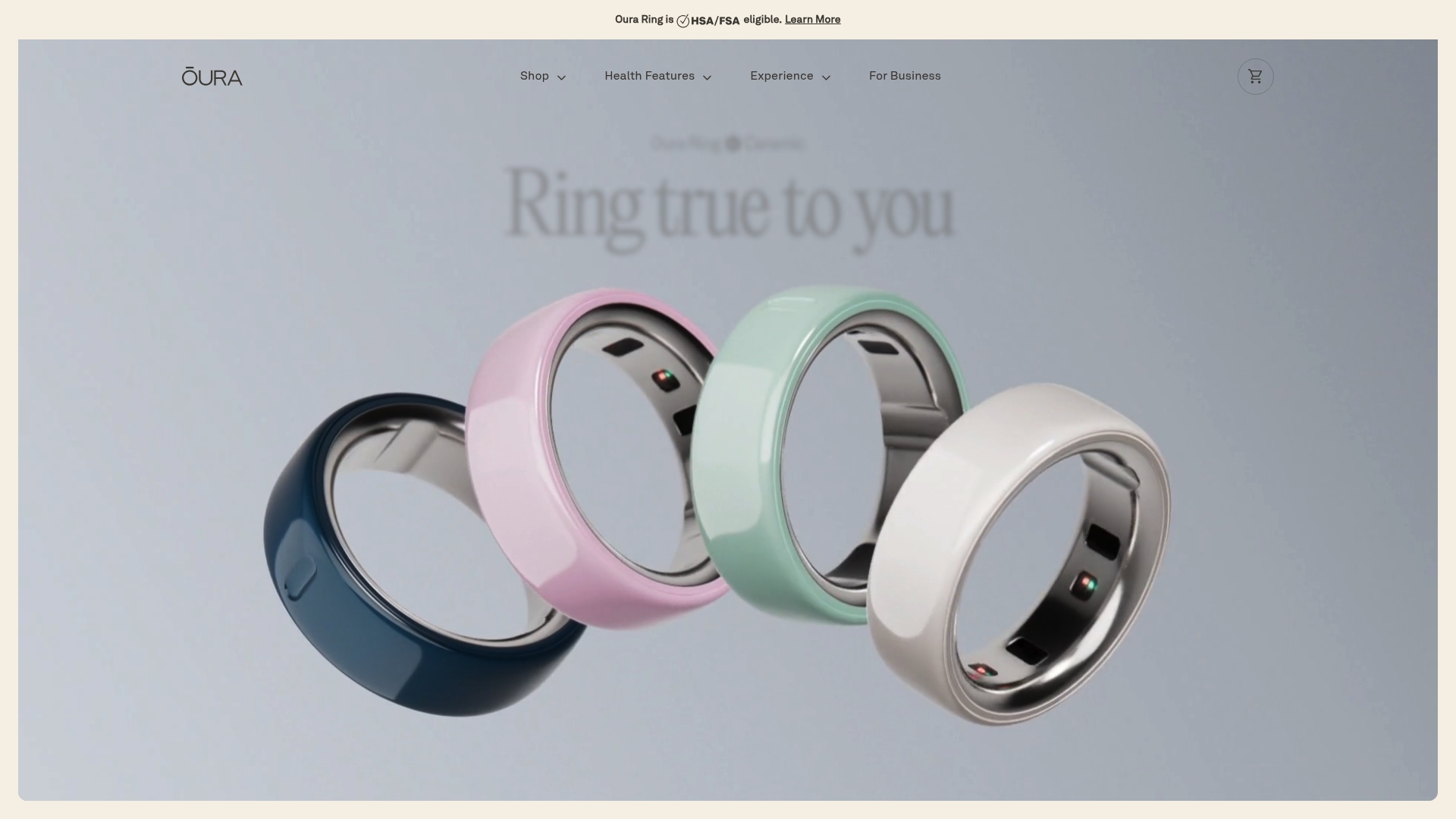
At a Glance
Oura Ring is a compact smart ring built to track sleep, activity, heart health, and stress with an emphasis on accuracy and privacy. It records over 20 biometric signals and delivers personalized insights you can act on. The latest Oura Ring 4 pushes a lighter, more stylish form factor while the company continues investing in AI-driven health analysis. If you want discreet, continuous biometric tracking without broadcasting data to the cloud, this is aimed at you.
Core Features
Oura Ring collects more than 20 health biometrics—sleep stages, activity levels, heart health indicators, and stress-related signals—and packages them into daily and long-term insights. It’s designed to be comfortable for all-day and all-night wear, with the latest version specifically reduced in weight and refined in style. The system emphasizes privacy by supporting local data storage and positions its analytics as personalized guidance rather than generic scores. The company’s ongoing investment in AI suggests more advanced interpretation of trends is on the roadmap.
Pros
- Accurate biometric data collection: The ring is designed to capture a wide range of physiological signals, enabling detailed tracking of sleep, activity, and heart-related metrics.
- Comfortable for all-day wear: Its lightweight, unobtrusive design is intended to be worn day and night without getting in the way of daily life.
- Privacy-conscious data management: Oura highlights local data storage, which helps users keep sensitive biometric data under their control.
- Supports a variety of health and wellness goals: From sleep optimization to stress monitoring and activity tracking, it’s built to support multiple wellness priorities.
- Stylish and lightweight design: The latest Oura Ring 4 aims to blend tech with jewelry-like aesthetics so it looks at home on your finger.
Cons
- Requires charging regularly: Like most wearables, it needs periodic charging, which interrupts continuous wear and tracking.
- Premium price point: The device is positioned as a premium wearable, which may put it out of reach for budget-conscious buyers.
- Limited to biometric tracking without additional health interventions: Oura provides insights and guidance but does not deliver direct interventions or medical treatment.
Who It’s For
Oura Ring is best for health-conscious men over 40 who want granular, ongoing biometric feedback without a bulky wrist device. If you’re trying to improve sleep patterns, manage stress, or use data to guide lifestyle changes—especially during a life transition—this ring offers discreet monitoring and personalized trends. It’s also suitable for those who value design and privacy as much as raw data.
Unique Value Proposition
Oura’s unique angle is combining dense biometric coverage with a minimalist, jewelry-like form factor and privacy-forward data handling. That mix makes the product attractive for users who want continuous health signals without sacrificing style or personal control over their information.
Real World Use Case
Imagine tracking your sleep every night, spotting that your deep sleep drops when you work late twice a week, and then adjusting your evening routine to gain 30–60 minutes of better rest—using the ring’s nightly reports to validate the change. You also monitor stress trends across workweeks and use those insights to schedule targeted recovery days.
Pricing
Premium wearable device; pricing details available on the website.
Website: https://ouraring.com
Amazfit
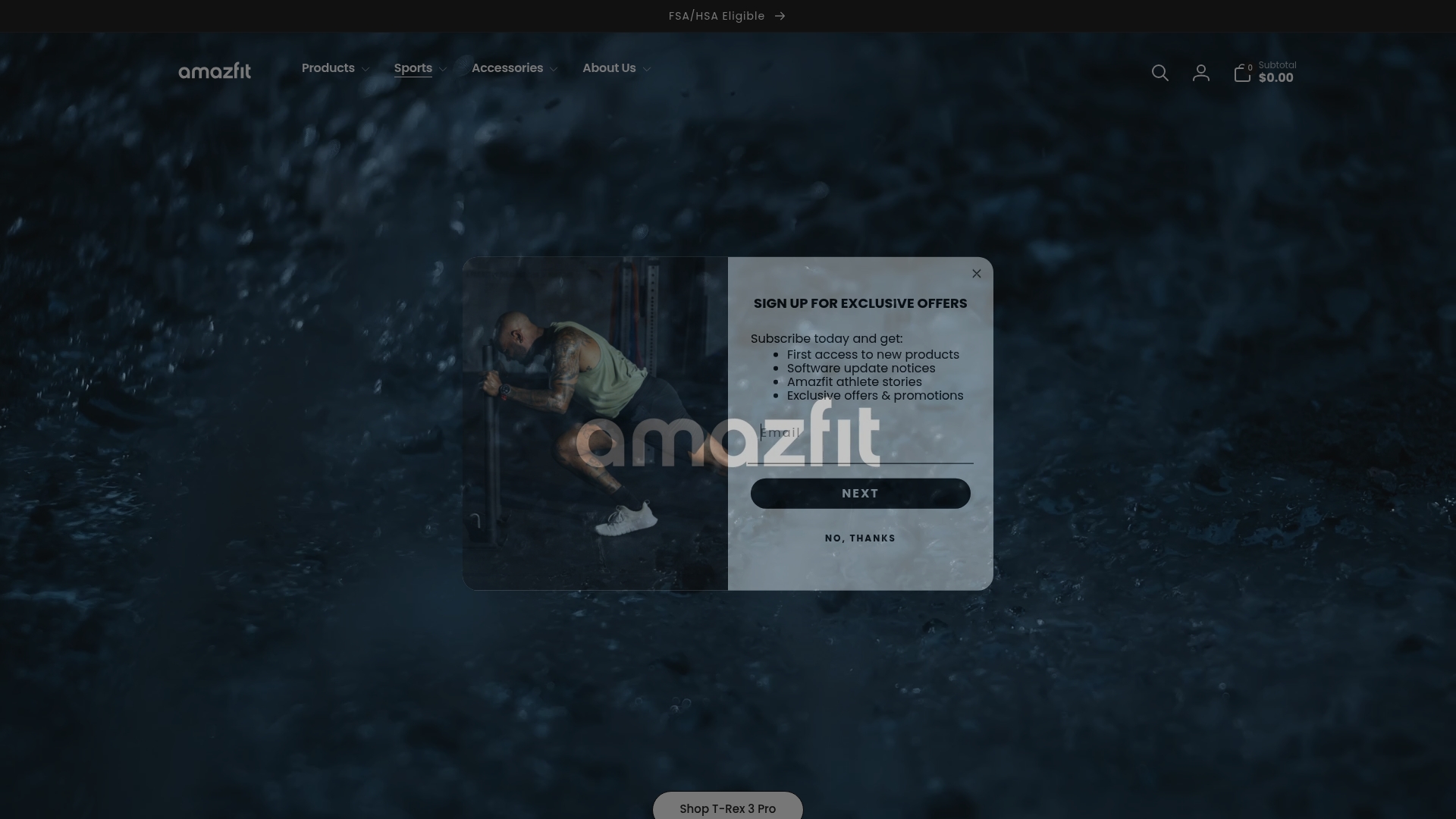
At a Glance
Amazfit offers a broad lineup of smartwatches and fitness bands that focus squarely on health, fitness, and everyday usability. The brand pairs core sensors—heart rate, sleep, and blood oxygen—with customization through watch faces and accessories, making it an approachable choice for men over 40 who want meaningful health data without fuss. It’s versatile: rugged models for outdoor use and slimmer options for daily wear. The bottom line: solid tracking and customization at scale, with a few gaps in public product detail and pricing clarity.
Core Features
Amazfit’s core capabilities center on multi-series hardware and a companion digital ecosystem. Expect heart rate monitoring, activity tracking, sleep analysis, and blood-oxygen (SpO2) measurement across many models, plus downloadable watch faces and accessories to tailor appearance and function. The platform supports contactless payments via Zepp Pay integration and provides an official online store for global access. In short: health-focused sensors, personalization, and ecosystem convenience are the backbone here.
Pros
- Wide range of smartwatch options: Amazfit provides multiple series aimed at outdoor athletes, fitness-focused users, and everyday wearers, so you can choose a model that fits your lifestyle without compromising function.
- Comprehensive health and fitness tracking: Key metrics like heart rate, sleep, activity tracking, and blood-oxygen readings give a rounded view of daily health trends in one device.
- Customization through watch faces and accessories: The ability to download custom watch faces and swap bands helps the watch feel personal and appropriate for both workouts and the office.
- Global online store for easy purchase: The official store simplifies buying and ensures access to the latest models and accessories.
- Integrated health assessment and sleep monitoring: Built-in sleep analysis and aggregated health insights help you track recovery and long-term trends rather than just raw numbers.
Cons
- Limited product detail and user review transparency: The available content doesn’t include detailed specs or aggregated user reviews, which makes side-by-side model comparisons harder before you buy.
- Unclear pricing and warranty information: Pricing isn’t explicitly provided in the source details, and warranty policies aren’t outlined, so budget planning and protection expectations require extra research.
- Regional availability and shipping variability: Availability and delivery options may differ by region, which could affect how quickly you can get a specific model or replacement parts.
Who It’s For
Amazfit suits tech-aware men over 40 who want practical health tracking without premium brand markups—think active professionals, weekend adventurers, and men pivoting back into fitness. If you value battery life, sensor coverage, and the freedom to customize appearance, Amazfit fits well.
Unique Value Proposition
Amazfit’s strength is breadth: a multi-series approach that covers rugged outdoor watches, fitness-centric bands, and stylish everyday wearers, all tied together by health sensors and a downloadable ecosystem. You get variety plus focused health functionality in one family of products.
Real World Use Case
Buy a T-Rex Ultra for a multi-day hiking trip with GPS and rugged durability, or choose a Bip-style tracker to monitor daily steps, heart rate, and nightly recovery—then swap watch faces to move from trail mode to boardroom mode.
Pricing
Pricing information is not explicitly provided; products are available for purchase on the official website.
Website: https://amazfit.com
Polar
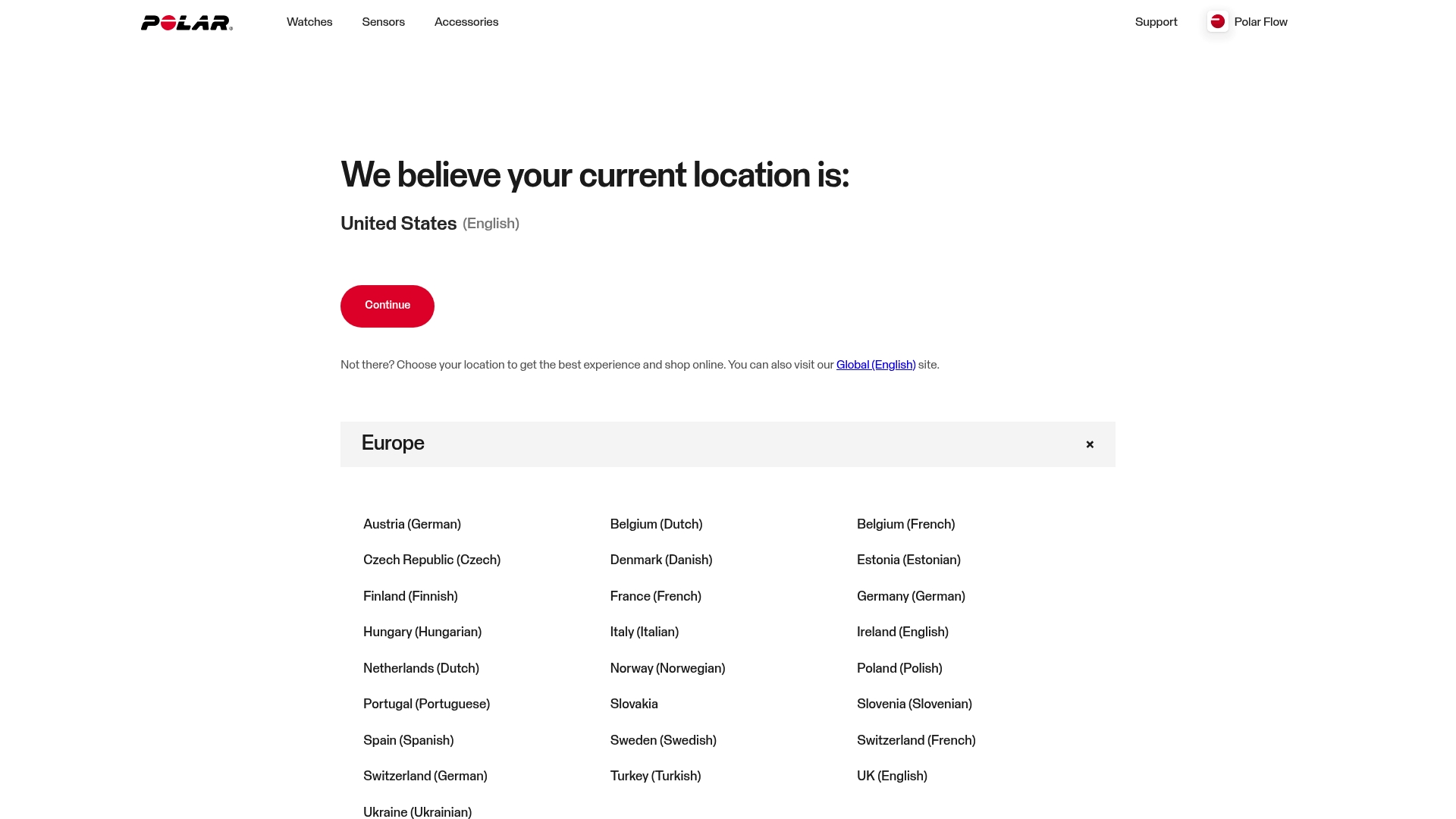
At a Glance
Polar is a long-standing name in heart rate monitors, fitness trackers, and sports watches, designed to give detailed activity and health data for performance improvement and health management. For men over 40 who want precise heart-rate tracking and training metrics, Polar offers a focused toolkit that ranges from simple trackers to full sports watches. It’s especially useful if you care about actionable training insights rather than just step counts. The trade-off: pricing and exact model specs aren’t available in the provided content, so you’ll need to check the site for the right fit.
Core Features
Polar’s core capabilities center on heart rate monitors, fitness trackers, sports watches, and a line of sensors and accessories that expand functionality. All devices are supported by the Polar Flow platform and app integration, which aggregates training data, tracks progress, and helps with analysis. The ecosystem is built to serve both athletes and casual users who want deep data — heart rate zones, multi-sport tracking, and accessory support are all part of the package according to the provided description.
Pros
- Wide range of fitness and health devices: Polar offers multiple device types, giving you options whether you need a basic tracker or a full-featured sports watch.
- Global availability with localized websites: Polar has a presence across regions, which makes purchasing and support easier for international users.
- Comprehensive tracking and support platform: The Polar Flow app centralizes data and supports training analysis, enabling better long-term tracking of progress.
- Wearables suited for athletes and casual users: The product lineup is flexible enough for elite training and everyday health monitoring.
- Integration with multiple sports and fitness activities: Polar supports a variety of activities, so your workouts and metrics stay consistent across sports.
Cons
- Specific product details and pricing are not available from the scraped content, which makes side-by-side comparisons difficult before you visit the site.
- Exact models and specifications are not provided in the snippet, so you can’t evaluate battery life, sensor accuracy, or screen features from this summary alone.
- Limited information on customer support or warranty policies is present, leaving unanswered questions about service and returns for midlife buyers who may value strong after-sales support.
Who It’s For
Polar is best for men over 40 who are serious about monitoring heart rate and improving performance—whether you’re a weekend runner, a cyclist, or someone rehabbing fitness after a life transition. If you prefer data-driven training plans and granular health metrics over flashy lifestyle features, Polar suits you.
Unique Value Proposition
Polar’s unique value is its concentrated expertise in heart rate monitoring and training analytics, backed by the Polar Flow ecosystem. That focus makes it a go-to platform for people who prioritize accurate physiological data and consistent training feedback.
Real World Use Case
Imagine a marathon runner using a Polar sports watch to monitor heart rate zones, pace, and performance metrics during training and on race day; the Flow platform then compiles the sessions to guide adjustments in intensity and recovery.
Pricing
Not specified in the provided content.
Website: https://polar.com
Coros
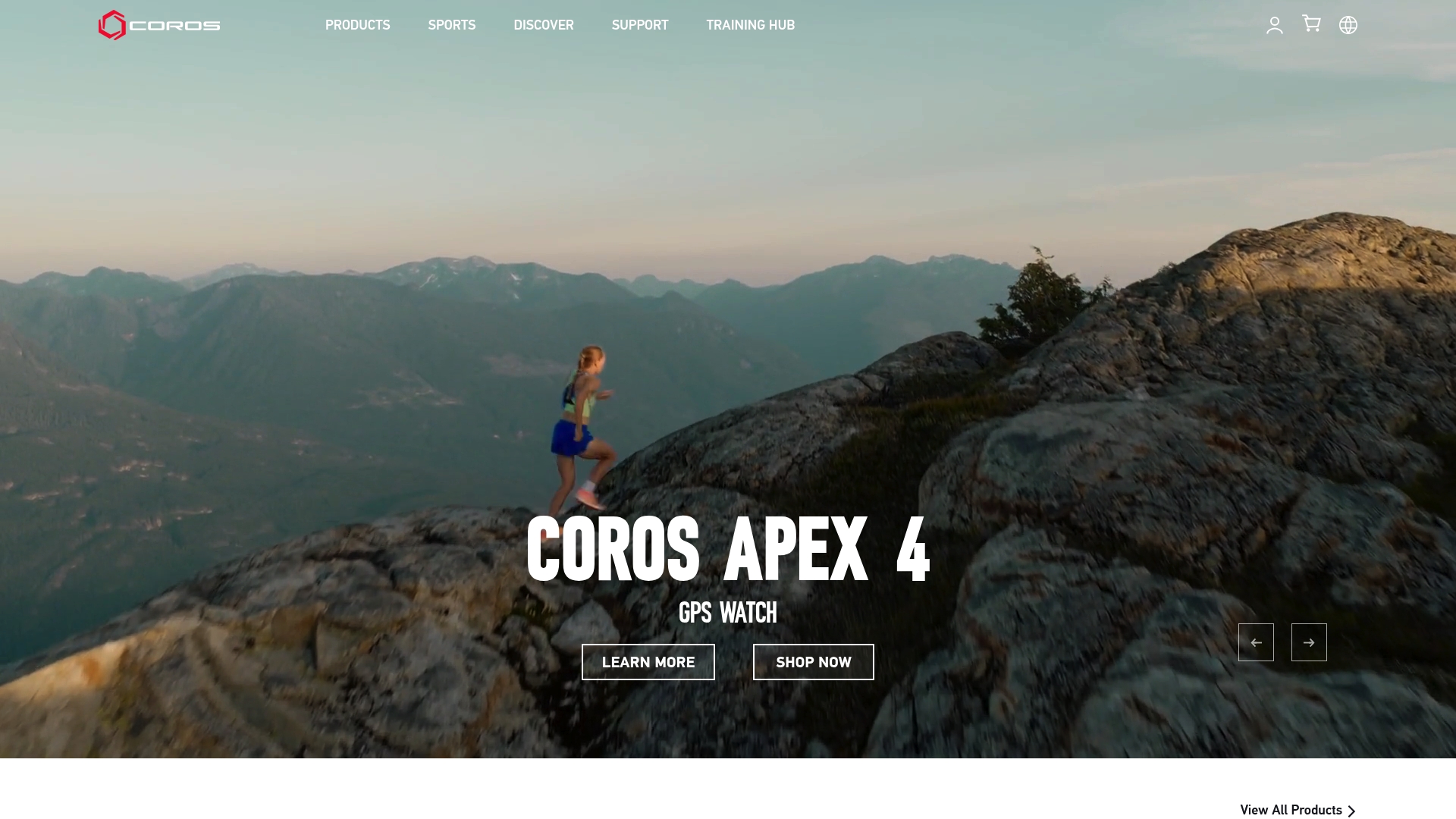
At a Glance
Coros builds GPS watches and training tools aimed squarely at endurance athletes and outdoor enthusiasts who want reliable navigation and coach-backed training in one package. The ecosystem combines rugged hardware with a training hub app so you can plan, execute, and analyze workouts without juggling multiple platforms. If you value durable build and outdoor navigation over flashy consumer bells and whistles, Coros is worth a close look.
Core Features
Coros focuses on GPS sport and adventure watches that cover running, trail running, climbing, and cycling, paired with an app-driven training experience. Key capabilities include coach-created training plans, the Coros training hub for planning and post-workout analysis, detailed maps and adventure journaling for route navigation, and heart rate monitoring options including an optical armband in some product suites. The combination is designed to support both day-to-day training and multi-hour outdoor excursions.
Pros
- Coros offers a wide range of GPS and outdoor activity watches tailored for different needs, so you can pick a device focused on trail durability or on lightweight running performance.
- The platform integrates training plans and coaching tools, which makes following structured programs and tracking progress straightforward and centralized.
- Advanced navigation features, including detailed maps and dual-frequency GPS on select devices, improve location accuracy and route reliability in challenging terrain.
- Products are built robustly for outdoor conditions, meaning the watches are designed to hold up through mud, rain, and long days on the trail.
- Coros provides reasonable warranty and repair service options, so you have support if hardware problems arise during heavy use.
Cons
- The provided content lacks detailed technical specifications, so you’ll need to visit the site to compare battery life, sensor accuracy, and model differences more closely.
- Some product features and nuances require further exploration on the Coros website to fully understand which model fits your exact needs, which adds a step before purchase.
- Pricing details are not specified in the provided content, making it hard to assess value without further research on current models and bundles.
Who It’s For
Coros is ideal for midlife men over 40 who train seriously—whether you’re targeting longer runs, trail races, or multi-sport outdoor adventures. If you prefer a durable watch that doubles as a navigation tool and a training coach, and you care about real-world reliability over lifestyle distractions, Coros fits that profile.
Unique Value Proposition
Coros’s strength is the marriage of rugged, activity-focused hardware with coach-backed training and mapping features in a single ecosystem. That combination helps you train smarter and navigate confidently on long runs or rides without switching between multiple apps.
Real World Use Case
A trail runner straps on a Coros GPS watch, follows a coach-created plan on the training hub, and uses detailed maps to navigate technical singletrack. After the run, they review pace and heart-rate trends in the app to adjust the next week’s sessions—simple, connected, and resilient in tough conditions.
Pricing
Not specified in the provided content.
Website: https://coros.com
Xiaomi
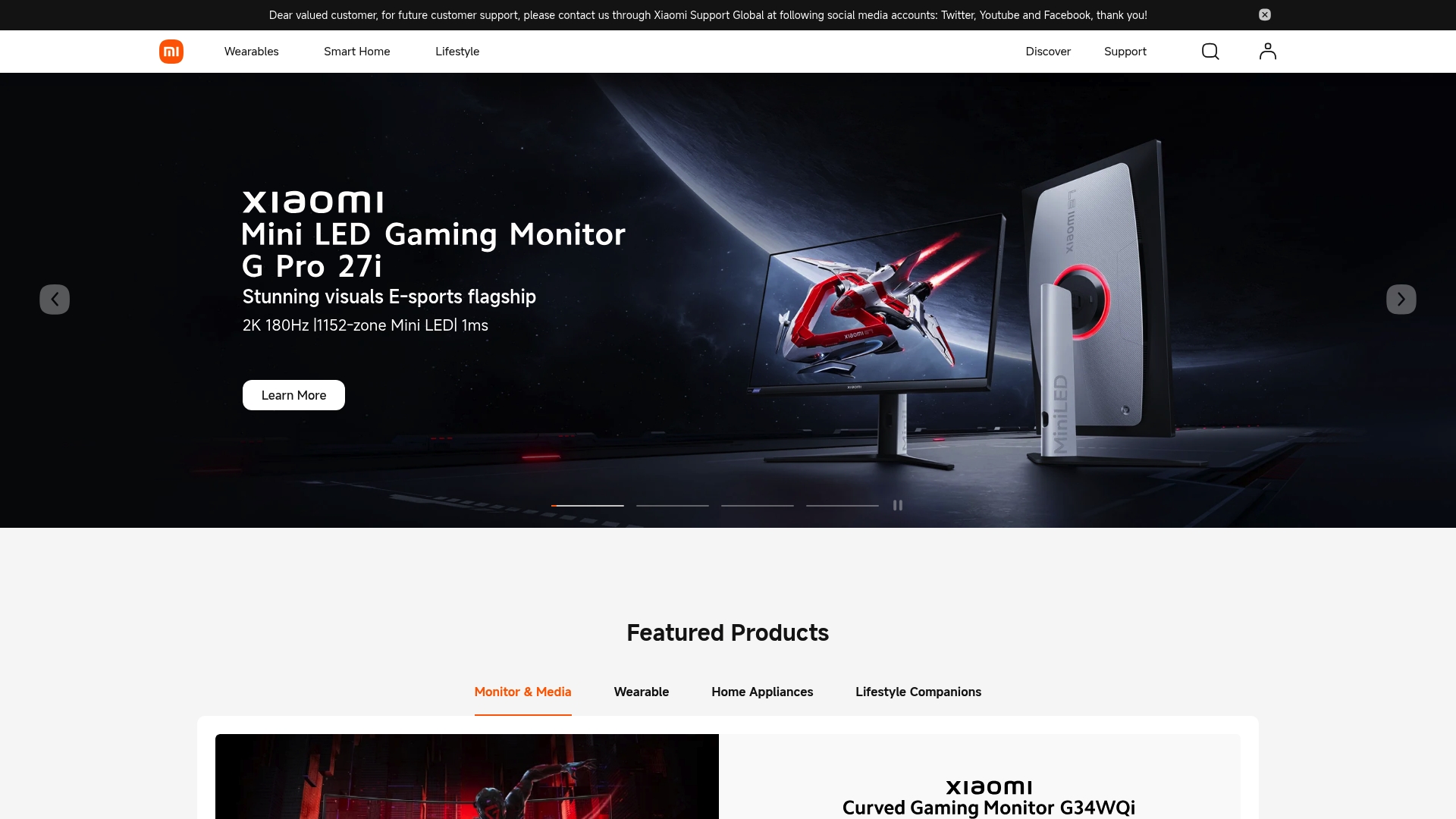
At a Glance
Xiaomi offers a broad, well-integrated lineup of consumer electronics that can anchor a modern home tech setup. If you want high-refresh gaming panels, Mini LED clarity, and a smart-home ecosystem that talks to itself, Xiaomi delivers on the essentials. That said, the available information is broad rather than deeply product-specific, so expect to do a little extra digging before committing to a particular model.
Core Features
Xiaomi’s ecosystem spans displays, audio, air quality devices, printers, and smart-home gear. Key capabilities called out in the product data include high refresh rate gaming monitors up to 180Hz and 2K Mini LED displays, air purifiers with allergen removal and live air-quality feedback, true wireless stereo earbuds with long-lasting batteries, and high-resolution remote-controlled printing. The emphasis is on integrated experiences—devices that live in the same ecosystem and exchange data for convenience.
Short version: versatile.
Pros
- Wide ecosystem integration: Xiaomi provides a broad range of interconnected products, making it easier to build a cohesive smart-home or home-office environment.
- Strong gaming-focused displays: With refresh rates up to 180Hz and 2K Mini LED options, Xiaomi’s monitors target gamers and anyone who wants smooth motion and sharp images.
- Innovative display technologies: Mini LED and ultrawide screens are part of Xiaomi’s lineup, offering improved contrast and immersive viewing.
- Smart appliances for everyday life: From air purifiers that monitor air quality in real time to smart home controls, Xiaomi covers practical household needs.
- Customer support focus: The company emphasizes customer support and warranty services, which can matter when you’re investing in multiple devices.
Cons
- Limited product detail available: The provided content lacks granular specifications, which makes model-to-model comparisons difficult.
- Broad focus may dilute specialization: Because Xiaomi covers many categories, some product lines may not be as deep or specialized as niche competitors.
- Website content can be high-level: The broad lineup hinted at on the site may make it harder to find detailed, in-depth product pages for specific models.
Who It’s For
Xiaomi is best suited for tech enthusiasts, gamers, and homeowners who want an integrated, value-oriented smart ecosystem. If you’re the kind of person who prefers one brand to control displays, audio, air quality, and smart-home hubs for seamless interaction, Xiaomi will appeal. It’s also a fit for someone building a multi-device environment rather than buying one-off specialty gear.
Unique Value Proposition
Xiaomi’s advantage is breadth plus integration: a single brand offering everything from high-refresh gaming monitors and Mini LED clarity to air purifiers and wireless audio, all designed to interoperate. That makes it easier to create a consistent tech experience across rooms and use cases without juggling many different manufacturers.
Real World Use Case
Imagine a gamer who pairs a 2K Mini LED, 180Hz Xiaomi monitor for smooth, crisp gameplay with Xiaomi wireless audio for immersive sound, while an air purifier silently maintains healthy indoor air—everything managed through the same ecosystem. It’s a cohesive setup for entertainment, comfort, and convenience.
Pricing
Not specified in the content provided.
Website: https://mi.com
Fitbit
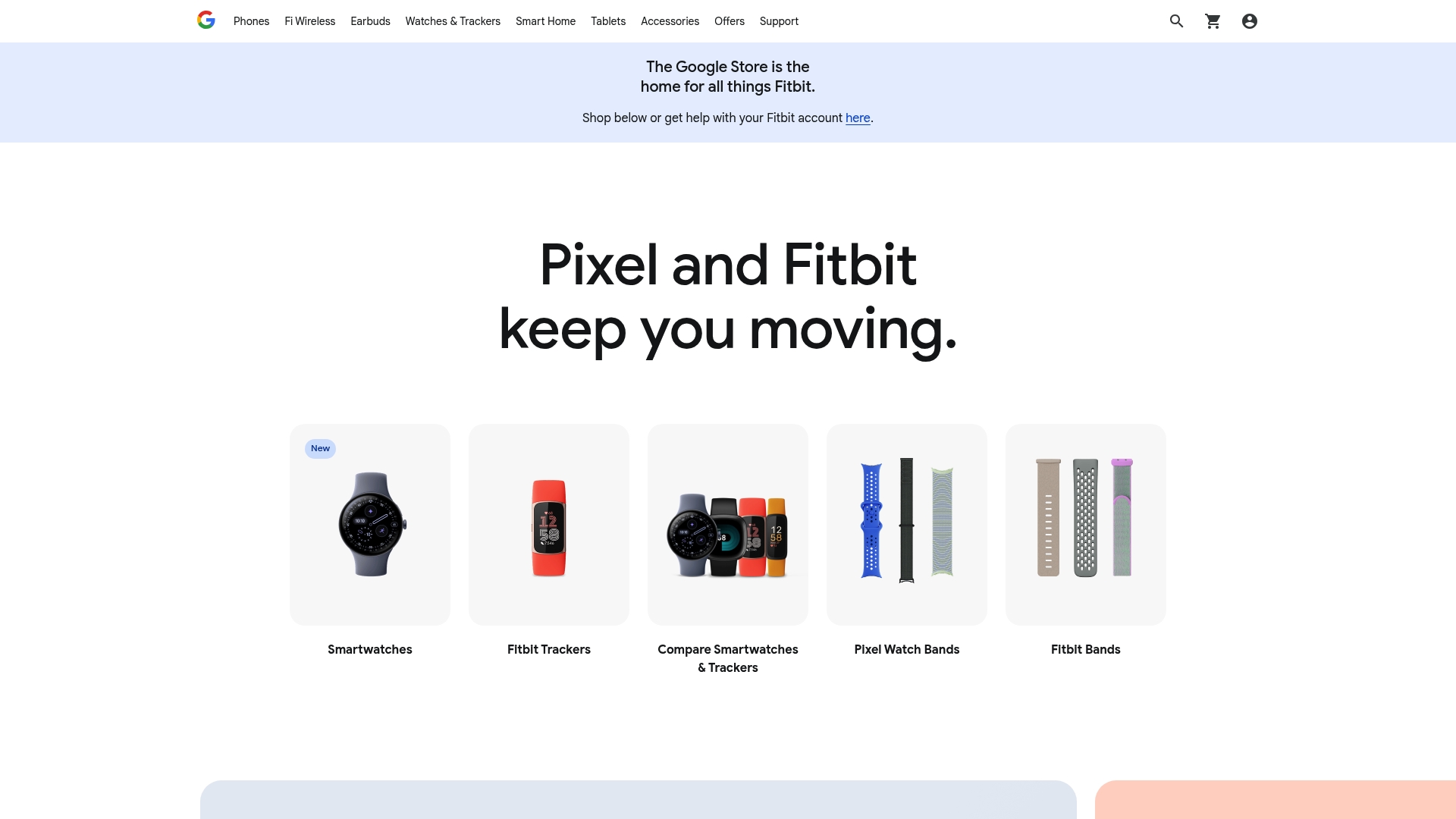
At a Glance
Fitbit delivers a broad lineup of activity trackers and smartwatches aimed at improving health and fitness through continuous tracking and personalized insights. Devices range from basic trackers to full-featured smartwatches, and select purchases include six months of Fitbit Premium for deeper guidance. Integration with Google services — like Google Maps and Google Wallet — makes daily life smoother while keeping health data centralized. Bottom line: Fitbit is a flexible ecosystem that balances everyday tracking with smartwatch convenience, though some advanced features require extra cost or newer devices.
Core Features
Fitbit’s core capabilities center on activity and fitness tracking, sleep and stress monitoring, and smartwatch functions such as notifications and contact management. The product family includes models like the Charge 6, Versa 4, Sense 2, Ace LTE, and Pixel Watch 4 and 3, giving you options whether you want a slim tracker or a full smartwatch. Fitbit also offers personalized health insights and recommendations, optional Fitbit Premium subscription content, accessories like bands and chargers, and integration with Google apps for navigation and digital payments.
Quick, practical point: compatibility matters. Check your phone.
Pros
- Device range covers many needs: Fitbit offers trackers and smartwatches that suit beginners, fitness-focused users, and those who want a smartwatch experience, giving you choice based on activity and budget.
- Tight Google integration improves daily convenience: Integration with Google Maps and Google Wallet adds real-world utility beyond fitness tracking.
- Personalized insights enhance motivation: Fitbit Premium delivers tailored workouts and health recommendations that can help you progress with clearer goals.
- Durable, stylish hardware options: Fitbit devices are designed to handle daily wear while offering a variety of styles and bands.
- Straightforward purchasing perks: Fitbit often includes free shipping and returns, simplifying the buying process.
Cons
- Some features require a paid subscription, which adds ongoing cost: Fitbit Premium unlocks advanced insights and workouts but is not included with every device.
- Compatibility limits exist for older devices and OS versions: Not every feature is available on all phones, so older operating systems may restrict functionality.
- Advanced features and integrations vary by model and region, creating uneven experiences: The capabilities you expect may depend on which Fitbit model you buy and where you live.
Pause here. Think about long-term value.
Who It’s For
Fitbit is ideal for men over 40 who want a single device to track daily activity, monitor sleep and stress, and handle basic smartwatch tasks without juggling multiple apps. If you’re restarting a fitness routine, managing sleep, or want gentle nudges to move more, Fitbit’s ecosystem fits well. It’s also a good match if you use Google services and want those conveniences tied into your health data.
Unique Value Proposition
Fitbit stands out by combining approachable, reliable hardware with a software ecosystem that scales—from free tracking basics to subscription-based personalized coaching. That spectrum makes it easy to start simple and upgrade to guided plans as goals become more ambitious.
Real World Use Case
A user wears a Versa 4 to monitor steps, sleep, and heart rate, syncs data with their smartphone, uses Fitbit Premium for tailored workouts, and manages notifications plus Google Wallet payments on the Pixel Watch 4 — all coordinated through Google integrations for a cohesive daily routine.
Pricing
Pricing varies by product, ranging from affordable trackers to high-end smartwatches, with additional costs for accessories and the optional Fitbit Premium subscription.
Website: https://fitbit.com
Garmin
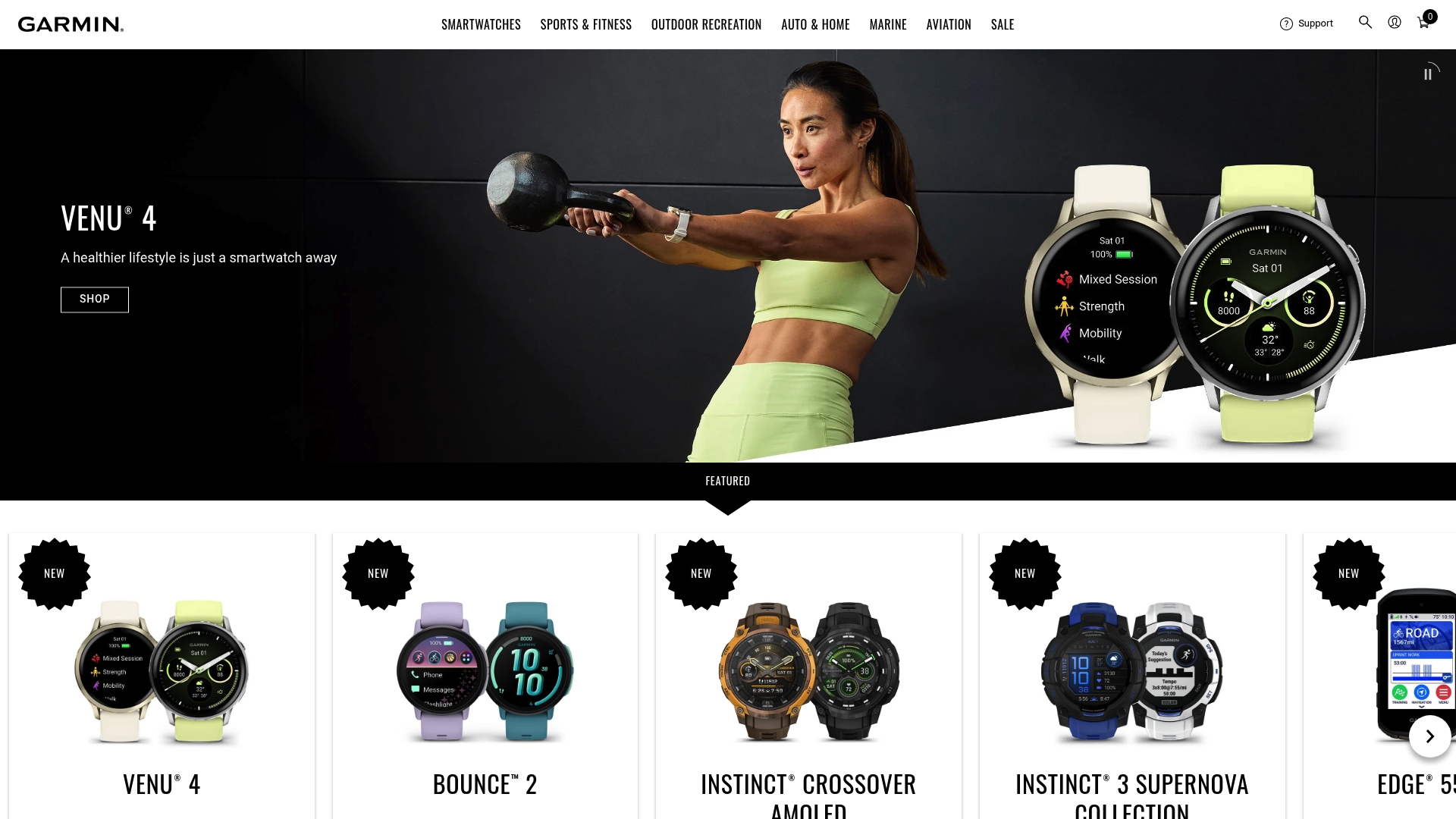
At a Glance
Garmin is a broad-spectrum hardware and services company best known for GPS navigation, wearable technology, and specialized aviation and marine devices. For men over 40 who want reliable navigation, robust support resources, and gear built for specific activities, Garmin delivers depth and choice. That breadth can be a double-edged sword: excellent if you know what you need, confusing if you don’t. Bottom line: dependable, specialized products backed by comprehensive support — expect to do a little homework to find the right model.
Core Features
Garmin’s official site and product ecosystem center on three clear capabilities: specialized product support across aviation, marine, outdoor, and fitness categories; account management features including order tracking; and an extensive support center with articles and resources. In practice that means you can shop for purpose-built devices (for example, navigation units or sport wearables), manage purchases and warranties from one account, and dig into documentation or help guides when setup or troubleshooting is needed.
Pros
- Wide range of specialized products: Garmin offers devices tailored to different activities, so you can pick a product built specifically for aviation, marine use, outdoor sports, or fitness needs.
- Comprehensive support and resources: The website includes a support center with articles and resources that help with setup, troubleshooting, and device care, which is valuable when you’re balancing a busy life.
- Global availability and online shopping capability: You can access products and support worldwide through Garmin’s site and online store, making it easier to buy and service devices wherever you are.
Cons
- Pricing transparency is limited: Pricing details are not readily available on the homepage, so you’ll often need to drill down by model to understand costs, which slows quick comparisons.
- Site complexity can overwhelm new users: Because Garmin covers aviation, marine, outdoor, and fitness domains, the website’s breadth may feel complex and make it harder to quickly find the specific product or support article you need.
Who It’s For
Garmin suits users who need purpose-built navigation or wearable tech rather than a one-size-fits-all tracker. If you’re a committed outdoor athlete, a pilot, a boater, or someone who values specialized features and strong post-purchase support, Garmin is a sensible choice. If you want a simple, narrow-focused shopping experience, be prepared to invest time in comparing models.
Unique Value Proposition
Garmin’s unique value is depth: a product lineup that spans consumer fitness wearables to professional aviation and marine hardware, all backed by structured account management and a large support library. That combination makes Garmin especially valuable for buyers who need more than generic fitness metrics — they want devices that perform reliably in specific environments.
Real World Use Case
A professional pilot can rely on Garmin’s aviation support devices for navigation and in-flight communication, while a weekend hiker can pick a GPS-enabled outdoor watch with route and tracking features and consult the support center for setup tips.
Pricing
Not specified on the website homepage; pricing likely varies by product type and configuration.
Website: https://garmin.com
Withings
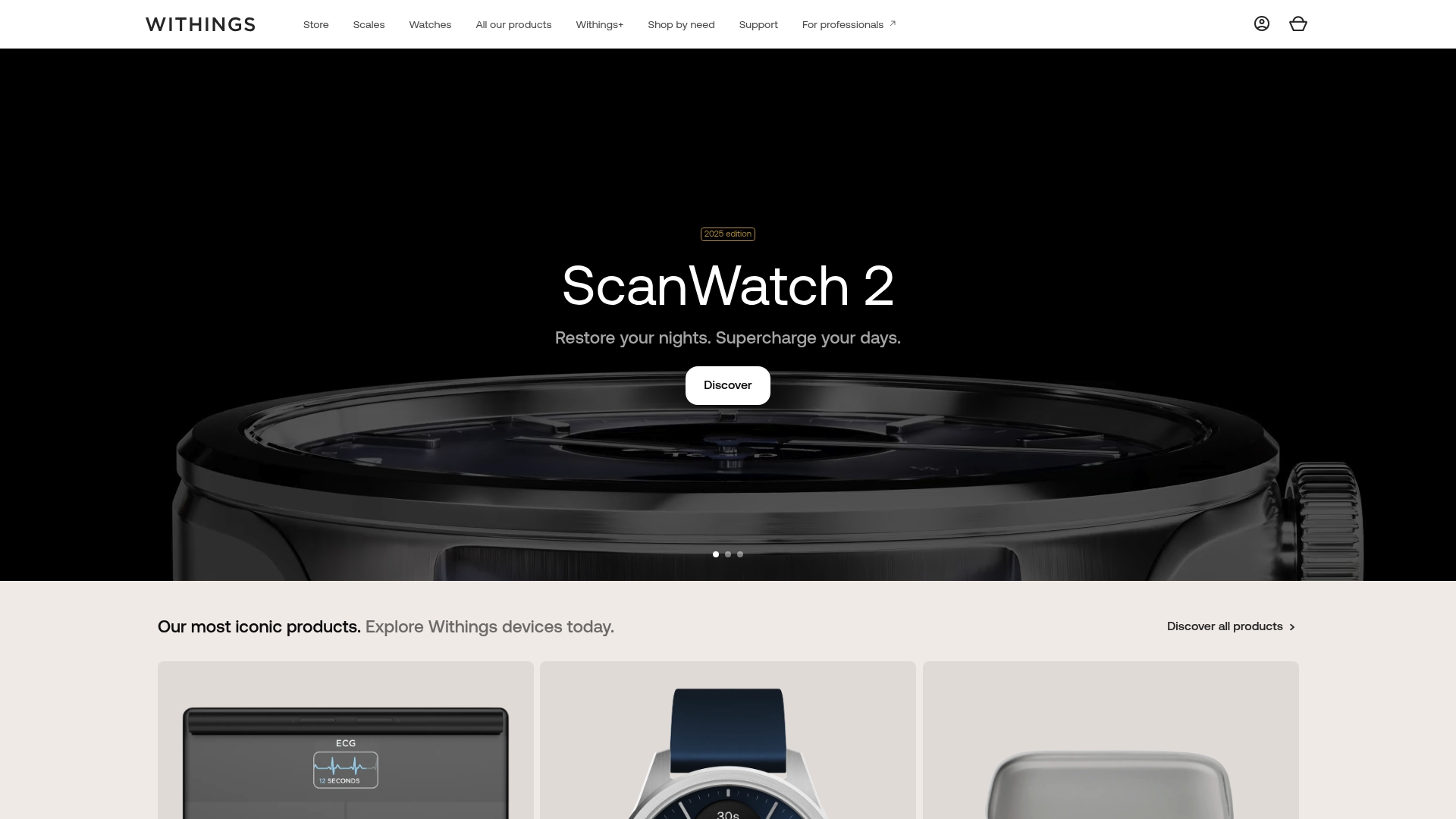
At a Glance
Withings builds clinically validated, connected health devices designed to make better health a daily habit. If you want a cohesive ecosystem—scales, watches, blood pressure monitors, sleep analyzers—backed by an easy-to-use free app and membership content, Withings is a strong contender. It leans toward quality and clinical credibility rather than bargain-basement pricing, so expect a polished experience and occasional premium costs.
Core Features
Withings offers a family of connected health devices: body scales, hybrid smartwatches, blood pressure monitors, sleep analyzers, and body scans. Those devices feed into the free Withings app for clear data visualization and progress tracking. For users wanting extra guidance, Withings+ membership adds curated content and health coaching. On the practical side you get free U.S. shipping, secure payment options, a 2-year device warranty, and flexible purchases such as pay-later via Klarna or PayPal.
Pros
- Broad device ecosystem: Withings provides a wide product range that covers weight, sleep, blood pressure, and activity monitoring, so you can centralize most of your health data in one place.
- Clinically validated hardware: The devices are presented as clinically validated, which gives extra confidence if you’re tracking metrics for medical reasons.
- Free app for tracking and insights: The included Withings app visualizes trends and progress without additional software costs.
- Membership content for extra support: Withings+ delivers structured health guidance and programs if you want more than raw numbers.
- Customer-friendly buying policies: Free U.S. shipping, 30-day returns, buy-now-pay-later options, and a two-year warranty simplify ownership and reduce risk.
Cons
- Limited device-spec details in this summary: The provided information doesn’t spell out device-by-device specs or compatibility nuances, which makes comparing models harder.
- Some products sit at a premium price point: Listed prices (for example, US$499.95, US$369.95, and US$179.95) indicate certain devices may be premium-priced compared with entry-level trackers.
- Specific compatibility and technical details not listed: If you need exact sensor accuracy, battery life, or platform compatibility for a particular model, that information isn’t included here.
Who It’s For
Withings is best for midlife men who want clinically minded, data-driven health tracking across multiple domains—weight, sleep, blood pressure, and activity—without juggling several apps. It’s particularly useful if you’re managing hypertension, diabetes risk, or weight goals and prefer devices that look and feel like consumer-grade products backed by clinical validation.
Unique Value Proposition
Withings’ strength is the integrated ecosystem: clinically validated devices that feed a single, free app, plus optional membership guidance. That combination suits men over 40 who want reliable numbers and context to make informed lifestyle adjustments and to share clean reports with clinicians when needed.
Real World Use Case
Imagine using a Withings scale each morning and a sleep analyzer each night; over months you track weight, body composition, sleep efficiency, and occasional blood pressure readings. Those trends help you spot subtle changes—better sleep after a schedule tweak, or weight plateau—and support smarter conversations with your doctor.
Pricing
Starting at the prices listed (examples include US$499.95, US$369.95, and US$179.95), though actual device prices vary by model.
Website: https://withings.com
Amazfit
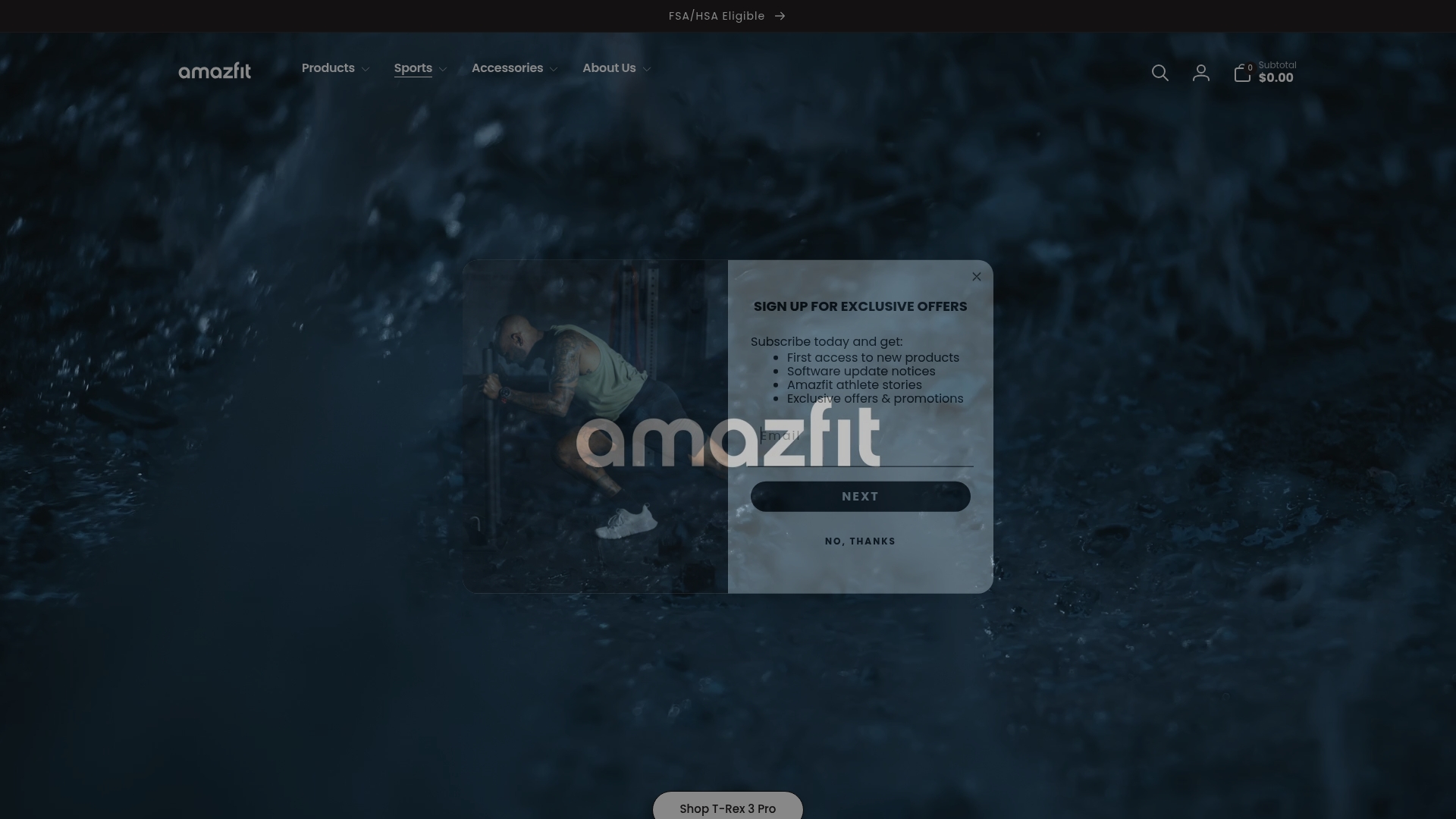
At a Glance
Amazfit offers a broad family of smartwatches and fitness bands that focus squarely on health and everyday convenience. The lineup includes heart rate monitoring, sleep tracking, blood oxygen measurement, GPS-enabled models, and a companion Zepp app for deeper insights. It’s a solid choice if you want a variety of styles and features without committing to a single niche ecosystem. Expect model-to-model differences — some watches lean sport, others lean style.
Core Features
Amazfit’s core capabilities center on continuous health tracking (heart rate, sleep, blood oxygen), activity tracking with GPS on capable models, customizable watch faces, and a range of accessories like straps and additional watch faces. The Zepp app aggregates data into daily and long-term trends, and Zepp Pay adds contactless payment options where supported. Multiple series — from Band and Bip to GTR, GTS, T-Rex, and more — give you options for everyday wear, rugged outdoor use, or sleeker casual looks.
Simple.
Pros
- Extensive range of models catering to different needs and styles, so you can choose a watch that fits your workouts, wardrobe, or outdoor plans without compromise.
- Health-focused features including oxygen saturation and sleep tracking provide more than step counts, giving you a fuller picture of recovery and daily strain.
- Customizable watch faces and accessories let you personalize both function and fashion, which is handy when you want one device for gym and office.
- Global availability and online store support mean replacement bands and new models are generally easy to source.
- Integration with the Zepp app provides consolidated health insights, turning raw data into actionable trends over weeks and months.
Cons
- Limited detailed information on pricing and specific product specs on the landing page makes it hard to compare models head-to-head before purchase.
- Potential variation in features across different models means you must check individual model specs carefully to avoid missing a key capability you expected.
- Availability might vary by region, so features like Zepp Pay or particular rugged models could be restricted depending on where you live.
Notice this.
Who It’s For
Amazfit is ideal for health-conscious men over 40 who want flexible choices: a tracker for daily health metrics, a GPS watch for weekend hikes, or a stylish smartwatch for everyday wear. If you value data-driven insights via an app but don’t need enterprise-level medical accuracy, Amazfit gives practical, wearable tools to help you monitor and improve sleep, heart health proxies, and activity levels.
Unique Value Proposition
Amazfit’s strength is variety: the brand packages core health features across multiple form factors and price points, combined with the Zepp ecosystem for coherent tracking. That breadth means you can match the device to your life — from office to trail — while keeping health data centralized.
Real World Use Case
Wear an Amazfit watch daily to track heart rate and sleep, sync with Zepp each night, and review weekly trends to adjust training and recovery. Swap to a GPS-enabled T-Rex or Falcon series for weekend runs and hikes, then switch straps for a cleaner weekday look.
Pricing
Prices vary depending on the product and series; specific pricing details are not provided in the landing page content.
Website: https://amazfit.com
Suunto
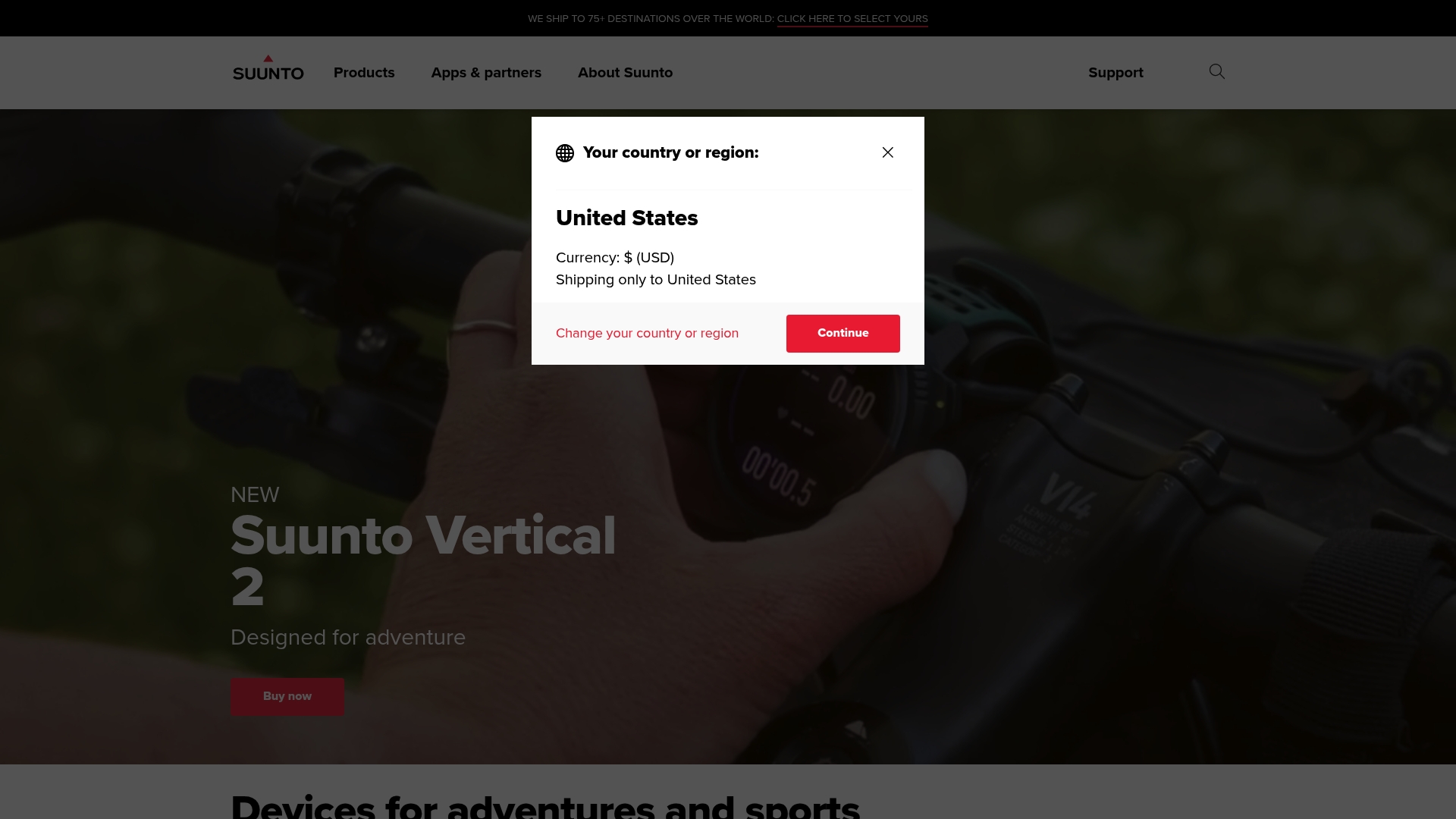
At a Glance
Suunto builds purpose-driven sports watches, dive gear, compasses, headphones, and accessories aimed at athletes and outdoor adventurers. If you prioritize rugged design, navigation tools, and devices tailored for training or underwater use, Suunto delivers a focused catalog rather than general consumer gadgets. It’s a solid pick for men over 40 who want durable, performance-oriented equipment to support outdoor fitness goals and adventurous weekends.
Core Features
Suunto’s core lineup centers on sports watches for training and adventure, dive products for underwater activities, and precision navigation accessories like compasses. The brand also offers sport-focused headphones, including bone conduction options, and a range of supportive accessories. Suunto emphasizes accessibility and frequently updates its models—examples cited include the Suunto Vertical 2 and Suunto Race 2—so the product family is geared toward improving performance, safety, and on-the-go usability for outdoor pursuits.
Pros
- Wide range of specialized sports and outdoor products: Suunto covers multiple activity types so you can outfit training, diving, and navigation needs from one brand.
- Focus on innovation and adventure-oriented designs: The product lineup is built with adventure and performance in mind, which helps when you need rugged reliability.
- Accessibility standards compliance to facilitate user access: Suunto makes an effort to meet accessibility standards, improving usability for a broader range of users.
- Offers subscription and newsletter for updates and discounts: Regular communications can keep you informed about new models, firmware updates, and promotions.
- Secure payment and return policies: Buying and returning gear follows standard secure e-commerce practices, which reduces purchase friction.
Cons
- Limited detailed product specifications in the provided content: The supplied information doesn’t include granular specs like battery life, GPS accuracy, or sensor lists, which makes direct feature comparisons difficult.
- Potentially limited focus on everyday consumer electronics outside sports niche: If you want a tracker that doubles as a daily smartwatch with broad lifestyle apps, Suunto’s focus may feel narrowly sport- and adventure-centric.
- Specific regional availability not detailed: The content doesn’t clarify country-by-country availability, so some items or models could be hard to source depending on your location.
Who It’s For
Suunto is best for outdoor enthusiasts, athletes, divers, and men over 40 who value specialized tools that support serious training, navigation, and underwater activities. If your fitness goals include trail running, open-water training, or simply reliable gear for weekend adventures, Suunto’s product family aligns with those priorities.
Unique Value Proposition
Suunto stands out by concentrating on adventure-optimized instruments—watches, dive equipment, and navigation tools—rather than mass-market wearables. That singular focus produces devices designed to withstand harsh conditions and serve performance-driven users.
Real World Use Case
A competitive runner or triathlete uses the Suunto Race 2 for structured training and race-day metrics, relying on its performance features to analyze intervals, recovery, and trends across a season.
Pricing
Not specified in the provided content; pricing generally varies by product.
Website: https://suunto.com
Google Store
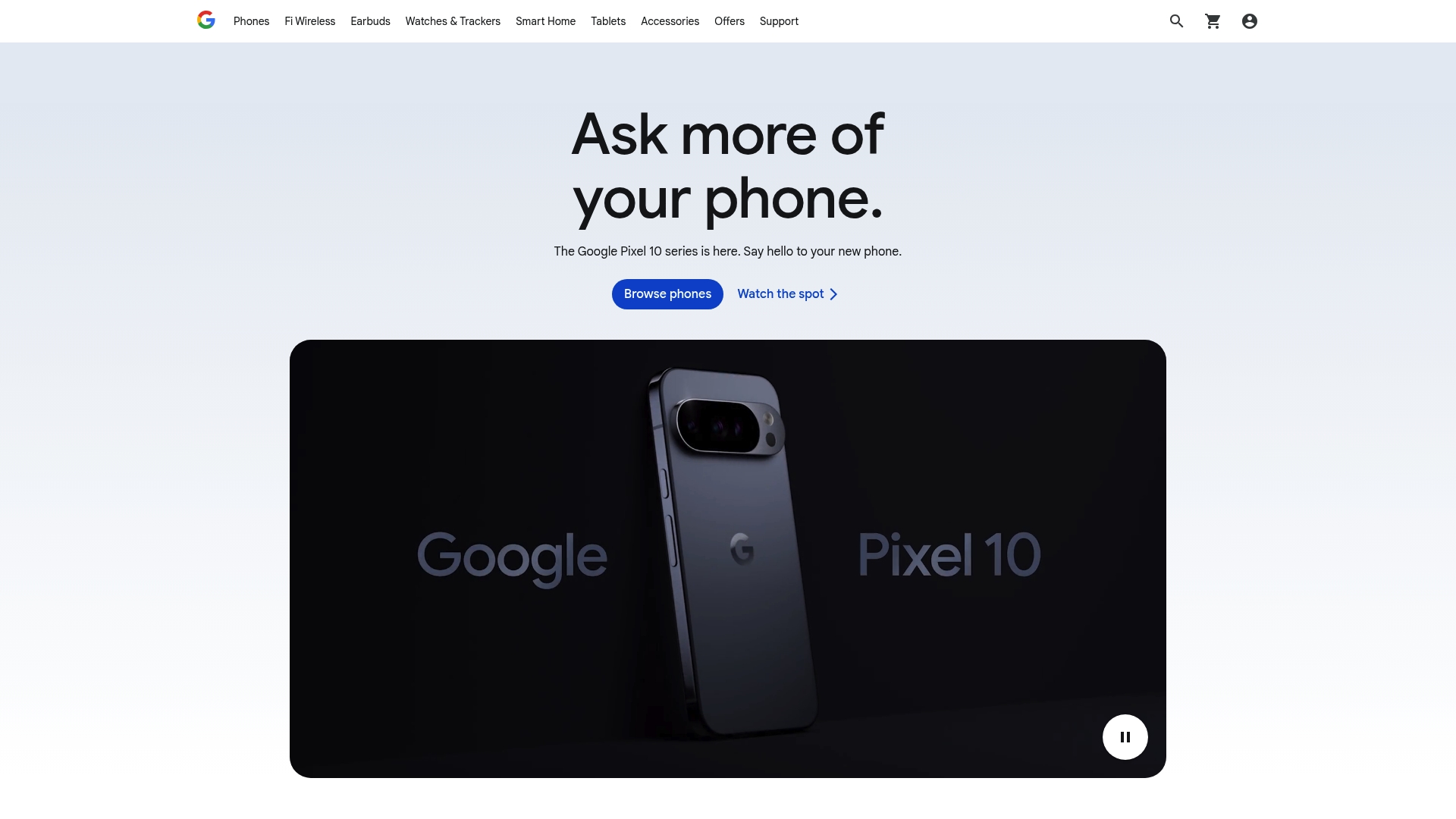
At a Glance
The Google Store is the official storefront for Google-made hardware and accessories, offering phones, earbuds, watches, smart home gear, and support services. If you want one-stop access to Pixel phones, Pixel Buds, Pixel Watch, Nest cameras, and related accessories, this is the hub. It’s practical for hands-on shopping with physical store locations, and it doubles as the primary source for product launches and repairs. Bottom line: convenient, official, and strongly tied to the Google ecosystem.
Core Features
The Google Store aggregates Google’s device lineup and keeps it current with new product drops like the Pixel 10 series and Pixel Watch 4. It provides an in-person retail experience at select U.S. locations and pairs that with online ordering, support, and repair services. The store also highlights AI-driven updates and features with each Pixel release, and serves as the official channel for promotions, returns, and warranty handling. In short: purchase, preview, and service—under one roof.
Short and simple.
Pros
- Comprehensive selection of Google devices and accessories: You’ll find the full range of Pixel phones, Pixel Buds, Pixel Watch models, Nest cameras, and matching accessories in one place. This reduces guesswork when comparing devices from the same ecosystem.
- Official source for the latest products and updates: New releases and AI feature announcements show up here first, so you’re seeing accurate product information and timing. That matters when you care about getting new features early.
- Support and repair services available: The store isn’t just for buying; it offers repair pathways and post-purchase support, which simplifies service if something goes wrong.
- Multiple store locations for hands-on experience: If you prefer trying a device before you commit, the physical locations let you handle hardware and ask staff questions in person.
- Offers and shopper-friendly policies: The official store often includes perks like free shipping, price match, and straightforward returns, making purchases less risky.
Cons
- Limited to Google products and accessories: If you want devices from other makers, this store won’t help; it’s focused exclusively on Google hardware.
- Availability may vary by region and product: Stock and store access differ by location, so what’s in the online catalog may not always be available locally.
- Focuses primarily on Google ecosystem: Heavy integration with Google services is great if you’re already invested; it’s less useful if you prefer a more platform-agnostic setup.
Who It’s For
The Google Store is ideal for tech enthusiasts, early adopters, and anyone already using Google services who wants a seamless path to add hardware—phones, wearables, and smart home devices—to their setup. It’s also a sensible choice if you value in-person support and official repair options.
Unique Value Proposition
The Google Store’s unique value is its role as the official source for Google’s entire hardware ecosystem: latest product launches, integrated support, and authorized repairs, all curated and sold directly by Google.
Real World Use Case
Imagine you want the newest Pixel phone and a Pixel Watch for fitness tracking and notifications: you can compare models online, visit a nearby store to try them on, purchase directly, and tap into official support and repair services without third-party intermediaries.
Pricing
Varies depending on product; generally competitive with similar market offerings.
Website: https://store.google.com
Huawei Consumer Products
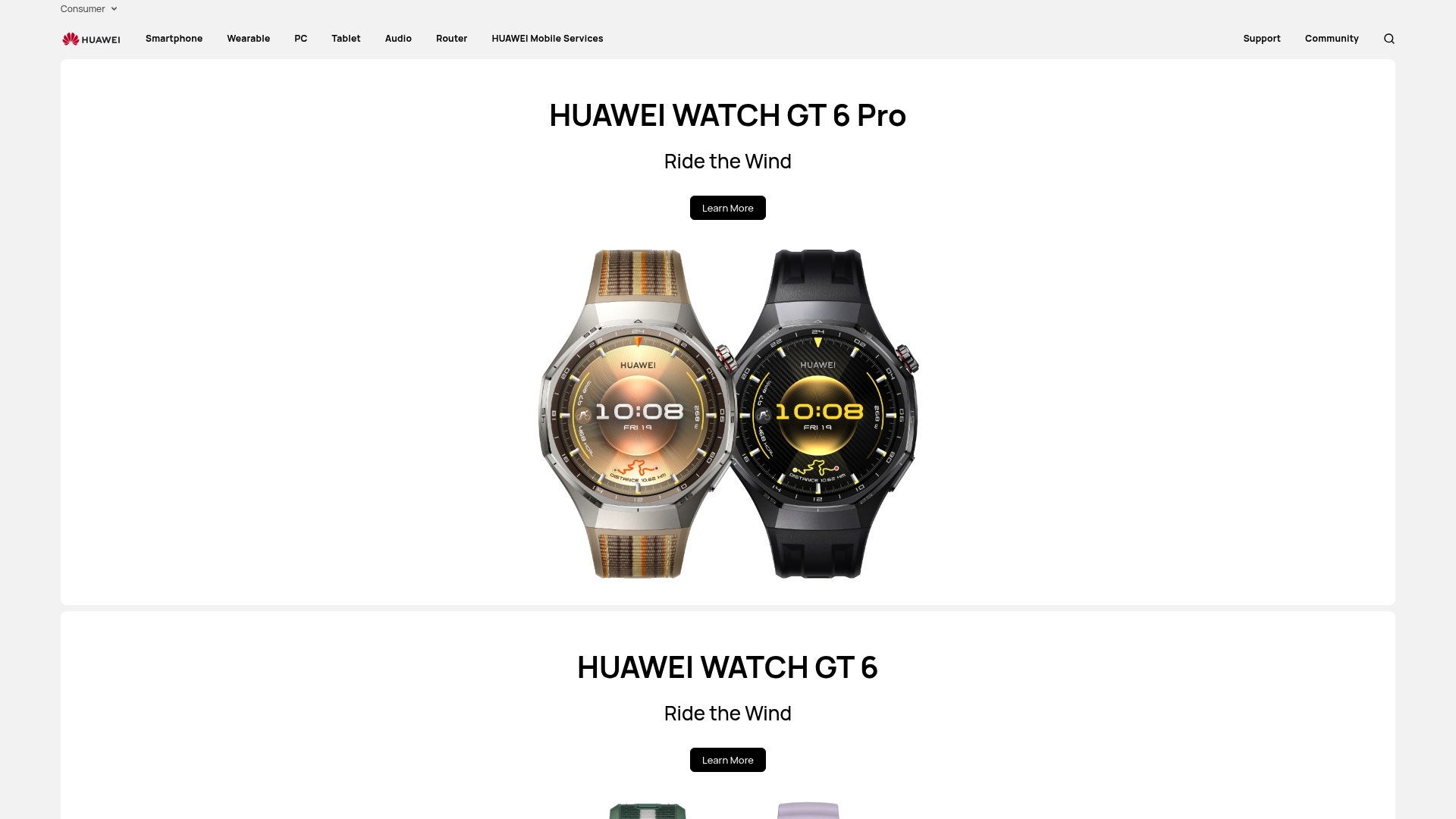
At a Glance
Huawei Consumer Products delivers a broad ecosystem of devices — from smartphones and wearables to laptops, tablets, audio gear, and smart-home tech — aimed at everyday use and innovation. The brand emphasizes premium design and frequent software updates, with a clear focus on integrating health and fitness into wearables. If you want a single manufacturer to cover communication, productivity, and basic home automation, Huawei makes a compelling, well-rounded case.
Core Features
Huawei’s portfolio centers on variety and integration: premium-designed smartphones, health-focused wearables, laptops and tablets for work and leisure, wireless audio devices, and smart home/IoT products. The site shows frequent product launches and ongoing updates, suggesting a commitment to improving user experience over time. In practical terms, that means you can mix a Huawei phone, a smartwatch for fitness tracking, and a laptop for productivity and expect consistent styling and interconnected product messaging across the lineup.
Pros
- Wide product range: Huawei offers a broad selection of devices so you can outfit communication, work, fitness, and home automation needs from one vendor. This simplifies buying decisions and accessory compatibility.
- Innovative, high-quality design: The product descriptions emphasize premium design, which appeals if you value durability and a polished aesthetic in your gadgets.
- Regular updates and launches: Frequent software and product updates indicate active development and a willingness to improve device capabilities over time.
- Global availability and support: Huawei’s global presence means access to support and distribution channels in many markets, which reduces friction when purchasing or seeking service.
- Health and fitness focus in wearables: Wearables are highlighted for health monitoring and fitness features, making them relevant for men over 40 who want actionable health data.
Cons
- Third-party redirects on the website: The site contains third-party links that can redirect users away from Huawei’s official pages, which can be confusing and interrupt research flow.
- Sparse single-page specifications: Specific product specs and deep technical details often require drilling into individual product pages, meaning initial browsing can feel high-level.
- Region-specific features: Some capabilities and products may only be available in certain regions, so availability and function can vary depending on where you live.
Who It’s For
Huawei Consumer Products is best for tech-minded men over 40 who want a cohesive set of devices covering communication, fitness tracking, work, and home convenience without juggling multiple unrelated brands. You get design consistency and health-focused wearables that fit a midlife pivot toward better fitness or productivity.
Unique Value Proposition
Huawei’s main strength is its ecosystem approach combined with a clear emphasis on design and wearable health features. For users who prefer consolidating devices under a single brand that pushes frequent improvements, Huawei balances innovation with everyday practicality.
Real World Use Case
Imagine buying a Huawei smartphone to stay connected, pairing it with a Huawei smartwatch to track sleep and workouts, and using a Huawei laptop for remote work—one brand, consistent updates, and a unified support channel to simplify ownership.
Pricing
Pricing information varies per product and region; detailed pricing is listed on individual product pages.
Website: https://consumer.huawei.com
Amazfit
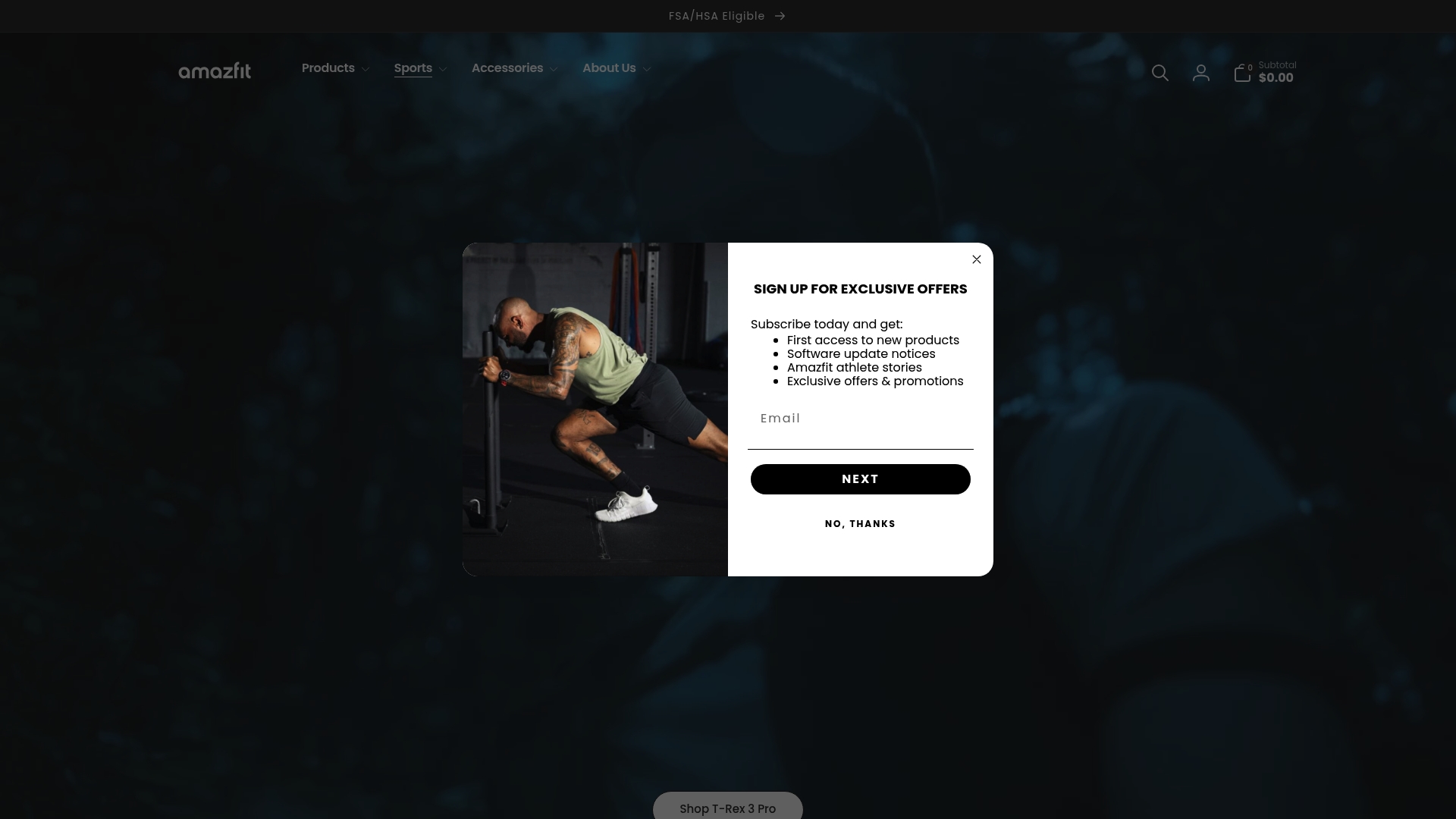
At a Glance
Amazfit delivers a broad lineup of smartwatches and fitness bands that balance health tracking, style, and everyday convenience. If you want an entry point into wearable health monitoring without locking into a single model, Amazfit’s range gives choices across budget and premium tiers. The Zepp app ties metrics together, while contactless payments and customizable watch faces add practical polish. Expect variety—and the need to pick the right series for your priorities.
Core Features
Amazfit devices focus on health and activity monitoring: continuous heart rate tracking, blood-oxygen saturation measurement, sleep quality analysis, and multi-sport activity tracking are core offerings. You can download online watch faces and swap quick-release wristbands to match workouts or dressier occasions. The Zepp app provides a central hub for reviewing trends and personalizing displays, and some models include contactless payment options for hands-free purchases.
Pros
- Wide product selection meets diverse needs: Amazfit’s multiple series let you choose simpler bands or full-featured smartwatches depending on budget and use case.
- Comprehensive health and fitness features: Heart rate, SpO2, sleep tracking, and activity logs give a complete snapshot of daily health and exercise.
- Customization is straightforward: Online watch face downloads and quick-release bands make it easy to change the look without tools.
- Supportive community and resources: Global customer support and community channels help you find tips, watch faces, and troubleshooting advice.
- Contactless payments add convenience: Where available, pay-from-your-wrist options remove the need to carry cards during quick errands.
Cons
- Pricing and durability details vary by model, so you must research each series to understand value and longevity.
- The many separate product lines can overwhelm buyers who want a simple “one-size-fits-most” recommendation.
- Availability differs by region, which may limit access to specific models or payment features in some markets.
Who It’s For
Amazfit is best for active individuals over 40 who want a flexible wearable without a single rigid path: casual exercisers who want reliable daily health metrics, weekend hikers who value outdoor tracking, and style-conscious users who swap bands and faces. If you like options and want something from budget-friendly to premium, Amazfit offers that ecosystem.
Unique Value Proposition
Amazfit’s strength is choice: the brand packages robust health features across a spectrum of devices so you can prioritize price, battery life, or advanced sensors. The Zepp app and downloadable watch faces let you tailor both function and form, while contactless payments and community resources extend practicality beyond pure fitness tracking.
Real World Use Case
Picture this: you wear an Amazfit watch during a morning run to capture heart rate and SpO2, glance at sleep scores after a restless night, then switch to a dressier band for an afternoon meeting. You check workout trends in the Zepp app that evening and download a new watch face to match tomorrow’s plans. Simple, adaptable, and integrated.
Pricing
Pricing varies by series and features, spanning budget to premium segments—check specific models for exact prices.
Website: https://amazfit.com
Garmin
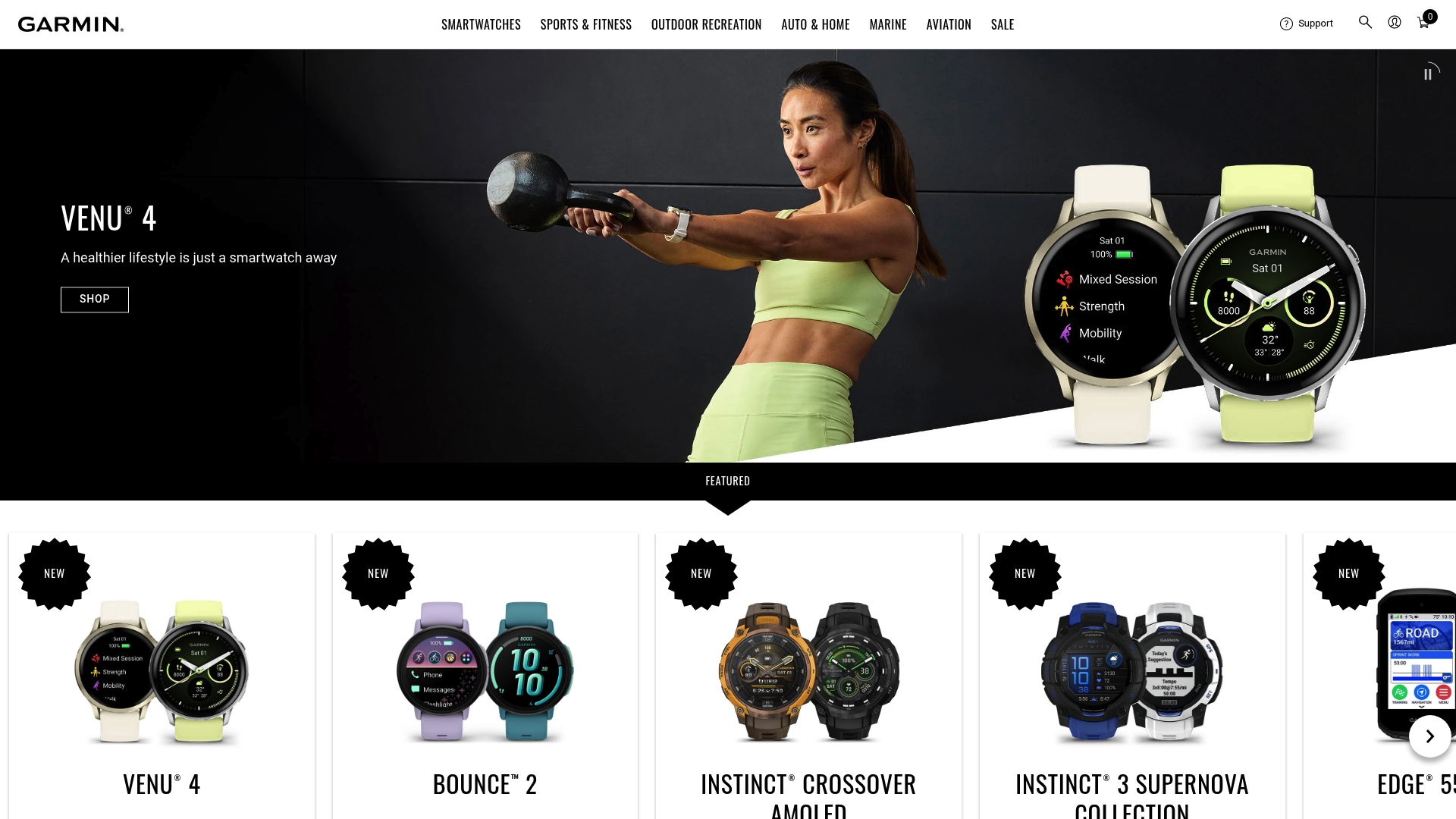
At a Glance
Garmin is a broad-reaching provider of GPS-enabled devices spanning aviation, marine, outdoor, fitness, and wearables, supported by an extensive online portal. In short: it’s a trusted navigation and device ecosystem with robust global reach and steady product updates. If you want proven GPS hardware plus an online hub for support and orders, Garmin delivers—but expect a learning curve when you first arrive on the site. This is a reliable choice if navigation accuracy and industry breadth matter to you.
Core Features
Garmin’s core strengths are its wide range of GPS-enabled products and a centralized web experience for support and account management. The site groups offerings by category—aviation, marine, outdoor, fitness, and wearables—so you can find products tailored to specific activities or professional needs. The online portal provides support centers for troubleshooting and product help, and it lets you manage orders and account details in one place. The combination of hardware variety and an integrated support ecosystem is the foundation of Garmin’s offering.
Pros
- Diverse product range across industries: Garmin serves aviation, marine, outdoor, and fitness users, so you can pick devices designed for specialized use rather than a one-size-fits-all watch.
- Comprehensive support resources: The website centralizes support centers, making it easier to access troubleshooting guides and product help when issues arise.
- Simple account and order management: The online portal includes order processing and account features that streamline purchases and device registration.
- Global presence and recognized brand: Garmin’s established name in GPS technology means widespread availability and acceptance among professionals and enthusiasts.
- Regular updates and new product launches: The company’s cadence of updates and new releases keeps device capabilities evolving over time.
Cons
- Limited product detail up front: The homepage and top-level pages don’t always include deep product specifics, which can make initial comparison shopping slower.
- Complex navigation for new users: The site’s breadth can feel overwhelming, and finding the exact device or support article requires patience and exploration.
- Online support details not always specific: While there are broad support centers, some online resources lack the fine-grained, step-by-step guidance you might hope for.
Who It’s For
Garmin is best for individuals and professionals who need reliable GPS navigation hardware and a single vendor that covers multiple activity types. Think pilots, mariners, outdoor adventurers, and fitness-minded men who want gear designed for a particular environment rather than a general consumer gadget. If you value brand reliability and a product ecosystem, Garmin fits well.
Unique Value Proposition
Garmin’s unique value is its combination of deep industry coverage (aviation to marine) and a unified online hub for support and account management. That vertical breadth—paired with a reputation for navigation expertise—means you can buy a device tailored to a specific real-world use and rely on centralized support and order tools.
Real World Use Case
Imagine a marine technician who needs updated charting hardware and support: they can order a marine GPS unit, register it through their Garmin account, and access marine-specific troubleshooting guides through the support center—streamlining purchase, setup, and technical help in one place.
Pricing
Not specified in the provided content.
Website: https://garmin.com
Fitbit
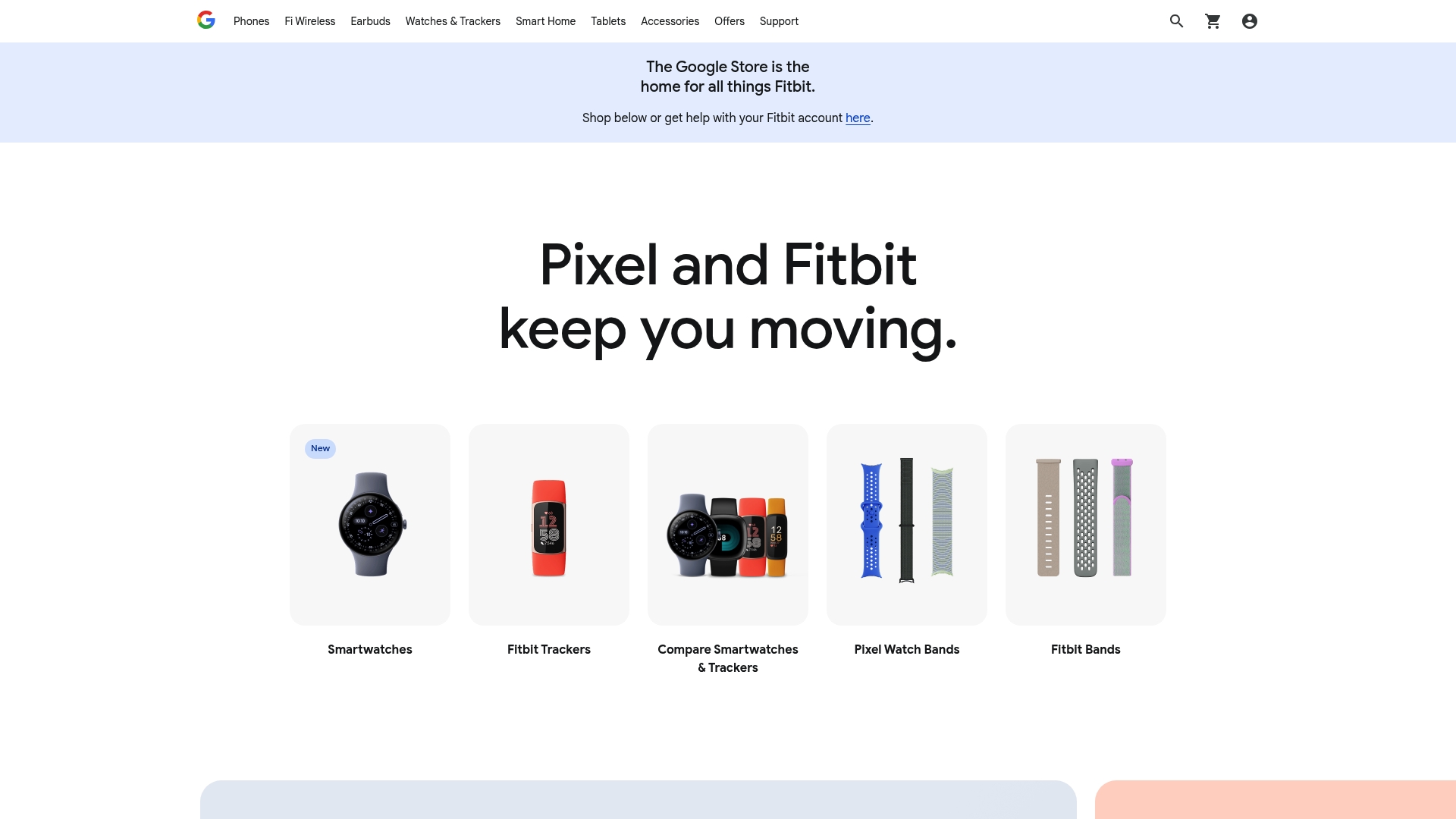
At a Glance
Fitbit offers a broad family of activity trackers, smartwatches, and accessories that focus squarely on health and fitness monitoring. For men over 40 looking to track sleep, stress, and daily activity while tapping into Google connectivity, Fitbit delivers relevant tools and insights. Expect useful personalized recommendations from the Fitbit app, but note that the deepest analytics are gated behind Fitbit Premium and some features depend on device compatibility and regional availability. Overall: reliable hardware, smart ecosystem, with a paywall for advanced guidance.
Core Features
Fitbit’s lineup spans simple activity bands to full-featured smartwatches, all built around continuous health and fitness monitoring. Core capabilities include step and workout tracking, sleep staging and stress management metrics, and personalized health insights and workout recommendations delivered through the Fitbit app. Fitbit devices integrate with Google services such as Google Maps and Google Wallet for navigation and payments, and the platform supports additional connectivity to smart home systems and mobile apps. Fitbit Premium adds guided workouts, deeper analytics, and longer-term trends for users who want structured coaching.
Pros
- Diverse product range: Fitbit provides models that suit casual users through fitness enthusiasts, so you can pick a device that matches your activity level and budget.
- Health-forward tracking: Sleep, stress, and continuous fitness monitoring are core strengths, giving you daily metrics that help spot patterns and make adjustments.
- Google integration: Integration with Google apps like Maps and Wallet adds practical functionality for navigation and payments on supported devices.
- Personalized insights: The Fitbit app delivers tailored workout recommendations and health insights that adapt to your behavior over time.
- Support and warranty: Standard support and warranty services are available, which helps if you need device repairs or replacements.
Worth noting.
Cons
- Subscription limits access: Several advanced features and deeper insights require a Fitbit Premium subscription, which means extra recurring cost for full functionality.
- Compatibility caveats: Some features may be limited or work best with Android devices, so your experience can vary if you use other platforms.
- Regional differences in features: Certain capabilities are not uniformly available worldwide, so you may find features missing depending on where you live.
Who It’s For
Fitbit is ideal for men over 40 who want a reliable, health-centered wearable that scales from basic activity tracking to guided fitness programs. If you value sleep and stress monitoring, want occasional navigation or payment features on your wrist, and are open to a subscription for deeper insights, Fitbit fits well. If you prefer an all-in-one premium experience without subscriptions, you might weigh that trade-off.
Unique Value Proposition
Fitbit’s strength is its balanced ecosystem: hardware that’s easy to wear daily, an app that translates data into actionable insights, and Google integrations that make smartwatches genuinely useful beyond basic tracking. The layered approach—device plus app plus optional Premium—lets you choose how much guidance you pay for.
Real World Use Case
Picture wearing a Fitbit Versa 4 to log daily steps and swims, check sleep stages each morning, follow a weekly guided workout in Fitbit Premium, and use Google Maps on your wrist to navigate a new walking route—while handling notifications and payments with a tap.
Pricing
Pricing varies by model and configuration; specific prices are not listed on the site.
Website: https://fitbit.com
Polar
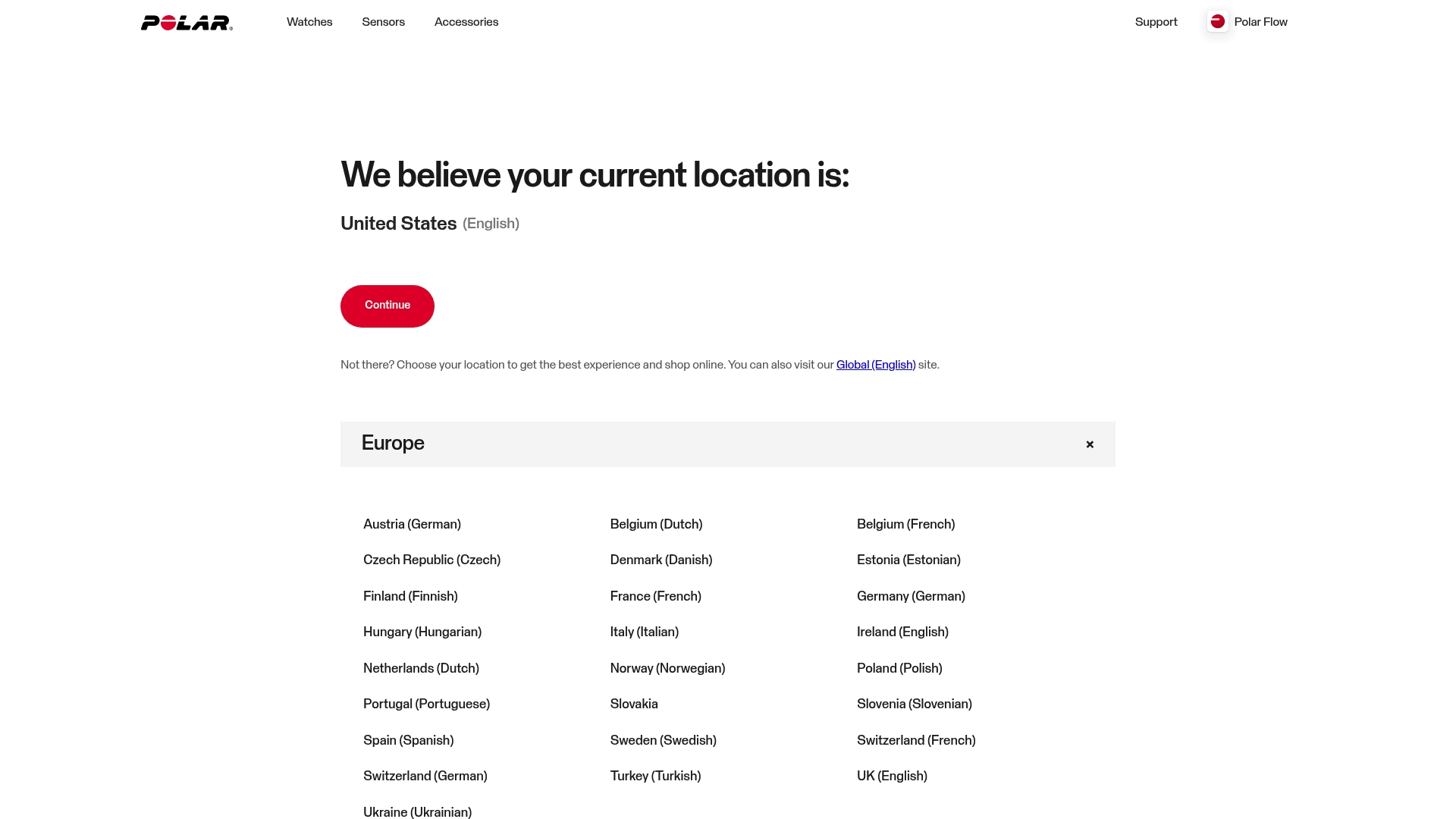
At a Glance
Polar delivers a focused suite of heart rate monitors, fitness trackers, and sports watches backed by a global platform called Polar Flow. For men over 40 who want reliable physiological data and a community to support training decisions, Polar offers clear strengths: proven sensor hardware, a dedicated training ecosystem, and broad regional support. It isn’t a one-size-fits-all lifestyle tracker, though — details about specific models, pricing, and subscription requirements aren’t provided in the source material, so you’ll want to confirm the fine print before committing.
Core Features
Polar’s core capabilities concentrate on accurate health and performance monitoring: heart rate monitors, fitness trackers, sports watches, and a range of sensors and accessories. All of these feed into the Polar Flow support and community platform, which aggregates activity data, training history, and community insights. The system is explicitly positioned for athletic and fitness activities and supports multiple languages and regions, making it practical for users who travel or live in multilingual areas.
Pros
- Wide product range: Polar offers devices across multiple categories—heart rate monitors, fitness trackers, and sports watches—so you can pick hardware that matches your training intensity and goals.
- Global presence and regional support: The brand operates in Europe, the Americas, Asia Pacific, and the Middle East, which means localized customer service and language support are likely available.
- Strong training ecosystem: Polar Flow provides a community platform and training insights that help you track progress and plan sessions over time.
- Integration-ready accessories: The availability of dedicated sensors and accessories means Polar can extend core devices for more advanced metrics and sport-specific setups.
- High-quality sensors: The product data highlights strong sensor quality, suggesting accurate physiological readings when used as intended.
Cons
- Limited product detail: The provided content lacks detailed specifications for individual models, which makes it hard to compare battery life, display, or durability.
- Unclear pricing: There’s no pricing information in the snippet, so total cost of ownership is unknown until you check product pages or retailers.
- Subscription uncertainty: The source does not say whether Polar Flow requires a subscription or if advanced analytics are gated behind recurring fees.
Who It’s For
Polar is best for men over 40 who take training seriously: runners, cyclists, gym-goers, and recreational athletes who want reliable heart rate data and structured training feedback. If you value actionable performance metrics and a supportive community, Polar’s ecosystem is tailored to that need. If you only want casual step counting or a fashion-forward smartwatch, Polar may offer more performance detail than you need.
Unique Value Proposition
Polar combines specialized sensor hardware with an integrated training platform (Polar Flow) and regional support, positioning itself as a comprehensive solution for data-driven training. The focus on sports watches and dedicated accessories sets it apart from general consumer wearables that prioritize lifestyle features over athletic precision.
Real World Use Case
A runner straps on a Polar sports watch and paired heart rate monitor for interval sessions, records each workout to Polar Flow, then reviews intensity and recovery trends over weeks to tweak pacing and rest days. The community and platform analytics help fine-tune training without guesswork.
Pricing
Not specified in the provided content
Website: https://polar.com
Garmin
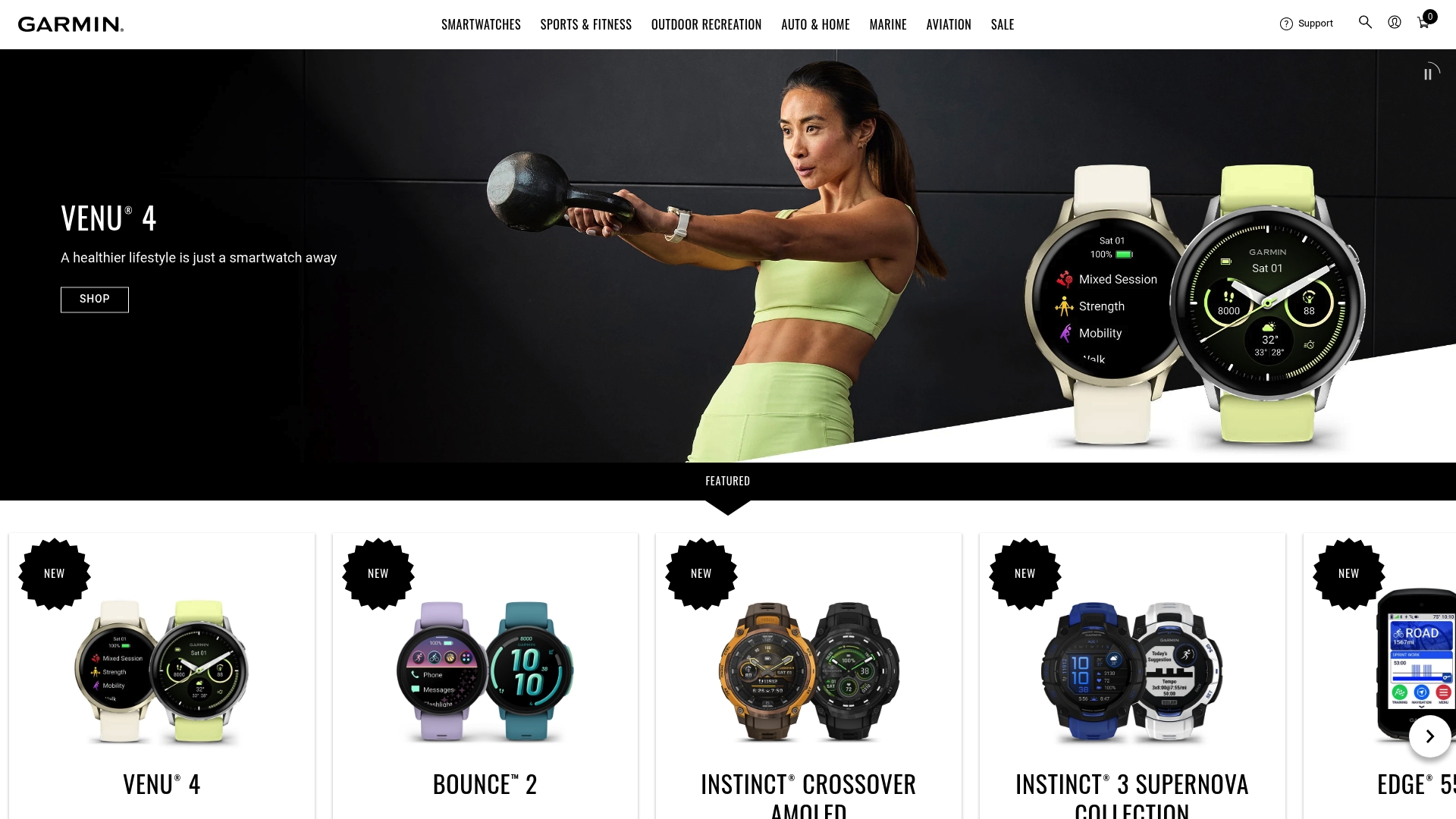
At a Glance
Garmin is a long-established technology company focused on GPS navigation and wearable devices across aviation, marine, fitness, and outdoor markets. The site acts as a hub for shopping, account management, and a robust support center tailored to specialized users like aviators and mariners. If you want an all-in-one place to buy devices and get product-specific help, Garmin delivers a focused, service-oriented experience. It’s practical and straightforward — not flashy, but reliable.
Core Features
Garmin’s web presence emphasizes customer support and commerce: a dedicated support center for general assistance, specialized help sections for aviation, marine, and navionics products, user account management for orders and sign-in, and a full e-commerce platform for purchasing devices and accessories. The site is organized to route you quickly to product-specific resources or purchasing flows rather than to deep product specs in a single snapshot.
Pros
- Comprehensive support resources are clearly prioritized, which helps you get targeted assistance for device setup, troubleshooting, or firmware updates.
- A wide range of specialized products is represented, so whether you’re looking for marine nav gear or fitness wearables, the site reflects Garmin’s multi-market reach.
- User account management features make order tracking and service requests simpler, keeping your purchase history and device registrations in one place.
- E-commerce functionality enables you to browse and buy from Garmin’s catalog directly, reducing friction between researching and purchasing.
Cons
- Limited information in the provided content means product-level specs and in-depth feature comparisons are not visible in this snapshot, so you may need to dig deeper on the site for technical details.
- Website navigation or content details appear minimal based on the scraped content, which could make discovering specific feature lists or comparisons slower than expected.
- Pricing is not specified in the provided content, so you’ll need to visit product pages or contact sales to get up-to-date cost details.
Who It’s For
Garmin is best for individuals or organizations seeking navigation, fitness, or outdoor technology with industry-specific support — think pilots, boaters, serious outdoor enthusiasts, and fitness-minded users who value manufacturer-backed assistance. If you prefer buying from the source and having direct access to specialized help, Garmin fits that approach.
Unique Value Proposition
Garmin’s strength is the combination of vertical expertise (aviation, marine, outdoor) and integrated services: purchase, account management, and product-specific support all under one roof. That continuity reduces the guesswork when you need parts, updates, or service tied to a particular device.
Real World Use Case
Imagine you need a new GPS chartplotter for boating: you can browse products, compare options, purchase through the e-commerce section, register the device to your account, and access marine-specific support if installation or charts need help. It’s a single workflow from research to resolution.
Pricing
Not specified in the provided content.
Website: https://garmin.com
Withings ScanWatch 2
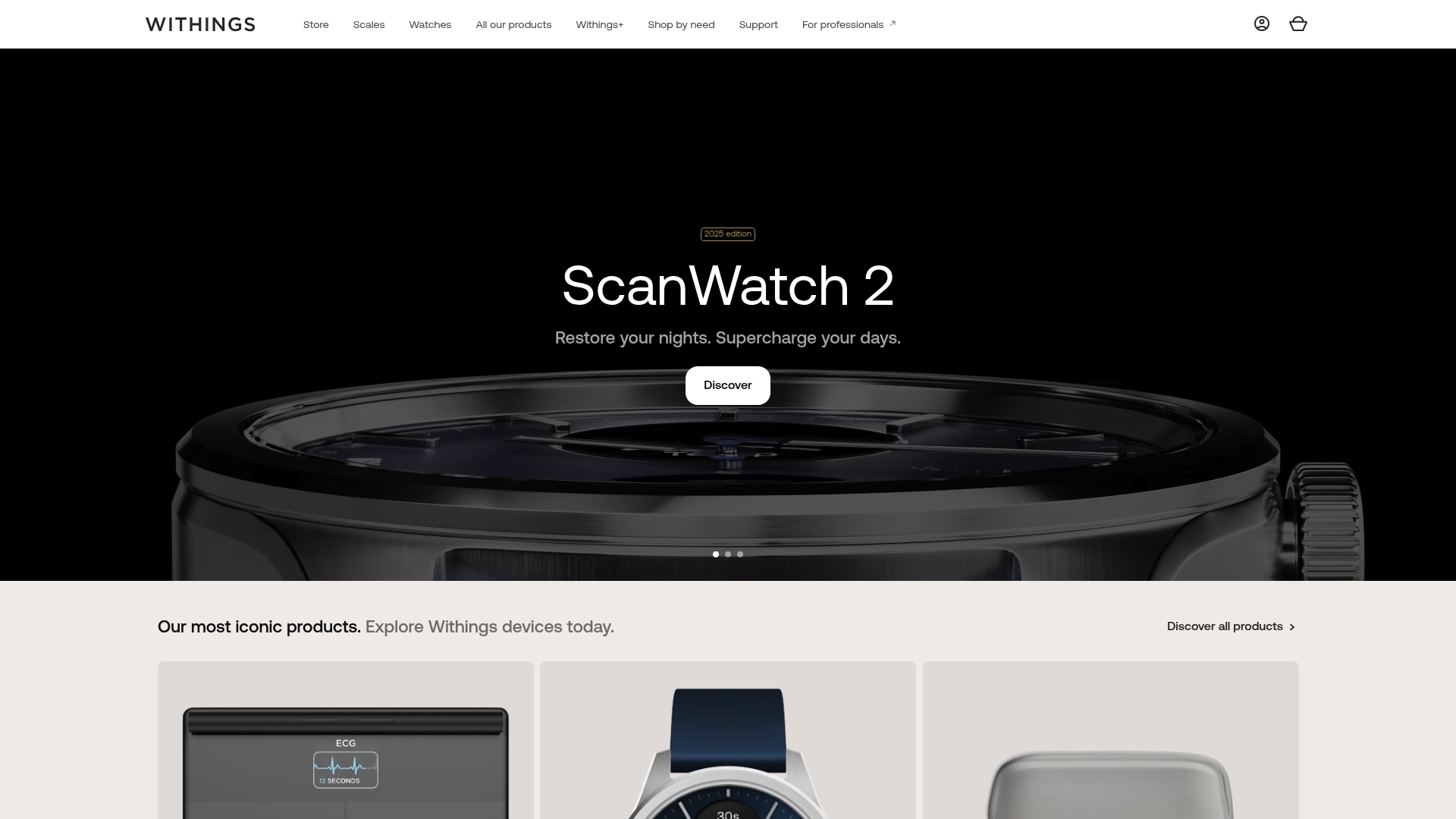
At a Glance
The Withings ScanWatch 2 positions itself as a clinically oriented health tracker that brings medical-grade measurements into daily use. It focuses on sleep analysis, heart-rate and activity monitoring, and integrates with Withings’ wider ecosystem (blood pressure monitors, Body Scan, and scales) for fuller context. If you want a tracker that leans toward clinical accuracy and long-term health trends rather than flashy smartwatch features, this is a serious contender. It’s built for users who want data they can act on. No gimmicks. Real numbers.
Core Features
ScanWatch 2 centers on clinically validated health monitoring and deep sleep analysis, capturing sleep patterns and providing actionable insights through the Withings app. It monitors activity and heart rate continuously and is designed to work with connected blood pressure monitors for cardiovascular tracking. For body-composition goals, ScanWatch 2 integrates into the Body Scan ecosystem and Withings scales, allowing a more holistic view of your progress over time. The company supports users with free health data analysis, 30-day returns, and multiple payment or warranty options.
Pros
- Clinically validated accuracy: The product emphasizes clinical validation, which gives you confidence that the numbers you see are built on medical-grade methods.
- Comprehensive health tracking: It combines sleep, activity, heart-rate monitoring, blood pressure integration, and body-composition pairing to give a fuller picture of health than a basic step counter.
- User-friendly app and visualization: Withings’ app presents data in clear visual formats, making it easier to spot trends and make adjustments without digging through confusing charts.
- Customer-friendly policies: Free and easy returns within 30 days, plus FSA/HSA payment options and warranty choices, reduce the risk of trying the device.
- Community feedback available: Verified user reviews and community input help you see how the device performs for real people over time.
Cons
- Pricing can be high for some users: With products ranging broadly in price, you may find the ScanWatch 2 or complementary devices push beyond a typical budget for a single tracker.
- Compatibility nuances require checking: Specific features and which peripherals are supported depend on the broader Withings ecosystem, so you’ll need to confirm compatibility before buying.
- Unclear long-term app costs: The snippet lacks detail about possible subscription fees or long-term costs tied to advanced features, which adds uncertainty about total ownership cost.
Who It’s For
This is ideal for men over 40 who take health tracking seriously — especially those managing cardiovascular risk, monitoring sleep quality, or using body-composition data to guide weight and fitness goals. If you prefer clinically grounded insights and plan to use the device as part of a broader health routine (scales, BP cuffs, Body Scan), the ScanWatch 2 fits well.
Unique Value Proposition
ScanWatch 2 stands out by prioritizing clinically validated measurements and ecosystem integration over gimmicks, offering meaningful health metrics you can trust and act on. It’s less about notifications and more about tracking the signals that matter for midlife health.
Real World Use Case
Imagine tracking restless nights and seeing sleep-stage trends week-by-week, while paired weight and blood-pressure readings show how a new evening routine affects both sleep and cardiovascular numbers. You act on real data and iterate. Better sleep. Better numbers. Better days.
Pricing
From approximately US$ 179.95 (higher-end configurations up to US$ 499.95).
Website: https://withings.com
Amazfit
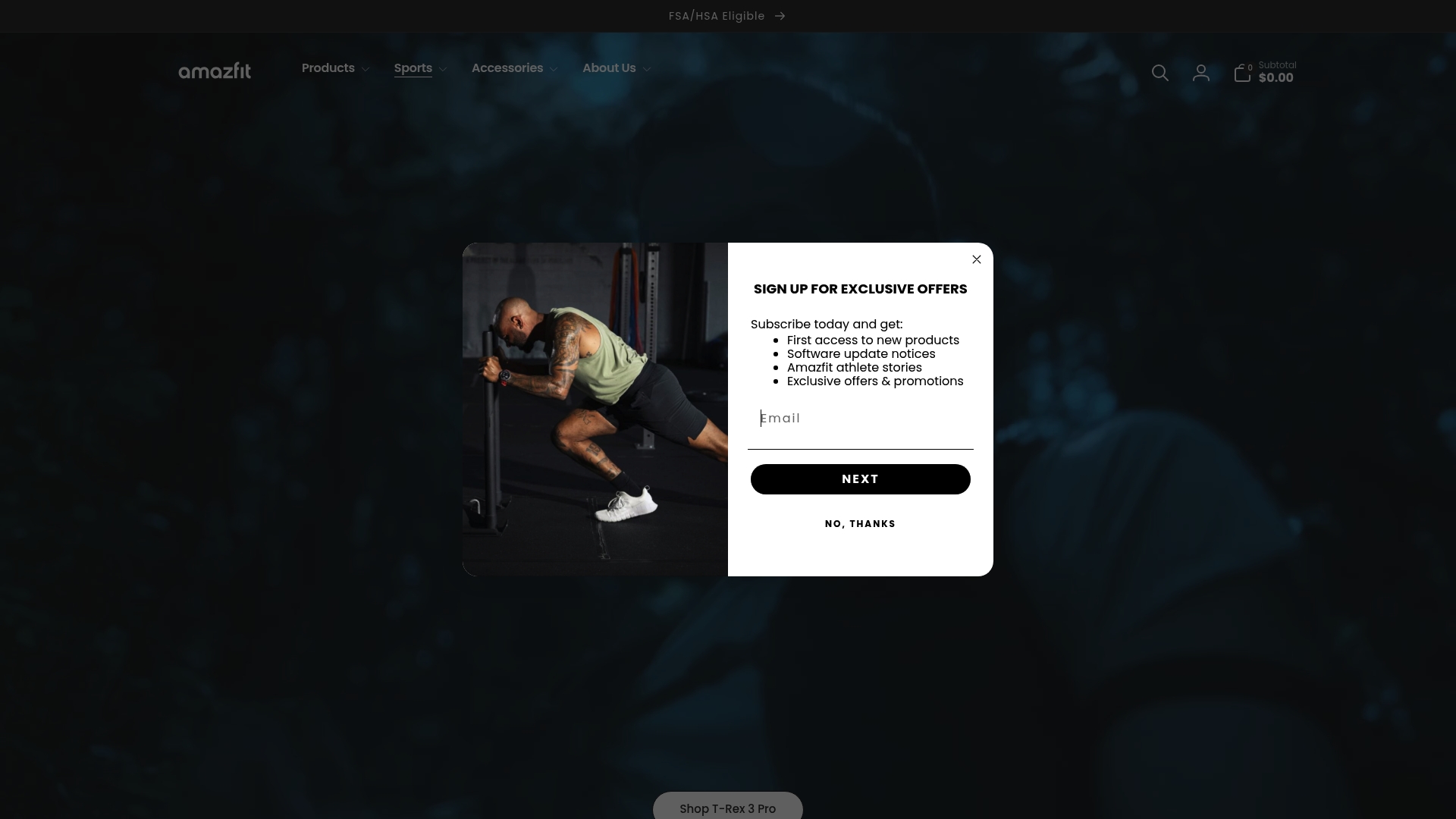
At a Glance
Amazfit offers a wide lineup of smartwatches and accessories that blend health-focused sensors with wearable style, making it a practical choice for men over 40 who want tech that looks good on the wrist. The brand emphasizes comprehensive health tracking—heart rate, sleep, blood-oxygen—and customization through downloadable watch faces and straps. It also ties devices into the Zepp ecosystem for coaching, membership perks, and contactless payments. That said, the product pages included here lack granular specs and explicit pricing, so you may need to confirm availability and cost before committing.
Core Features
Amazfit’s core capabilities center on smartwatch fitness tracking: continuous heart rate monitoring, sleep quality analysis, and blood-oxygen (SpO2) measurement, all synced through the Zepp app. You can download and customize watch faces, switch between multiple sports modes, and access health assessments and coaching features via Zepp Fitness Membership. The brand also offers accessories like straps and gift cards, plus contactless payments using Zepp Pay for everyday convenience.
Pros
- Wide range of models: Amazfit offers multiple smartwatch styles and feature sets, so you can pick a device that fits casual fitness, serious training, or everyday wear without compromising looks.
- Comprehensive health and fitness tools: Built-in heart rate, sleep, and blood-oxygen monitoring provide a broad picture of daily wellness and training recovery.
- Strong customization: You can personalize your watch with downloadable faces and interchangeable straps, which helps the device feel like part of your personal style.
- Global online availability: Purchasing through the official online store makes it easier to buy and access support across many markets.
- Added ecosystem services: Zepp Fitness Membership and Zepp Pay extend the watch beyond tracking to coaching and contactless payments, adding practical value.
Cons
- Limited product detail in provided content: The information here doesn’t include specific sensor accuracy, battery life numbers, or exact model comparisons, making apples-to-apples decisions harder.
- Pricing not specified: Without clear price points, evaluating value for money requires additional research on the official site or retailers.
- Availability variance by country: Some models, accessories, or services may not be sold in every market, which can complicate buying or warranty support.
Who It’s For
Amazfit is ideal for men over 40 who want a versatile smartwatch that handles day-to-day health tracking and workout support while still looking appropriate for work or evening plans. It suits casual exercisers who want clear sleep and heart data, weekend adventurers who need sports modes, and style-conscious users who swap straps and faces to match outfits.
Unique Value Proposition
Amazfit stands out by combining a broad product range, practical health features, and a customization ecosystem (Zepp app, straps, watch faces) that lets you tailor both function and form—without locking you into a single look or single use case.
Real World Use Case
Imagine wearing an Amazfit that tracks your HR and SpO2 during an early-morning run, analyzes your sleep pattern that afternoon, delivers calendar and message alerts at work, and then switches to a classic watch face with a leather strap for dinner—all while syncing coaching suggestions to the Zepp app.
Pricing
Pricing details are not specified in the content provided.
Website: https://amazfit.com
Honor
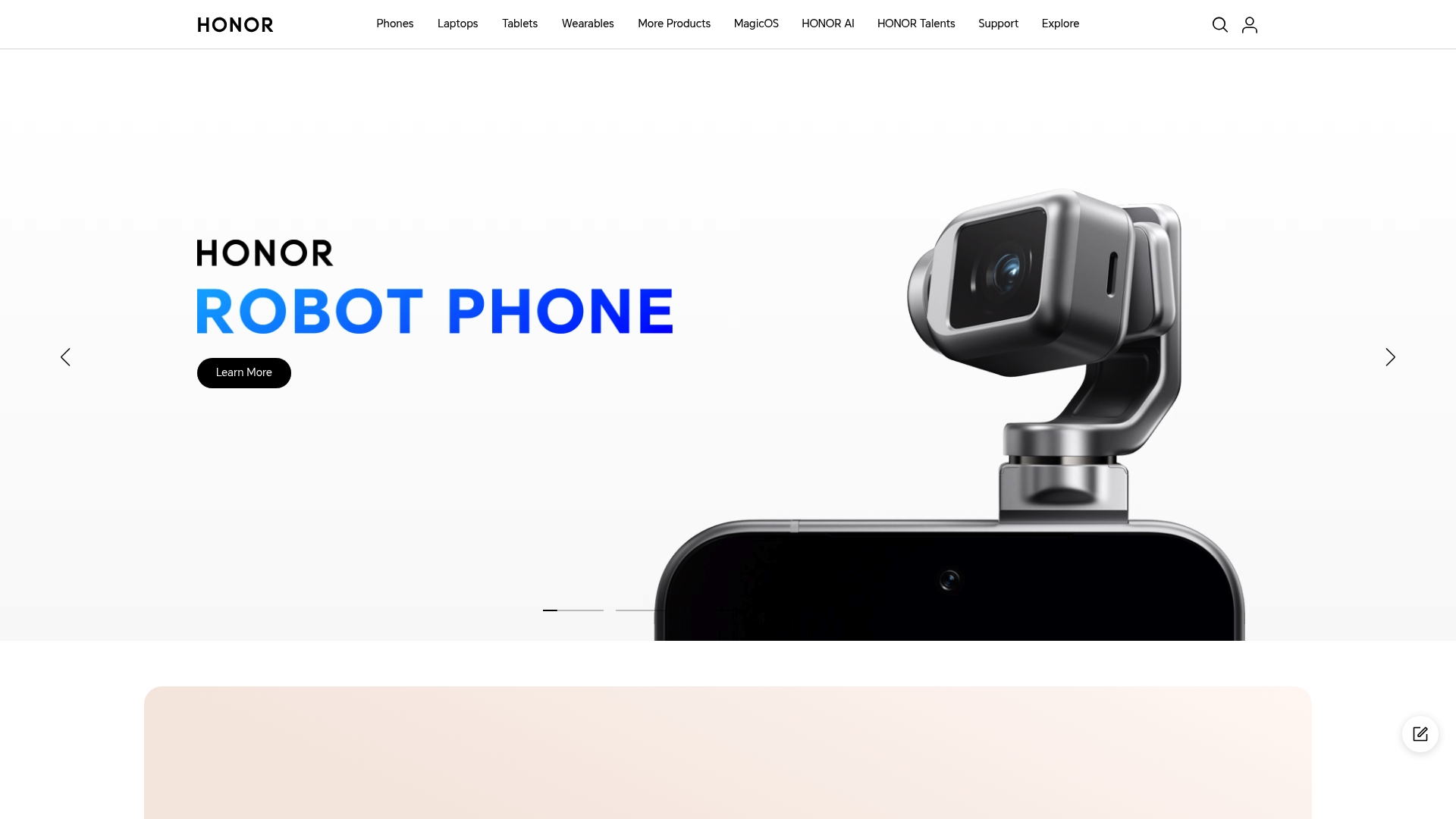
At a Glance
Honor is a broad consumer-technology brand offering smartphones, laptops, tablets, wearables, and audio gear with a clear focus on sleek design and AI-driven features. For men over 40 who want modern devices without flashy frills, Honor delivers practical performance across several product lines like the Magic and X series and the MagicBook laptops. The ecosystem includes wearables with health and fitness tracking, making it a convenient one-stop tech choice for daily life, work, and basic fitness tracking. That said, region-dependent availability and limited specification detail on the homepage mean you’ll want to confirm exact models and specs before buying.
Core Features
Honor’s core strengths lie in a diverse product lineup and integration of AI where it matters: camera enhancements on phones, productivity boosts on laptops, and intelligent features across tablets and accessories. The brand pairs design-forward hardware with wearables that cover fundamental health and fitness tracking, while earbuds and headphones round out the ecosystem for on-the-go audio. Honor promotes innovation at multiple price points, aiming to balance modern features with competitive pricing and global reach.
Pros
- Diverse product lineup meets varied needs: Honor offers smartphones, laptops, tablets, wearables, and accessories to cover communication, productivity, fitness, and entertainment without forcing you into a single device category.
- Advanced AI and camera features on smartphones: The Magic and X series emphasize AI-driven photography and smart optimizations that simplify taking better photos in everyday situations.
- Competitive pricing and value proposition: The brand positions itself to offer modern features and sleek design at price points that emphasize value for money.
- Design and innovation focus: Products are described as design-forward, which means you get devices that look contemporary and feel intentional in daily use.
- Global presence with regional sites: Honor’s reach makes it easier to find local information and support in multiple regions when availability is present.
Cons
- Limited specification detail on the homepage: The site does not always provide full technical specifications upfront, which makes side-by-side comparison harder without digging.
- No detailed user reviews or testimonials available online: The lack of visible customer feedback on the main site means you’ll need to seek third-party reviews to validate long-term reliability.
- Product availability may vary by region: Some models and configurations may not be offered everywhere, which can complicate warranties, service, and immediate purchasing options.
Who It’s For
Honor is best for tech-savvy men over 40 who want contemporary devices—smartphones with strong camera features, capable laptops for productivity, and wearables for basic health tracking—without paying flagship premiums. If you appreciate good design, AI conveniences, and a unified set of accessories, Honor fits well. If you need exhaustive specs and local availability certainty, prepare to verify those details before committing.
Unique Value Proposition
Honor’s value is its combination of modern design, AI-enhanced features, and breadth of product categories that let you build a cohesive, reasonably priced personal tech ecosystem—from phone to laptop to wearable—while maintaining an emphasis on accessible innovation.
Real World Use Case
A busy midlife professional uses an Honor Magic smartphone for quick AI-assisted photos and messaging, a MagicBook laptop for day-to-day spreadsheets and video calls, and an Honor smartwatch for basic step, heart-rate, and workout tracking—keeping work, family, and fitness in sync.
Pricing
Pricing details are not specified on the homepage and likely vary by product and region.
Website: https://hihonor.com
realme
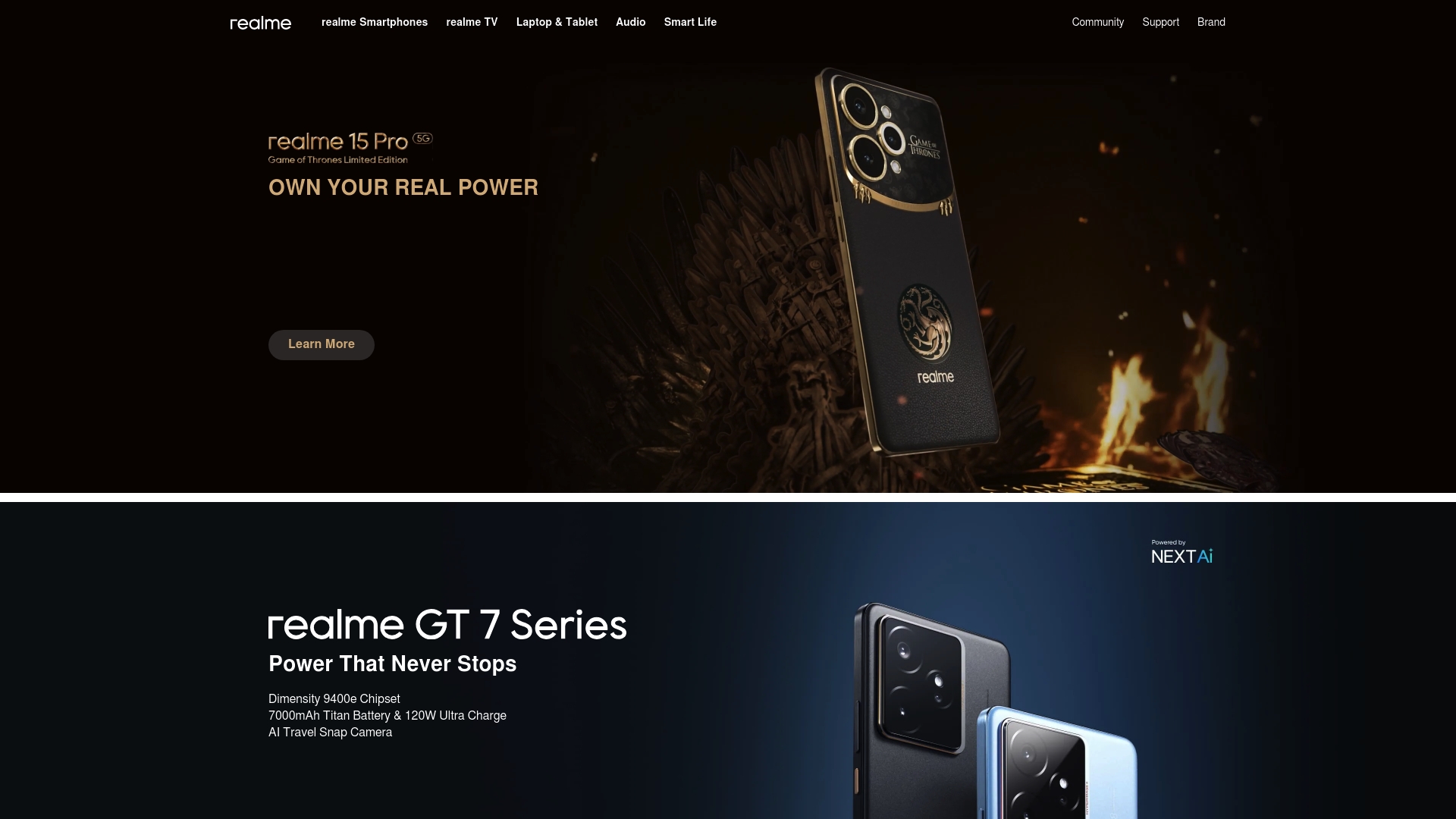
At a Glance
realme positions itself as a value-driven tech brand that leans heavily into performance, battery life, and camera capability. For men over 40 who want a no-nonsense device that handles gaming, travel, and everyday multitasking, realme delivers high-capacity batteries, flagship-class chipsets, and practical camera hardware without a needless premium. It isn’t perfect — regional availability and pricing can complicate choice — but the core offering is solid for performance-minded users.
Core Features
realme’s lineup emphasizes speed, endurance, and imaging: advanced chipsets such as the Dimensity 9400e and Snapdragon® 8 Elite power demanding apps; large batteries like the 7000mAh Titan paired with 120W ultra charge minimize downtime; and camera systems featuring a Sony IMX882 OIS sensor plus AI-assisted travel snapping cover most photo and video needs. The brand also experiments with display tech (Eco²) and distinctive finishes like Magic Glow and pearl textures, blending practical specs with recognizable design cues.
Pros
- Powerful hardware with advanced chipsets: The inclusion of Dimensity and Snapdragon 8-class silicon means smooth multitasking and responsive performance for apps, streaming, and mobile gaming.
- High capacity batteries with fast charging: Large battery capacities and 120W ultra charge reduce anxiety about running out of power on travel days or long work sessions.
- Good camera features suitable for different scenarios: A Sony IMX882 sensor with OIS plus AI modes supports sharper photos and more reliable handheld shots.
- Stylish and innovative design options: Magic Glow lighting effects and pearl finishes give the phones a distinctive look that stands out without being flashy.
- Global community and support presence: A broad user community and brand support in multiple markets help with troubleshooting, tips, and software updates.
Cons
- Prices may vary by market, potentially higher in some regions: The cost advantage isn’t consistent everywhere, so models that feel like bargains in one country may be pricier elsewhere.
- Availability of certain models may be limited in some areas: Specific phones or feature sets shown online may not be sold or supported in every region, complicating purchase and warranty options.
- Some features may be region-specific or brand-dependent: Certain software capabilities, launch colors, or bundled services can differ by market, meaning your preferred spec set might not be available locally.
Who It’s For
realme is best for tech-savvy men over 40 who prioritize value-for-performance: you want a phone that can handle heavy apps, long days away from power plugs, and decent photography without an upscale price tag. If you travel often, enjoy mobile gaming, or want a distinct-looking handset that performs reliably, realme fits that profile.
Unique Value Proposition
realme’s strength is delivering near-flagship performance — advanced SoCs, very large batteries with aggressive fast-charging, and competent camera hardware — while keeping design and community support front and center. It’s the pragmatic choice for buyers who want power and endurance rather than designer branding.
Real World Use Case
Picture a frequent traveler who shoots photos during weekend trips, streams music and podcasts on long flights, and needs a phone that stays alive through long conference days; realme’s large battery, fast charging, and steady camera hardware make that realistic without breaking the bank.
Pricing
Prices vary depending on the model and region, with specific details available on their website.
Website: https://realme.com
Garmin
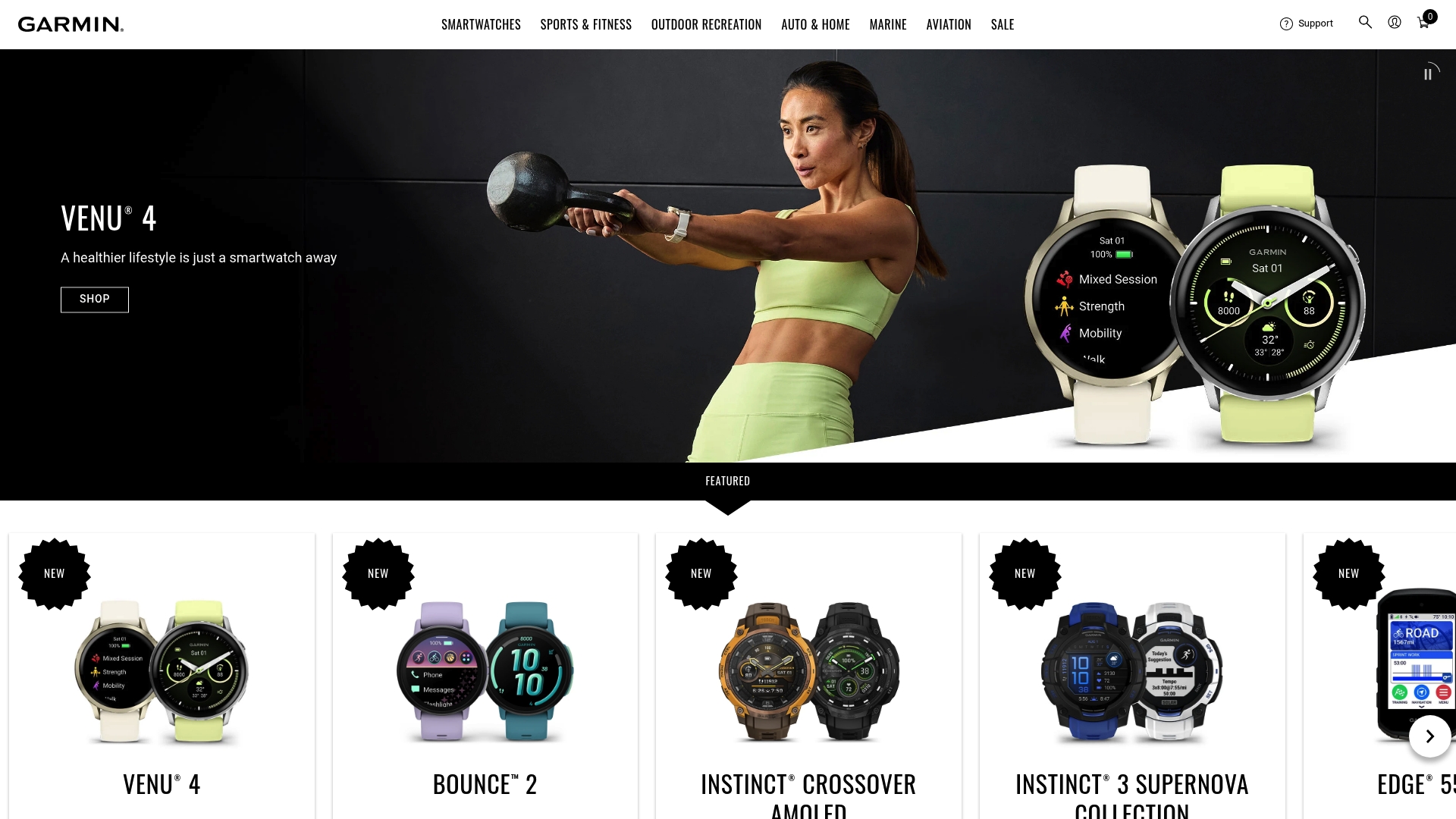
At a Glance
Garmin is a long-established technology company best known for GPS and navigation systems across automotive, outdoor, fitness, marine, and aviation markets. The company’s official site supports shopping, account management, and a support center, making it easy to research and buy hardware and accessories. For men over 40 who value reliable navigation and multi-environment tracking, Garmin presents a recognizable, purpose-driven option — though detailed product specs and pricing are not available in the provided content.
Core Features
Garmin’s core capabilities center on GPS technology applied across multiple sectors: automotive navigation, outdoor and fitness tracking, marine systems, and aviation instruments. The website provides access to support resources and account management tools for purchases and product assistance. While the data here doesn’t dive into device-level features, the company’s breadth suggests a focus on positioning, route tracking, and customer support across specialized markets.
Pros
- Specialization in GPS and navigation solutions: Garmin’s expertise in GPS technology indicates strong foundational know-how for accurate positioning and mapping across contexts.
- Support services across multiple sectors: The presence of a support center tailored to different markets suggests accessible troubleshooting and product assistance when you need it.
- Online shopping and account management: You can research and purchase devices directly through the site and manage orders via an account, which simplifies buying and post-purchase support.
Cons
- Limited product details available: The provided content does not include specific product specifications, which makes direct comparisons or model selection difficult.
- No specific product information or features shown: Because device-level features (sensors, battery life, app ecosystem) aren’t documented here, it’s hard to assess fitness-tracker suitability for midlife needs.
- Pricing not specified in the provided content: Without clear pricing or tier information, planning a purchase or comparing value is challenging.
Who It’s For
If you’re a man over 40 who prioritizes proven navigation technology—whether for driving, sailing, hiking, or training—Garmin is aimed at you. It’s particularly relevant for those who need specialized GPS solutions or want a vendor with cross-environment product lines and formal support channels. If you prefer to evaluate models in detail before buying, however, you’ll need additional information beyond what’s provided here.
Unique Value Proposition
Garmin’s unique strength is its broad, cross-industry application of GPS expertise paired with an online storefront and support infrastructure. That combination makes it a one-stop source for navigation hardware and the assistance to keep it working across demanding environments.
Real World Use Case
A professional sailor uses Garmin marine GPS devices to navigate and track routes during sailing competitions, relying on dedicated marine mapping and support services to plan tides, courses, and equipment troubleshooting.
Pricing
Not specified in the provided content.
Website: https://garmin.com
Xiaomi
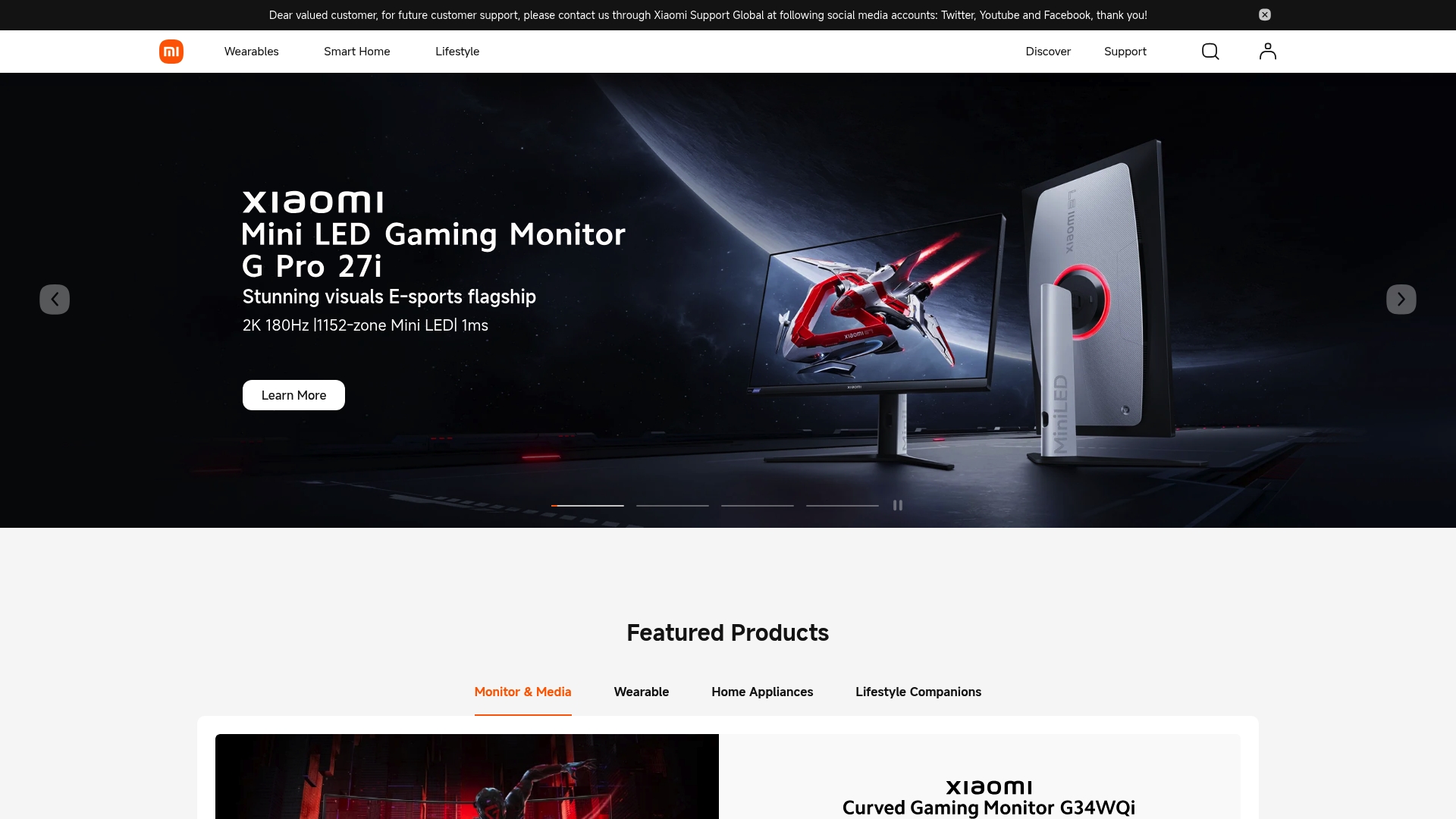
At a Glance
Xiaomi presents a broad consumer-electronics ecosystem that combines high-refresh gaming monitors, smart home devices, and air quality solutions into a single brand experience. For men over 40 who want high-performance visuals and practical smart-home benefits, Xiaomi delivers compelling hardware and integrated services. However, the provided content lacks clear pricing and detailed specs, which makes direct comparisons and buying decisions harder. Bottom line: powerful hardware and ecosystem potential, but expect to dig deeper for model-level details.
Core Features
Xiaomi’s public content emphasizes several core areas: high refresh-rate displays (up to 180Hz) with Mini LED and WQHD options for sharper, smoother visuals; a smart home ecosystem that ties monitors, speakers, air purifiers, and other appliances together; air purifiers with allergen removal and real-time quality monitoring; and wireless speakers designed for long battery life and immersive sound. The site also highlights environmental initiatives and customer support resources like user guides, warranties, and live support channels.
Pros
- Wide product range that spans monitors, smart home devices, and audio gear, which makes it easier to build a single-vendor smart home setup.
- Emphasis on high-performance gaming and professional monitors, giving competitive refresh rates and advanced screen tech for clearer visuals.
- Visible commitment to environmental and community initiatives, which is reassuring if sustainability matters to you.
- Comprehensive customer support and warranty services are promoted, which can reduce friction during setup and troubleshooting.
- Integrated smart ecosystem capabilities enable devices to work together, simplifying automation and remote control in a connected home.
Cons
- The scraped website content focuses on product categories and highlights but lacks detailed technical specifications for individual models, making direct comparisons difficult.
- Pricing and model availability are not specified in the content provided, so you can’t confirm value or shop for the best-fit model from this summary alone.
- Language inconsistency between English and Chinese in the provided content may cause confusion or require extra effort to verify product details.
Who It’s For
Xiaomi is ideal for tech-savvy men over 40 who want performance-focused displays for gaming or work, and who appreciate a single brand that covers audio, air quality, and smart-home control. If you value integrated ecosystems and strong display specs, Xiaomi is a sensible place to start—just be prepared to confirm the exact model specs and prices before buying.
Unique Value Proposition
Xiaomi’s unique value is breadth plus integration: high-refresh monitors and mini-LED visuals paired with a connected smart-home lineup and supportive services, offering a cohesive hardware ecosystem rather than isolated gadgets.
Real World Use Case
Think of a competitive gamer or visual professional using a 180Hz WQHD monitor for crisp motion and quick response, while their living room benefits from an air purifier and wireless speakers managed through the same brand’s app—streamlined, consistent, and supported.
Pricing
Not specified in the content provided.
Website: https://mi.com
Amazfit
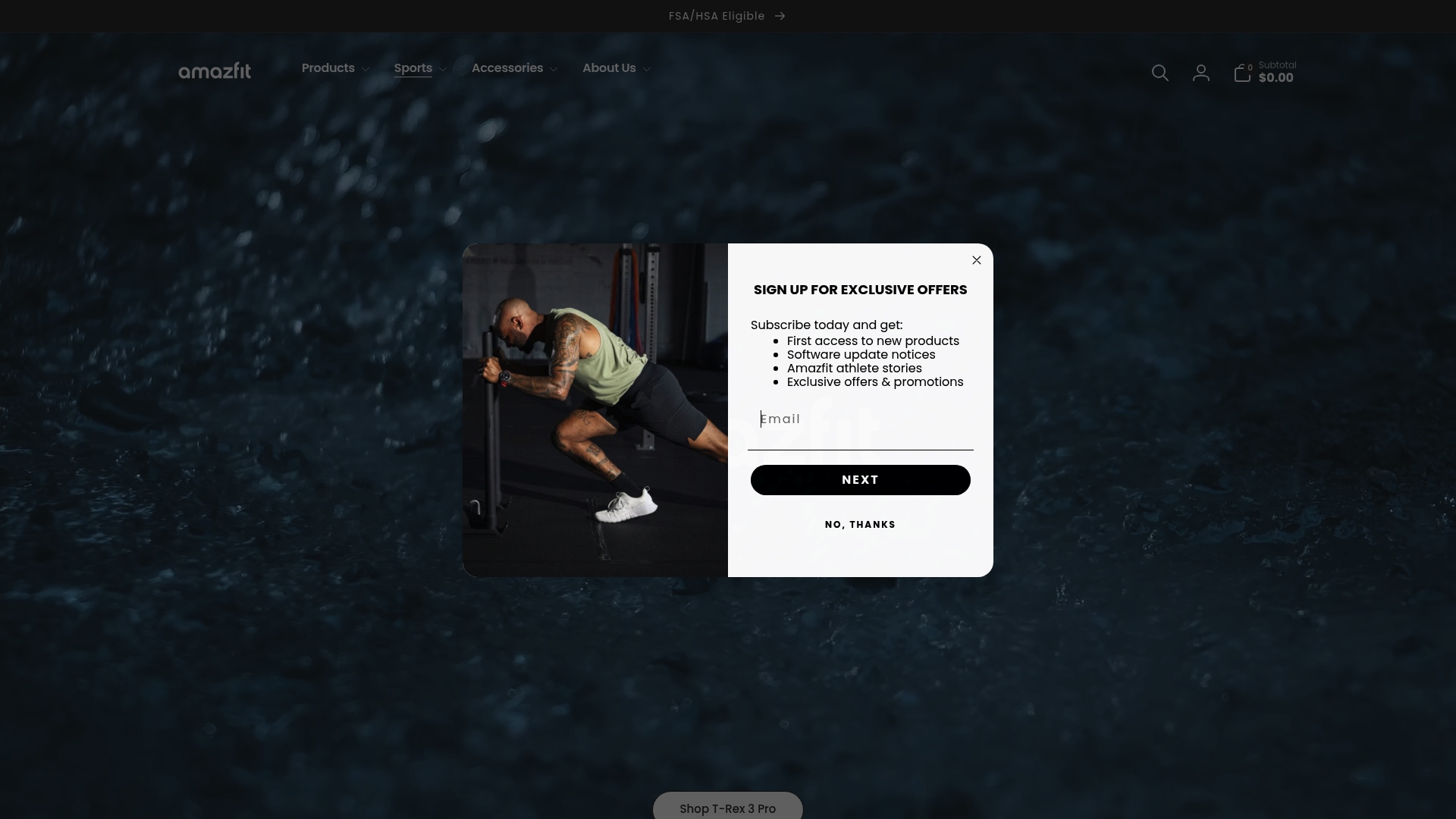
At a Glance
Amazfit is an official online store offering a broad lineup of smartwatches, fitness bands, and accessories aimed at health-conscious users and outdoor adventurers. Its strength lies in a flexible ecosystem—Zepp app support, contactless payments, and downloadable watch faces—designed to make tracking everyday health and intense workouts easier. However, the product catalog is large and pricing details aren’t clearly provided in the source data, which can make comparison shopping slower than it should be.
Core Features
Amazfit’s core capabilities center on multipurpose wearables that combine advanced GPS, heart-rate monitoring, sleep analysis, and blood-oxygen tracking across multiple device series tailored to different activities and styles. The platform supports extensive customization with watch faces and accessories, plus integration with the Zepp app for centralizing activity and health data. Several models emphasize outdoor durability and sports features, while others prioritize fashion-forward design for everyday wear.
Pros
- Extensive product variety: The catalog covers many user needs and preferences, from rugged GPS watches for hikers to sleek bands for daily wear.
- Advanced health and fitness tracking features: Devices monitor heart rate, sleep quality, and blood-oxygen levels, which supports both casual wellness checks and structured training.
- Customization options: You can personalize your device with downloadable watch faces and a range of accessories to suit style or function.
- App and payment integrations: Support for the Zepp app centralizes your data, and select models include contactless payment options for convenience on the go.
- Outdoor and sports orientation: Strong emphasis on outdoor features like GPS and rugged design makes some models well suited for serious adventurers.
Cons
- Pricing not specified in the provided content, which makes it hard to assess value or compare models without visiting the store.
- Large product catalog may complicate navigation, so finding the right model quickly could be frustrating for buyers who want a straightforward decision.
- No warranty or after-sales support details provided, leaving uncertainty about service, returns, or repair policies based on the source information.
Who It’s For
Amazfit fits you if you’re a health-conscious fitness enthusiast, an outdoor adventurer who needs reliable GPS and durable hardware, or a tech-savvy user who values customization and app-driven insights. If you want a balance of style and performance, the range allows you to prioritize looks or rugged functionality depending on your lifestyle and training goals.
Unique Value Proposition
Amazfit’s unique value is its ecosystem approach: a wide selection of purpose-built devices combined with the Zepp app, downloadable watch faces, and payment features that together create a flexible wearable platform. You’re not just buying a watch; you’re tapping into a configurable system suited to multiple phases of midlife fitness and outdoor activity.
Real World Use Case
Imagine training for a marathon: you wear an Amazfit GPS-enabled watch to track routes and pace, monitor heart rate during intervals, and review sleep quality and oxygen saturation in the Zepp app to tune recovery—giving you a concise data loop to optimize workouts and rest.
Pricing
Pricing: Not specified in the provided content
Website: https://amazfit.com
Fitbit
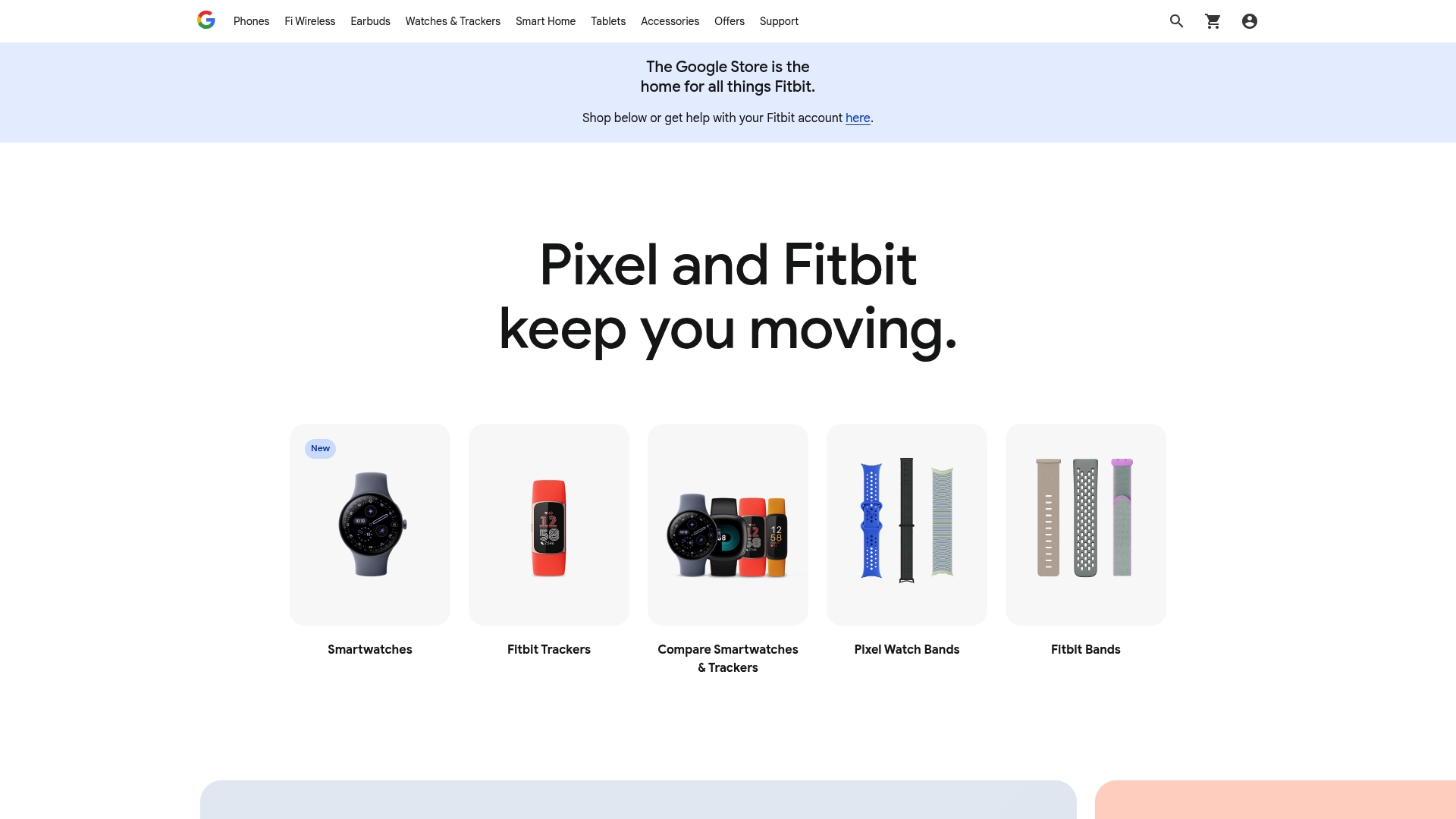
At a Glance
Fitbit delivers a broad ecosystem of activity trackers and smartwatches aimed at helping you stay active and track health over time. The brand pairs hardware—from basic trackers to premium smartwatches—with Fitbit Premium, which provides deeper health insights and daily readiness scores. It integrates with Google apps for added convenience, but some advanced functions and the best insights require a paid subscription or higher-end devices.
Core Features
Fitbit’s core capabilities include activity tracking across steps, workouts, and daily movement, plus smartwatch features on select models. Fitbit emphasizes compatibility with Google services such as Maps and Wallet, offers a daily readiness score to help you decide when to push workouts, and provides advanced health insights and personalized recommendations via Fitbit Premium. The site also highlights an ecosystem of accessories—bands, chargers, and protective services—to customize and protect your device.
Pros
- Wide selection of devices: Fitbit offers everything from simple trackers to premium smartwatches, making it easy to find a model that fits your needs and budget.
- Integration with Google ecosystem: The ability to use Google apps like Maps and Wallet on compatible models adds practical daily convenience.
- Personalized health insights: Fitbit Premium delivers tailored recommendations and advanced analytics that can help you optimize workouts and recovery.
- Cross-device compatibility: Fitbit supports multiple devices and platforms, which helps if you use different phones or want to pair several wearables.
- Accessory support and services: A broad range of bands, chargers, and protective options makes it simple to customize how your tracker looks and performs.
Cons
- Cost can be high: Devices and subscription fees for Fitbit Premium can add up, especially if you opt for premium smartwatches.
- Feature gating behind subscriptions: Several advanced insights and recommendations require Fitbit Premium or specific device models to access.
- Homepage lacks durability and battery detail: The site provides limited information about device durability and battery life on the main pages, so you may need to dig deeper before buying.
Who It’s For
Fitbit is best for men over 40 who want a scalable approach to health: simple daily tracking now, and more in-depth metrics as you commit. If you value integrated health insights, plan structured workouts, or rely on Google apps, Fitbit fits neatly into that lifestyle. It’s also good for those who like swapping bands and personalizing hardware.
Unique Value Proposition
Fitbit combines a wide hardware range with an evolving software ecosystem—especially Fitbit Premium—to turn raw activity data into actionable guidance like daily readiness scores and personalized recommendations. That blend of hardware choice plus insight-driven coaching sets Fitbit apart from simple step counters.
Real World Use Case
Imagine tracking your daily steps and sleep with a midrange Fitbit, checking a daily readiness score each morning, and then following a recommended workout while using Google Maps to navigate a new outdoor route. You customize the look with a new band and review weekly trends in the app to adjust training and recovery.
Pricing
Varies by device; specific prices are not listed on the homepage and range from basic models to premium smartwatches and trackers.
Website: https://fitbit.com
Garmin
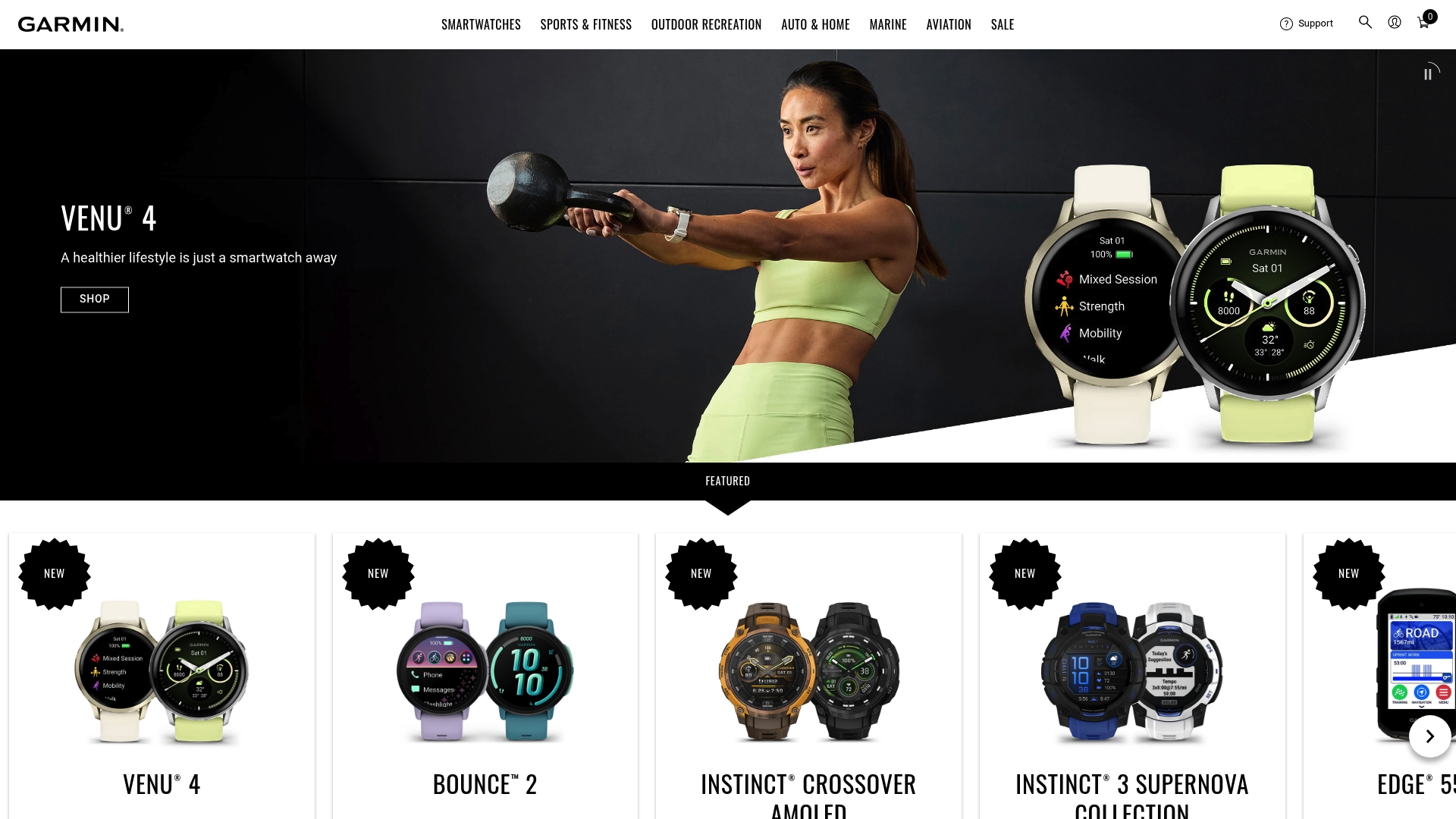
At a Glance
Garmin is a long-established name in GPS and navigation technology that brings a broad portfolio spanning aviation, marine, outdoor, and fitness contexts. On the official site you’ll find robust account management, order handling, and support resources aimed at getting devices working reliably. The homepage is more of a gateway to services and support than a product-spec showcase, which helps if you need help quickly but can slow you down if you’re comparison-shopping. Bottom line: dependable company, clear support focus, but expect to dig deeper for product specs and pricing.
Core Features
Garmin’s website emphasizes support and services across multiple sectors—aviation, marine, outdoor, and fitness—plus practical account and order management tools. Primary capabilities highlighted include product support resources, account features for warranty and device management, and e-commerce options for purchasing devices and accessories. The site acts as a centralized hub to access firmware updates, manuals, and service contact points rather than a one-page deep dive into every product detail.
Pros
- Comprehensive support options for different sectors: The site provides targeted support resources for aviation, marine, outdoor, and fitness users, making troubleshooting more straightforward.
- Established brand with a broad product range: Garmin’s reputation and wide product lineup give users confidence in finding a device that fits specialized navigation or fitness needs.
- User account and order management features are available: You can manage orders, registrations, and service requests from the official site, simplifying after-sale tasks.
- Official site likely to feature the latest products and support: The homepage acts as the authoritative source for firmware, downloads, and official announcements.
- Accessible navigation for support and account functions: Support and account areas are easy to find, which helps when you need help quickly.
Cons
- Limited specific product information on the homepage: The front page prioritizes support and navigation rather than immediate access to detailed specs and comparisons.
- No direct product details or specifications provided on the homepage: You’ll need to click into product pages to find the technical data that serious buyers require.
- Lack of visible pricing details: The site does not display pricing prominently on the homepage, so cost comparisons require extra steps.
- Navigation might require further browsing for detailed product insights: Finding deep-dive comparisons or explicit fitness-tracker feature lists can take time and several clicks.
Who It’s For
Garmin is best for individuals and professionals who need reliable GPS and navigation tools across aviation, marine, outdoor, or fitness contexts and who value strong after-sale support. If you prioritize vendor support, firmware updates, and the ability to manage orders and accounts centrally, Garmin fits well. If you want instant price-and-spec comparisons on the homepage, prepare for a little extra digging.
Unique Value Proposition
Garmin’s strength lies in combining a broad device ecosystem with centralized support and account services, making it easy to buy, register, update, and service navigation hardware from a single source. That continuity—from purchase to long-term support—is where Garmin differentiates itself.
Real World Use Case
A hiker or coastal sailor uses Garmin devices to navigate routes, log tracks, and then relies on the website to download maps, update firmware, and register the product for warranty and service—keeping hardware and data synchronized over time.
Pricing
Not specified on the homepage.
Website: https://garmin.com
Garmin
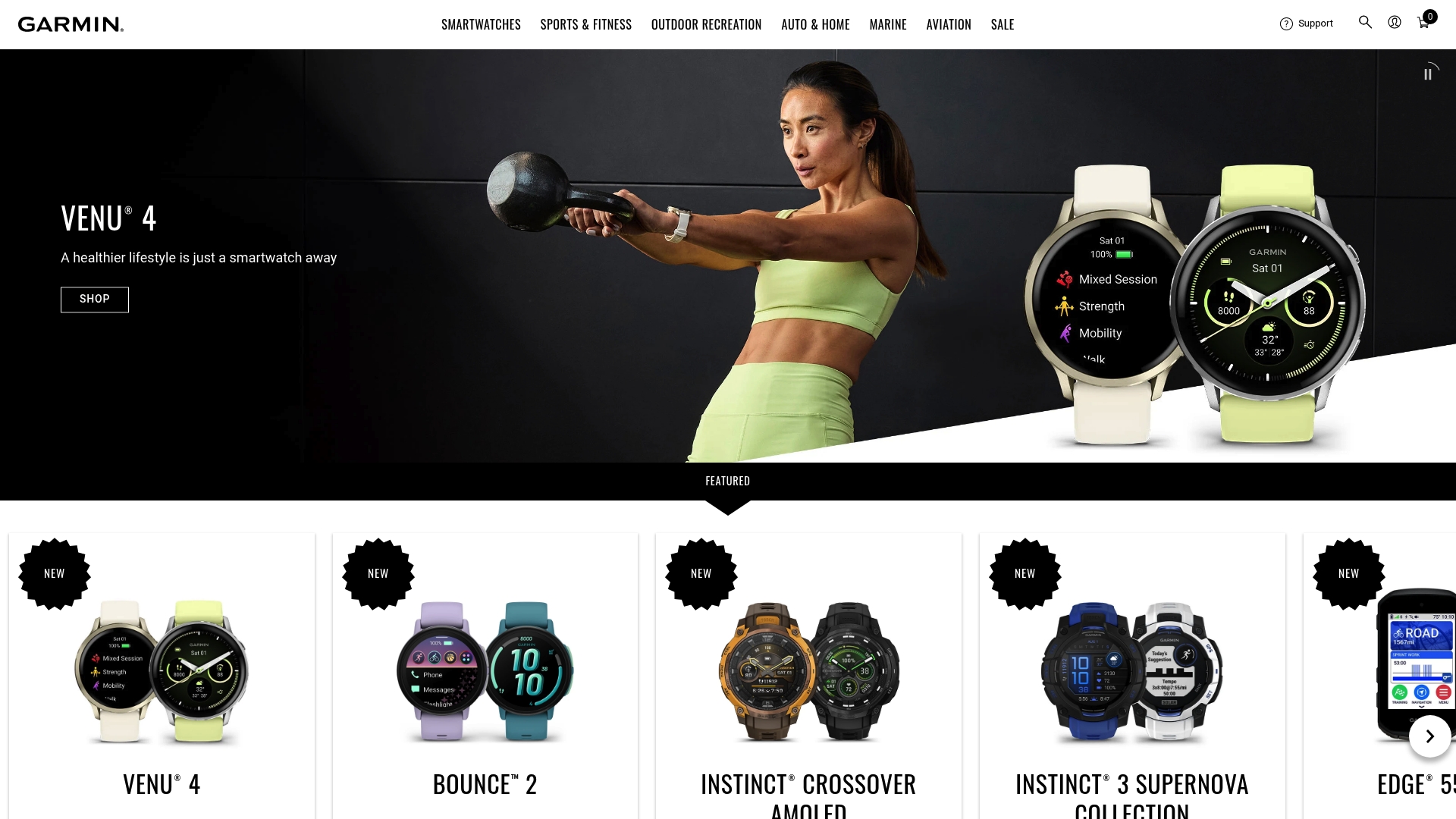
At a Glance
Garmin’s official site functions as a centralized hub for buying products, managing accounts, and getting support across specialties like aviation, marine, and outdoor activities. If you already own a Garmin device or know what you need, the site makes it straightforward to find support and complete purchases. However, if you’re browsing to research specific product specs without clicking into individual pages, the snapshot content can feel thin.
Core Features
The website emphasizes customer-facing services rather than single-product storytelling. Core features include dedicated support sections tailored to aviation, marine, and outdoor use cases; account management tools to track orders and settings; an online shopping cart for purchases; and a support center for troubleshooting and resources. The structure is clearly service-oriented: buy, register/manage, and get help.
Pros
- Specialized support across sectors: The site organizes help and documentation by aviation, marine, and outdoor categories, making it easier for professionals and enthusiasts to locate relevant resources.
- Online shopping and checkout: You can purchase Garmin products directly through the site, keeping research and buying within one official channel.
- Account management features: Registered users can manage orders and device registrations, which simplifies warranty and support interactions.
- Comprehensive online support resources: The support center aggregates manuals, FAQs, and assistance paths in one place so users don’t have to search multiple forums.
- Official source from a reputable brand: This is Garmin’s official portal, so product authentication, warranties, and official software links come from the manufacturer.
Cons
- Limited product detail at glance: The homepage snapshot doesn’t provide deep technical specifications without visiting individual product pages, which slows comparative research.
- Navigation leans toward support/account tasks: The site’s focus on service and accounts can make product discovery feel secondary for first-time browsers.
- Minimal introductory content for new visitors: Newcomers seeking an overview of what makes Garmin unique may find the initial content sparse and needing more narrative context.
Who It’s For
This site is best for buyers who already know they want Garmin technology, existing customers needing support, and professionals in aviation, marine, or outdoor fields who require manufacturer-specific resources. If you’re upgrading, registering a device, or troubleshooting, Garmin’s portal is designed to move those tasks along efficiently.
Unique Value Proposition
Garmin’s website brings manufacturer-level reliability to shopping and support: it combines official product purchase paths with tailored sector support and account management. The unique value is having one official place to authenticate products, access specialized documentation, and manage device services.
Real World Use Case
Imagine you purchased a device for boating and need a software update plus a calibration guide: you’d log into your Garmin account, access the marine support section, download the latest files, and track your order history — all without leaving the official site.
Pricing
Not specified in the provided content.
Website: https://garmin.com
Polar
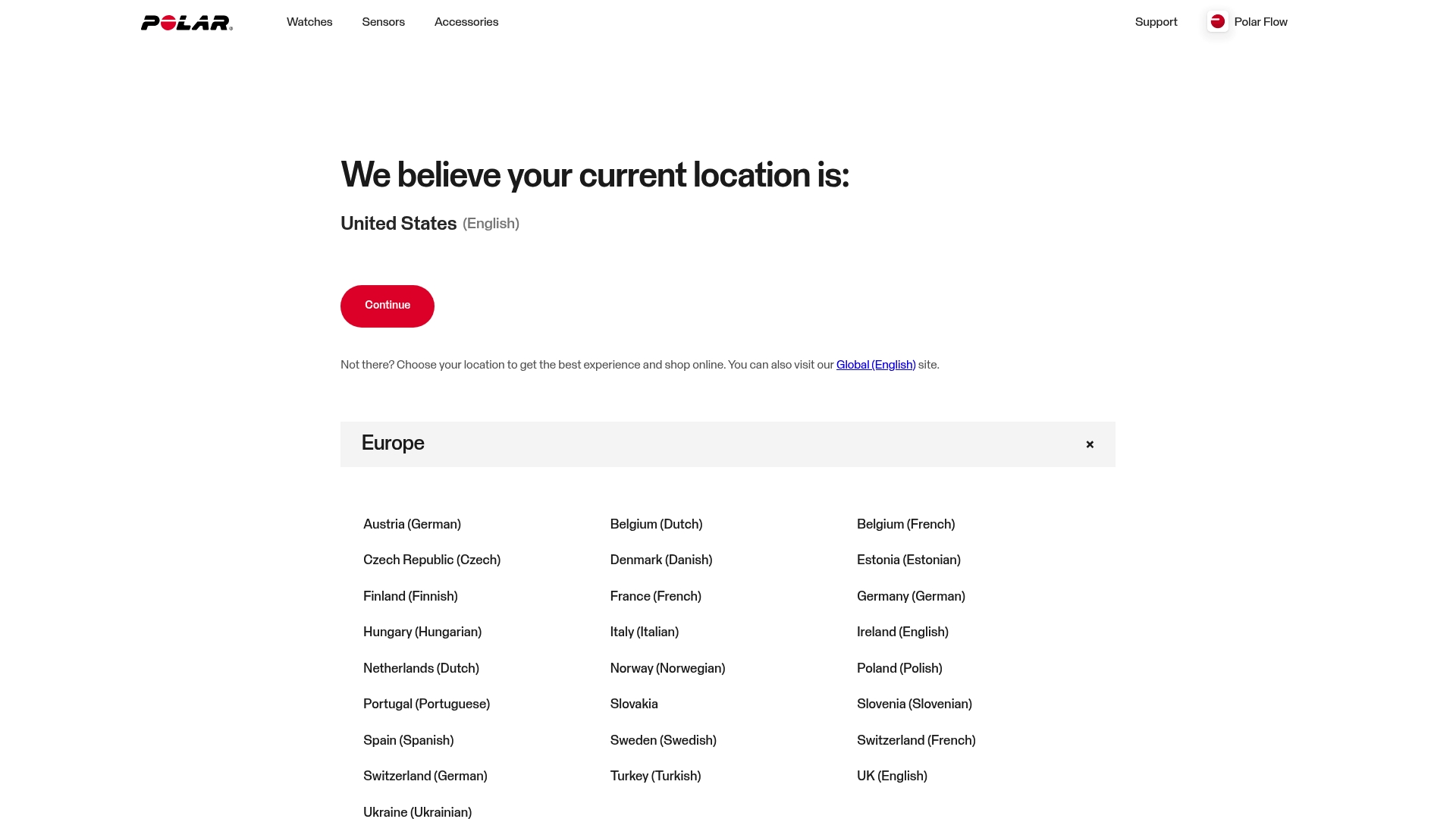
At a Glance
Polar is a specialist in heart rate monitors, fitness trackers, and sports watches built around performance and dependable data. Its devices pair tightly with the Polar Flow platform for clear training insights and long-term progress tracking. For men over 40 who care about heart-rate accuracy and training-focused metrics, Polar delivers focused tools rather than lifestyle gimmicks. Expect solid sports tracking, fewer non-sports frills, and a platform designed for analysis.
Core Features
Polar centers on heart rate monitoring and fitness tracking delivered through a range of sports watches and wearable sensors. Devices sync with Polar Flow, a web and app platform for aggregating workouts, viewing trends, and exporting training data. Accessories and specialized sensors expand the ecosystem, letting you add chest straps or cadence sensors for more detailed metrics. The setup emphasizes training performance, endurance metrics, and heart-health monitoring rather than broad smartwatch app ecosystems.
Short and practical.
Pros
- Specialized in sports and fitness devices: Polar focuses its development on athletic accuracy and sports-centric features rather than general-purpose wearables. This specialization produces consistent results for training sessions.
- Comprehensive tracking features: The devices provide detailed heart-rate metrics, distance, pace, and sport-specific tracking that give you actionable feedback after each session.
- Accessories available for customization: You can add sensors and accessories to tailor data capture—use a chest strap for the most precise heart-rate data or cadence sensors for running form insights.
- Global support and localization options: Polar supports many countries and languages, which helps if you travel or want localized app experiences and documentation.
- User-friendly platform for data management: Polar Flow presents training logs and analytics in a clear, structured way so you can identify trends without feeling overwhelmed.
Cons
- Limited to fitness and sports-related tracking devices: If you want a smartwatch with many non-sports apps, Polar’s focus on athletic metrics may feel restrictive.
- Potentially high costs for premium devices or accessories: Higher-end Polar watches and optional sensors can raise the total cost beyond simple fitness trackers.
- Limited non-sports-specific wearable options: Polar’s lineup prioritizes athletes, so casual features like extensive third-party app support or lifestyle widgets are fewer compared with broader smartwatch ecosystems.
Who It’s For
Polar is best for men over 40 who prioritize training quality, heart-rate accuracy, and measurable performance gains. If you’re returning to running, rebuilding fitness after a life change, or training with time efficiency in mind, Polar offers focused tools to help you track progress and avoid overtraining.
Unique Value Proposition
Polar’s strength is concentrated expertise: precise heart-rate tech and a training-first platform. Instead of being everything to everyone, Polar gives athletes and dedicated fitness-minded users a clear path from data capture to actionable insight.
Real World Use Case
A runner uses a Polar sports watch during interval sessions to monitor heart rate and pace, then syncs workouts to Polar Flow to review recovery, trends, and planned training loads for the coming weeks.
Pricing
Pricing varies by product, ranging from basic fitness trackers to advanced sports watches; specific prices depend on model and optional accessories.
Website: https://polar.com
Suunto
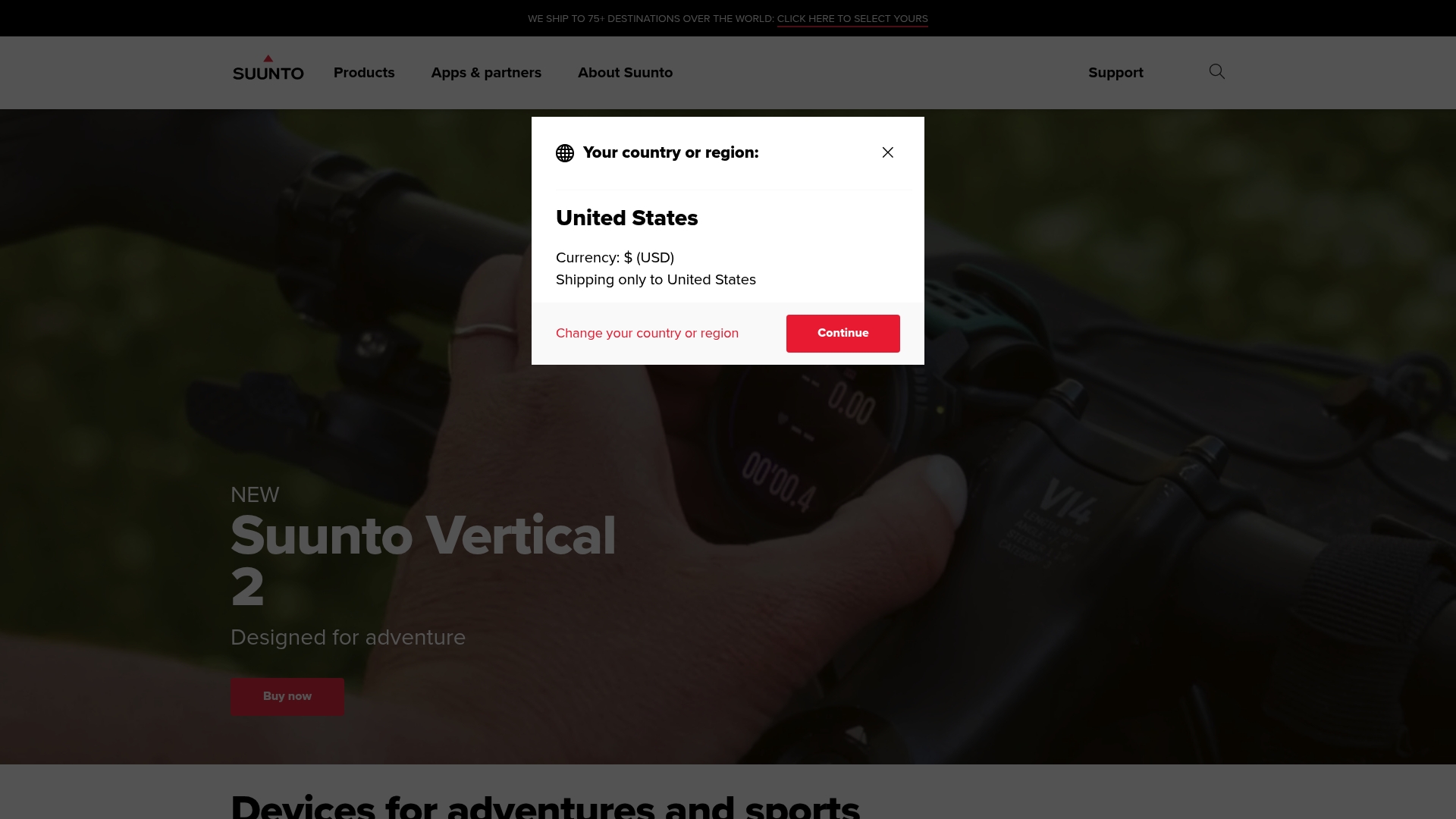
At a Glance
Suunto builds rugged sports watches, dive gear, compasses, and innovative accessories aimed at outdoor athletes and adventurers. The brand leans into durability, music integration, and novel hardware like bone conduction headphones with a powerbank, while offering accessible customer support and a newsletter discount incentive. If you want gear made for long days outside and clear after‑sale help, Suunto is worth a close look. However, the website emphasizes product stories and launches more than deep technical specs or transparent pricing.
Core Features
Suunto’s lineup covers sports watches for racing, training, and everyday use, plus specialized dive instruments, compasses, and performance accessories. Several performance watches include music integration, and the accessory list notably includes bone conduction headphones that double as a powerbank—designed so you can hear surroundings while listening and recharge on the go. The company also highlights accessibility standards and provides phone and email support, with a newsletter signup that delivers a discount code and product updates.
Pros
- Broad, specialized product range: Suunto offers equipment for running, racing, diving, and outdoor navigation, supporting a wide array of adventure activities for focused athletes.
- Attention to accessibility and support: The brand explicitly commits to accessibility and backs products with phone and email customer service, which helps when you need real human help.
- Innovative accessory options: Music-enabled watches and bone conduction headphones with integrated powerbank functionality show a willingness to combine features for real-world utility.
- Customer engagement via newsletter: Subscribers receive updates and a discount code, making it easier to catch new releases or save on purchases.
- Global availability: Extensive country options mean you can typically buy Suunto gear in many regions, simplifying replacement, service, and warranty logistics.
Cons
- Promotional site content limits technical detail: The website focuses largely on product storytelling and new releases, which means technical specifications and deep comparisons are often sparse.
- No clear pricing information displayed: Pricing isn’t specified on the main pages, so you may need to contact retailers or dig through local sites to find exact costs.
- Emphasis on new announcements over existing details: Frequent product news can obscure the day‑to‑day information you need to decide between models.
Who It’s For
Suunto suits active men over 40 who prioritize durable, purpose‑built gear: triathletes, open‑water swimmers, trail runners, and weekend mountaineers who need reliable navigation and robust tracking. If you value real‑world features like music on the run or headphones that let you stay aware of traffic, Suunto aligns with that mindset.
Unique Value Proposition
Suunto’s strength is marrying adventure‑grade construction with thoughtful performance features—music, bone conduction audio, and navigational tools—while maintaining a focus on accessibility and direct customer support. It’s gear designed for people who spend long hours training or exploring and want devices that keep working.
Real World Use Case
Imagine a triathlete tracking swim, bike, and run metrics with a Suunto watch, navigating courses with an integrated compass, listening to pace cues via bone conduction headphones, and using the accessory’s powerbank to top off devices between stages.
Pricing
Not specified on the webpage.
Website: https://suunto.com
Amazfit
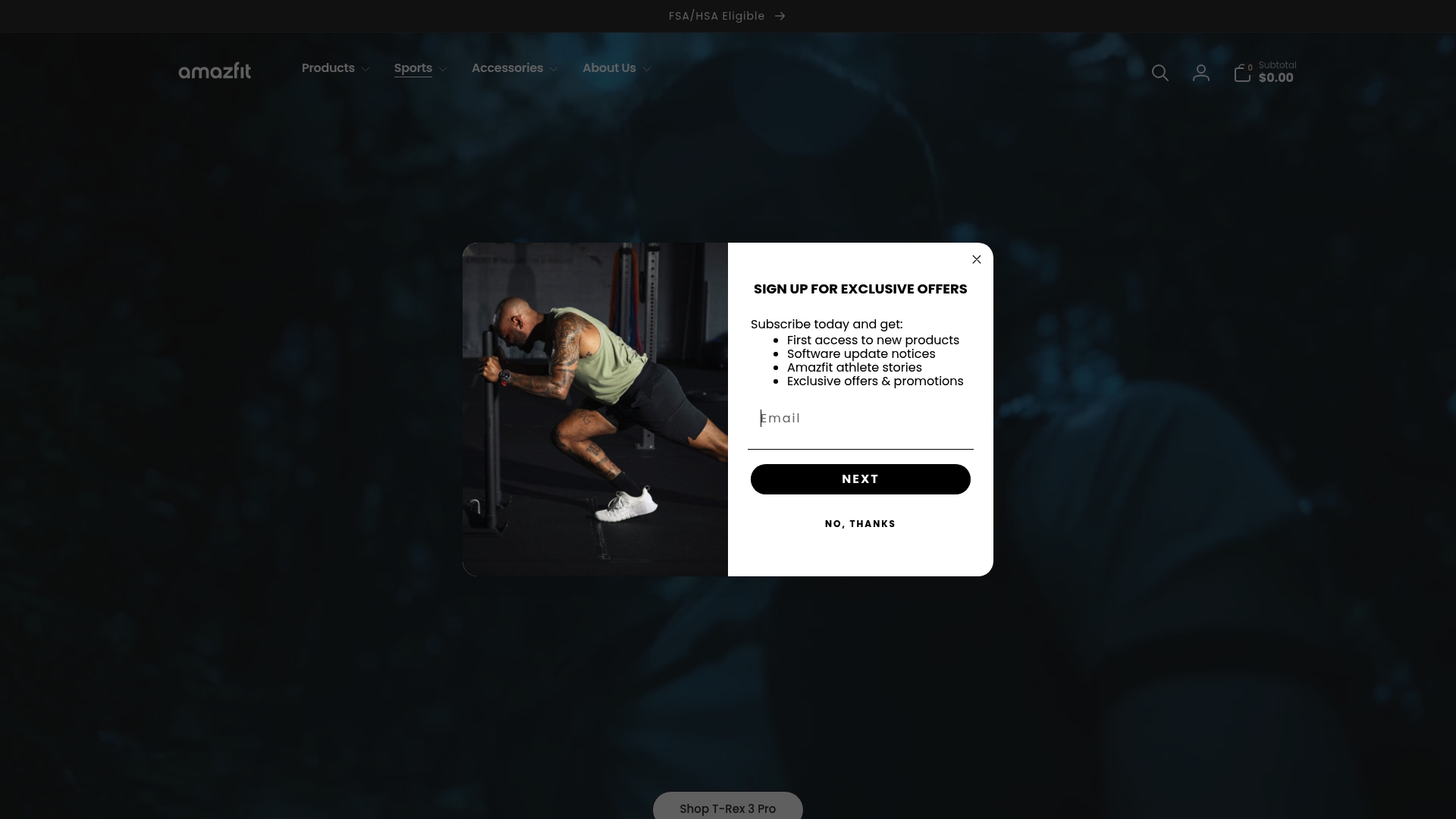
At a Glance
Amazfit delivers a broad lineup of smartwatches and bands that focus on everyday health and outdoor activity tracking, all tied into the Zepp app for deeper analysis. For men over 40 looking to regain fitness momentum or manage long-term health metrics, Amazfit covers the essentials—heart rate, sleep, SpO2, and activity recognition—across affordable and rugged models. Pricing stretches from budget-friendly to premium, so you can scale features to your needs. Bottom line: versatile, practical, and approachable for midlife men who want functional tracking without overcomplication.
Core Features
Amazfit’s core capabilities center on continuous health monitoring and activity tracking: heart rate tracking, sleep tracking, blood-oxygen (SpO2) measurement, sedentary reminders, phone notifications, and 24/7 fitness monitoring. The brand emphasizes sports and outdoor use with rugged GPS-capable models and offers customizable watch faces and straps to suit personal style. All data syncs to the Zepp app, which aggregates insights for trends and assessments—useful if you want to monitor progress over weeks and months.
Quick, practical note: the ecosystem is intentionally broad. You don’t need the top model to get meaningful data.
Pros
- Wide model range suits different budgets and goals: Amazfit offers options from basic trackers to rugged GPS watches, so you can pick a device that matches your activity level and wallet.
- Comprehensive health and fitness tracking: The watches cover heart rate, sleep, SpO2, and activity monitoring, giving you the metrics that matter most as you manage midlife health.
- Customizable aesthetics and accessories: Changeable watch faces and straps let you shift from workout mode to office-appropriate looks without buying another device.
- Zepp app integration provides deeper insights: Syncing with Zepp brings your raw metrics into trend charts and assessments so you can see how workouts and sleep affect recovery.
- Rugged options for outdoor enthusiasts: If your midlife reinvention includes hiking or cycling, Amazfit has GPS-capable models built for the outdoors.
Cons
- Regional availability varies and may limit model choices in some markets, which can be frustrating if a specific version isn’t sold where you live.
- Some advanced functions may require extra subscriptions or integrations, meaning the out-of-the-box experience might omit a few premium analytics.
- Pricing inconsistency across models can make comparison shopping confusing, because similar-looking devices can sit in very different price tiers.
Who It’s For
Amazfit is ideal for active men over 40 who want reliable, no-nonsense tracking without an intimidating learning curve. If you’re re-focusing on fitness after a life change—whether a career pivot, divorce, or simply a renewed health goal—Amazfit gives you the core data to make adjustments and measure progress.
Unique Value Proposition
Amazfit’s strength is variety: it lets you choose between budget-friendly daily trackers and rugged GPS smartwatches while keeping a consistent app ecosystem (Zepp). That makes it simple to upgrade later without losing familiarity.
Real World Use Case
Imagine wearing an Amazfit during a week of mixed training: daily step counts and heart-rate zones logged, overnight sleep stages reviewed, SpO2 checked when you feel off, and notifications kept in view during long walks. The Zepp app summarizes the week so you can adjust intensity and recovery.
Pricing
From around $50 to $500 depending on the model.
Website: https://amazfit.com
Garmin
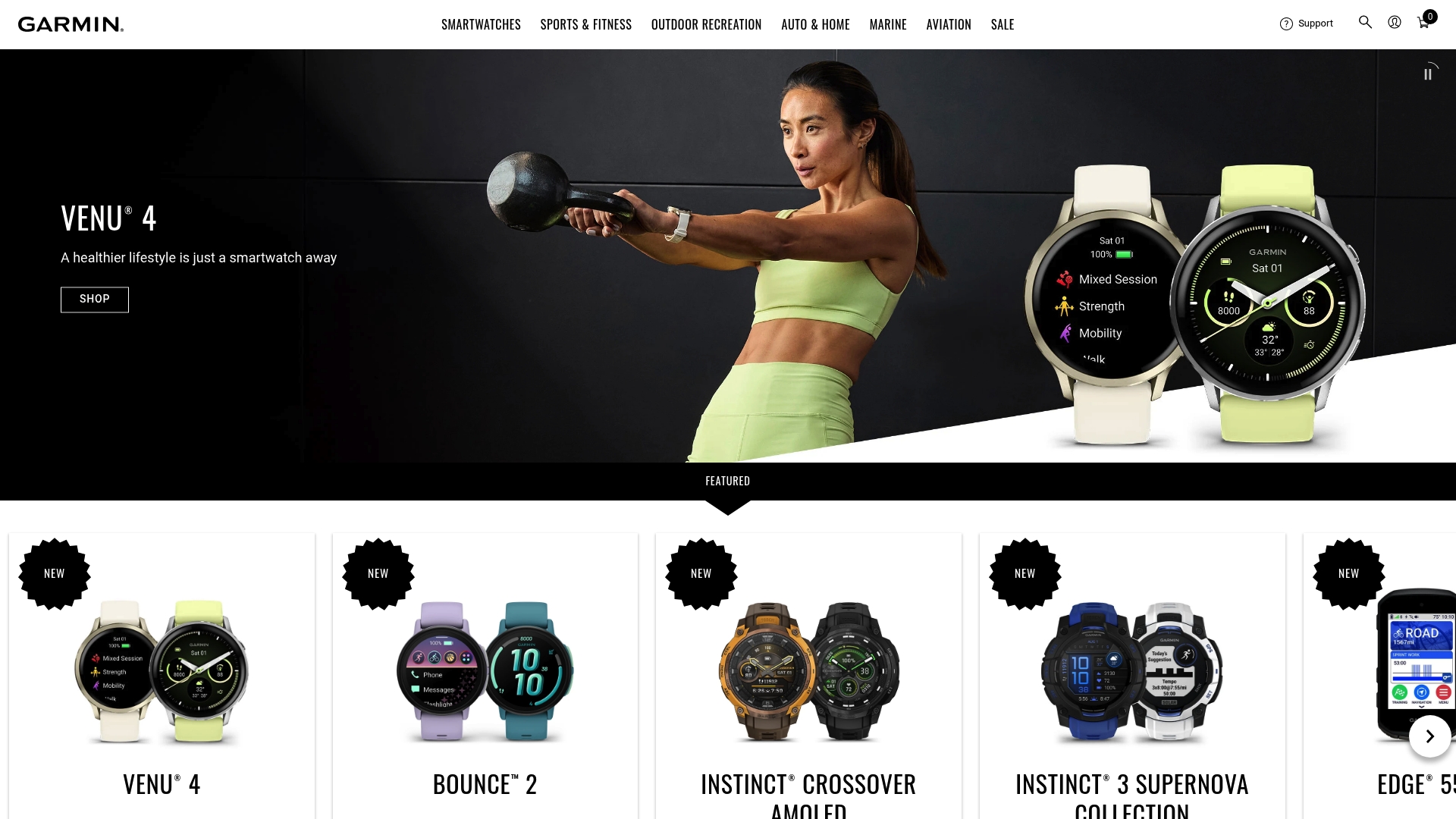
At a Glance
Garmin is a technology company centered on GPS and navigation solutions across automotive, aviation, marine, outdoor, and sports markets. For men over 40 looking for reliable navigation and activity-focused devices, Garmin’s broad ecosystem means there’s likely a product that fits your needs. The brand pairs a strong reputation in GPS tech with robust online support and e-commerce accessibility. Bottom line: dependable navigation and broad market coverage, but product specifics and pricing aren’t clear from the homepage content alone.
Core Features
Garmin’s core capabilities focus on GPS and navigation products that serve aviation, marine, outdoor, and sports users, supported by customer account management and an e-commerce platform. The company emphasizes cross-market product lines and provides customer support and resources through its site, so you can research devices, access manuals or assistance, and purchase hardware directly. In short: a wide product range, centralized support, and online purchasing form the backbone of Garmin’s offering.
Pros
- Diverse product offerings for different sectors: Garmin’s range spans aviation to sports, giving you options whether you need specialized navigation or general outdoor tools.
- Strong brand reputation in GPS technology: The company is recognized for GPS expertise, which reassures buyers seeking reliable location and navigation solutions.
- Comprehensive support resources available online: Garmin provides customer support and account management features to help with setup, troubleshooting, and product information.
- Easy online shopping experience with account management features: The e-commerce platform lets you research and buy devices while managing orders and support through an account.
- Global presence with support for various markets: Garmin’s international reach means access to products and support in multiple regions and market segments.
Cons
- Limited detailed product information from the homepage content provided: The summary-level content does not include specific device specs, so you’ll need to dig deeper on the site for model-by-model comparisons.
- Possible complexity due to wide range of products and support services: The sheer breadth of offerings across markets can be overwhelming if you’re trying to find a single fitness- or age-focused solution.
- Website content provided does not specify pricing or latest product updates: Without pricing and update details in the supplied content, it’s hard to assess value or recent innovations from the homepage alone.
Who It’s For
Garmin is best for individuals or businesses that require proven GPS and navigation solutions across aviation, marine, outdoor, and sports settings. If you value a single brand that covers specialized niches as well as general outdoor and fitness needs, Garmin is a logical place to start. You’re technical? Even better. You want dependable navigation? This fits.
Unique Value Proposition
Garmin’s unique value lies in its breadth: a single, globally recognized brand that delivers GPS expertise across multiple markets while combining product sales with centralized support and account management. That scale makes it a one-stop hub for navigation and activity devices.
Real World Use Case
A hobbyist headed into the backcountry can use Garmin’s outdoor GPS units for route planning and navigation, then consult online support or purchase accessories through the e-commerce platform—while an aviation professional can reference aviation-specific products and support for more technical needs.
Pricing
Not specified in the provided content.
Website: https://garmin.com
Fossil
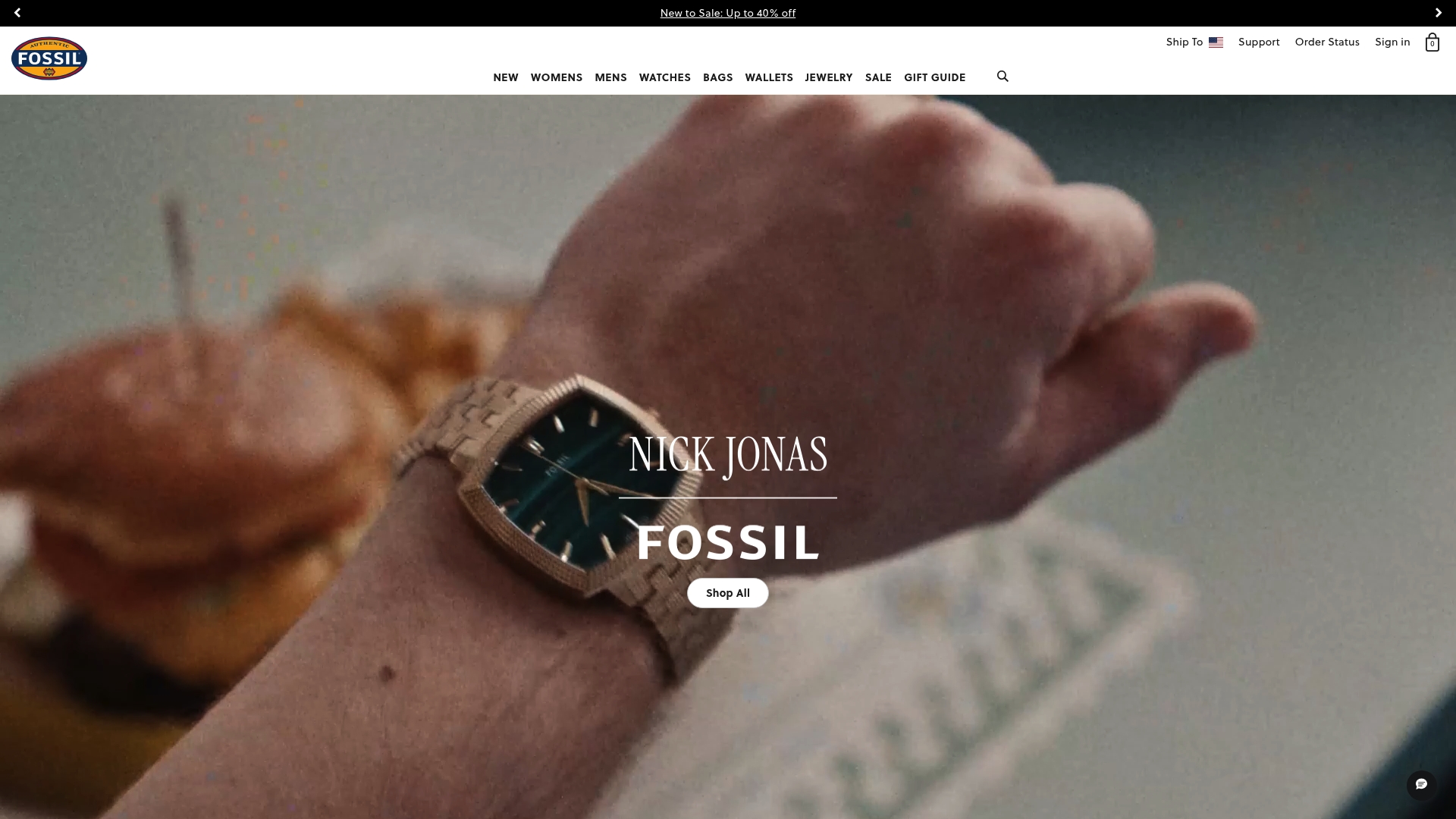
At a Glance
Fossil blends fashion-forward design with dependable craftsmanship, offering watches, handbags, jewelry, and accessories that aim to brighten daily life. Founded in 1984 and recognized by Time as one of the world’s best brands in 2024, Fossil is a safe bet if you want stylish, American-designed pieces that feel curated rather than generic. For men over 40 looking for a watch that transitions from the office to weekend projects, Fossil delivers tasteful options—but be mindful of price variation across collections.
Core Features
Fossil’s lineup includes a wide range of watches for men and women, occasional collaborations (for example with public figures), and matching accessories like handbags and jewelry that reflect consistent styling. In-store services include customization such as engraving and embossing, plus virtual shopping experiences and live events for new collection unveilings. Gift services—gift cards and personalized packaging—round out the experience for buyers seeking ready-to-give options.
Pros
- Well-crafted, fashionable designs: Fossil emphasizes American creativity and style, delivering accessories that look intentional and can elevate everyday outfits.
- Broad product selection: The brand offers watches, bags, jewelry, and accessories so you can coordinate pieces rather than mix disparate brands.
- Personalization options in store: Engraving and embossing let you add a personal touch, which is especially useful for milestone gifts or commemorating life changes.
- Strong brand recognition: Being named one of Time’s best brands of 2024 signals industry respect and consistent innovation.
- Multiple shopping paths: You can shop in-store, online, or attend virtual events—convenience that fits varied schedules and comfort levels.
Cons
- Price can be inconsistent across collections: Some watches are priced from $150 to $350, so you may find a wide spread depending on the line you choose.
- Availability may vary by location: Certain collections or specific items may be harder to find in some areas, which can frustrate buyers seeking a precise model.
- Limited detail on post-purchase policies in this content: The provided information doesn’t include deep specifics about customer service, returns, or warranty, so you may need to confirm those details before buying.
Who It’s For
Fossil is ideal for fashion-conscious men over 40 who want a well-designed watch or accessory that reads as mature and intentional rather than trendy. If you’re re-entering dating, stepping into a new career role, or buying a meaningful gift, Fossil offers durable, stylish choices with personalization options to mark the moment.
Unique Value Proposition
Fossil’s unique value lies in accessible American styling paired with tangible customization—engraving and embossing—that turns a standard accessory into a personal statement. Recognition from Time in 2024 reinforces that you’re buying from a brand that balances fashion and legacy.
Real World Use Case
Imagine buying a Fossil watch as a gift for your 45th birthday: you pick a classic model online, add in-store engraving for a meaningful date, and use the brand’s virtual shopping event to preview coordinating straps and accessories. The result is a polished, everyday watch designed to age well with you.
Pricing
Starting at $150 for select watches; many pieces fall between $150 and $350, with variation across collections.
Website: https://fossil.com
PulseIt Fitness Tracker
![]()
At a Glance
PulseIt Fitness Tracker is a lightweight, user-focused wearable built to monitor your health in real time and send smart alerts when something shifts. It concentrates on core vitals—heart rate, sleep quality, and movement—and packages that data into readable insights designed for everyday wear. If you want straightforward, always-on health feedback without a complicated setup, PulseIt gives you that. Note: it’s sold exclusively through the official site, so buying and support are routed there.
Core Features
PulseIt centers on real-time vital tracking: continuous heart rate monitoring, sleep quality analysis, and movement tracking that ties into “sleep and energy synchronization.” The device emphasizes easy-to-understand health data and smart alerts that notify you when metrics move outside expected ranges. Physically it’s designed for all-day comfort—lightweight and stylish—so you can leave it on from morning routines to evening walks. Data protection is part of the pitch: PulseIt claims secure storage using advanced encryption, and it supports both Android and iOS for syncing and viewing results.
Pros
- User-friendly and intuitive design: The tracker’s interface and data presentation are built to be easy to read and interpret without technical knowledge.
- Lightweight and comfortable for all-day wear: The physical design prioritizes comfort so it can stay on while you sleep, move, or rest.
- Compatible with both Android and iOS devices: You won’t be locked into a single phone ecosystem; syncing is supported across major mobile platforms.
- Offers detailed health insights and alerts: Continuous vitals plus smart alerts provide actionable notifications when metrics shift.
- Secure data protection using advanced encryption: The product highlights encrypted data handling, which matters if you care about privacy.
Cons
- Limited information on battery life and specific technical specs: The listing does not provide concrete numbers for battery longevity or charging expectations, leaving a gap in planning for long trips or heavy use.
- Availability may be limited as only sold through the official website: You can’t pick one up in stores or through third-party retailers, which may complicate returns or hands-on trials.
- No detailed comparison with other devices in terms of features or pricing: The product doesn’t offer explicit side-by-side benchmarking or clear MSRP versus competitors, making it harder to judge value.
Who It’s For
PulseIt is ideal for men over 40 who want straightforward, continuous health monitoring without diving into technical complexity. It suits those tracking heart health, cleaning up sleep habits, or wanting an early-warning alert system for sudden changes. If you prefer comfort and simplicity over granular, pro-level metrics, this fits.
Unique Value Proposition
PulseIt’s edge is simplicity: real-time vitals, readable insights, and smart alerts wrapped in a comfortably wearable package with an emphasis on data security. It’s built for daily wearers who want practical, immediate health feedback rather than exhaustive analytics.
Real World Use Case
Imagine wearing PulseIt from morning coffee through a 30-minute walk, then to bed. The tracker monitors your heart rate and movement, syncs sleep quality overnight, and pushes a smart alert if patterns suggest a meaningful deviation—prompting a check-in with your doctor or a tweak to your routine.
Pricing
From up to 70% off, with discounts for bulk purchases; exact price varies depending on the offer at purchase time.
Website: https://pulseitfitnesstracker.com
Top Tech Report
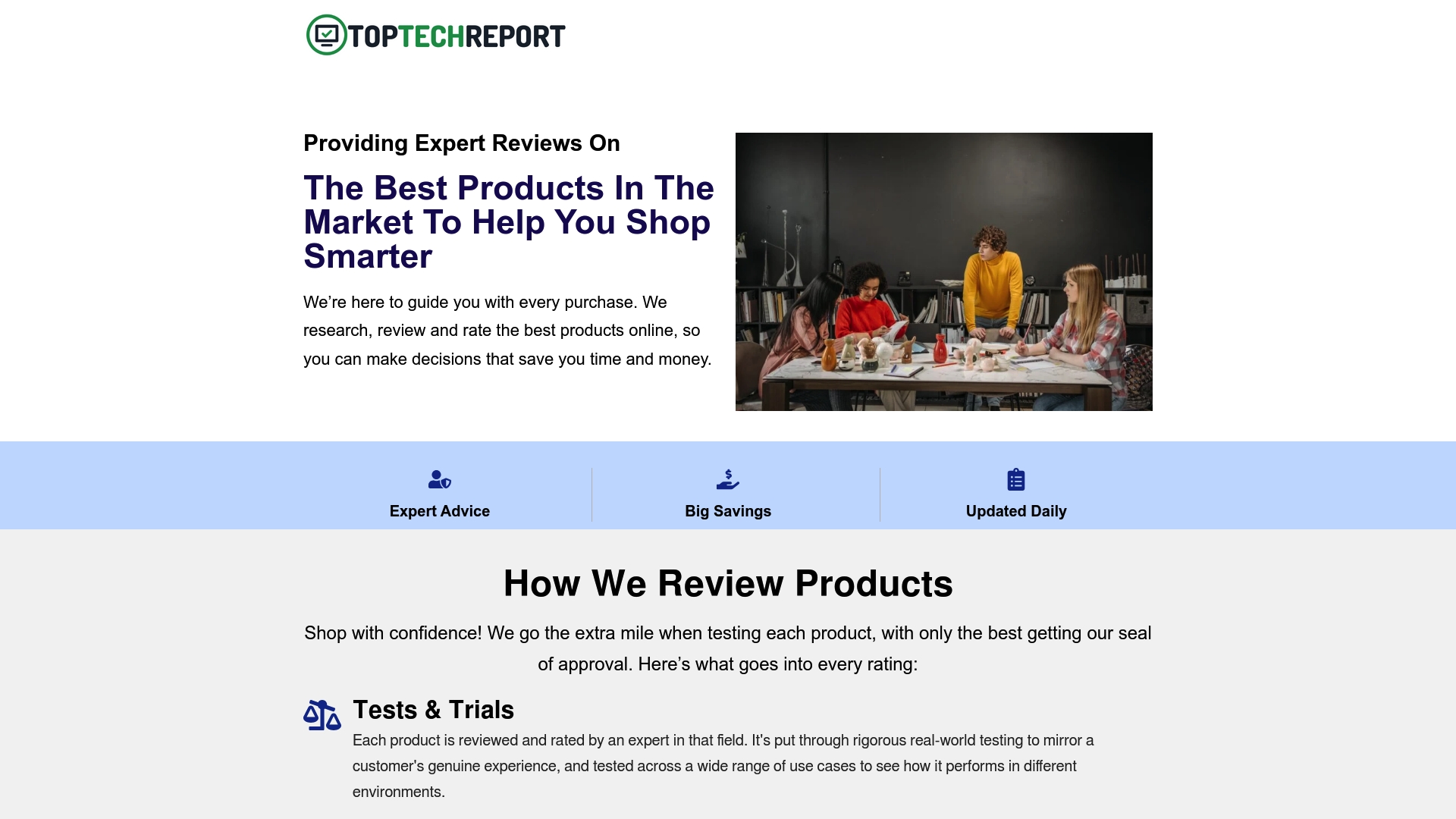
At a Glance
Top Tech Report is a straightforward review platform that tests and ranks the latest tech products to help shoppers make confident purchases. Its strength is expert-driven, real-world testing focused on durability and value, with content refreshed regularly. However, some rankings may be influenced by advertising relationships and not every market option is covered, so use it as a strong starting point—not the final word.
Core Features
Top Tech Report offers expert testing and reviews across a range of tech categories, with real-world use-case trials and durability checks built into its methodology. The site compares and ranks products on key factors, publishes top product lists, and updates those lists regularly so you see current recommendations. The platform’s emphasis is on helping consumers identify quality and value, packaged as readable reviews and side-by-side comparisons.
Pros
- Provides detailed, expert reviews and ratings: Reviews are presented with expert analysis intended to break down what matters for purchase decisions.
- Focuses on real-world performance and durability: The platform tests products in practical scenarios rather than just reporting specs, which highlights long-term value.
- Includes comparison and ranking of popular products: Side-by-side rankings make it easier to narrow choices when you’re comparing multiple options.
- Aims to help consumers save money and shop confidently: The stated goal is to reduce purchase anxiety by surfacing value-for-money recommendations.
- Updated daily with new reviews and top lists: Frequent updates keep recommendations current as new models and deals appear.
Cons
- Potential bias due to advertising compensation influencing rankings: The site acknowledges possible advertising influence, which can cloud absolute objectivity.
- Not all market options may be represented: Some niche or lesser-known products may be missing from lists, limiting coverage for deep-dive shoppers.
- Specific product details or user reviews are not extensively detailed: The focus on expert testing means fewer granular user-submitted experiences are available for context.
Who It’s For
Top Tech Report is best for tech-curious shoppers and everyday buyers who want an expert-curated, time-saving way to shortlist gadgets. If you value tested durability, clear rankings, and up-to-date lists over exhaustive crowd-sourced feedback, this platform fits. It’s ideal when you need to move from curiosity to a purchase decision quickly.
Unique Value Proposition
Top Tech Report’s value lies in combining expert testing with frequent updates and concise rankings, delivering a quick path from research to buying confidence. It positions itself as a practical tool for identifying durable, value-oriented tech options without wading through dozens of forum threads.
Real World Use Case
Imagine you’re researching the best camera drones for a weekend project: Top Tech Report’s top-5 list, durability notes, and side-by-side comparisons let you compare flight stability, build quality, and price in one place—so you can pick a dependable model that fits your budget.
Pricing
Free access to reviews and rankings on the website.
Website: https://toptechreport.org
Men’s Lifestyle and Fitness Platforms Comparison
This table provides a comparison of various platforms and brands offering lifestyle and fitness products aimed at men over 40. It highlights their features, pros, cons, and pricing to aid in decision-making.
| Platform/Brand | Features | Pros | Cons | Pricing |
|---|---|---|---|---|
| Second Act Man | Health, fitness, wellness articles; guides on hormone optimization, career advice | Comprehensive midlife focus; Multi-format content mix | Pricing not specified | Not specified |
| Fitbit | Activity and fitness tracking; Google app integration; Fitbit Premium | Comprehensive fitness tracking; Google service integration | Premium features require subscription; Compatibility limits | Varies by device |
| Apple | High-performance devices; integration with Apple ecosystem | Innovative hardware; strong ecosystem integration | Premium pricing; Product compatibility limited to Apple ecosystem | Varies by product |
| Garmin | Specialized devices for navigation, fitness, and outdoor use | Wide range of products; strong support services | Pricing transparency is limited; Website may be overwhelming | Not specified |
| WHOOP | Continuous health monitoring; personalized recovery guidance | Comprehensive insights; Personalized health guidance | Region-dependent feature availability; Medical features are wellness-focused | Not specified |
Unlock Real Results: Track Your Fitness and Transform Your Life After 40
Are you comparing the best fitness trackers because you want more energy, better sleep, or to see actual changes in your daily routine? Many men over 40 feel frustrated with vague health goals or flat results from generic plans. The latest trackers can give you data, but without a plan tied to your age and your unique life, it is easy to fall off track. Our resource hub Fitness After 40 for Men offers practical workout routines and strength training built specifically for men facing the challenges of midlife.
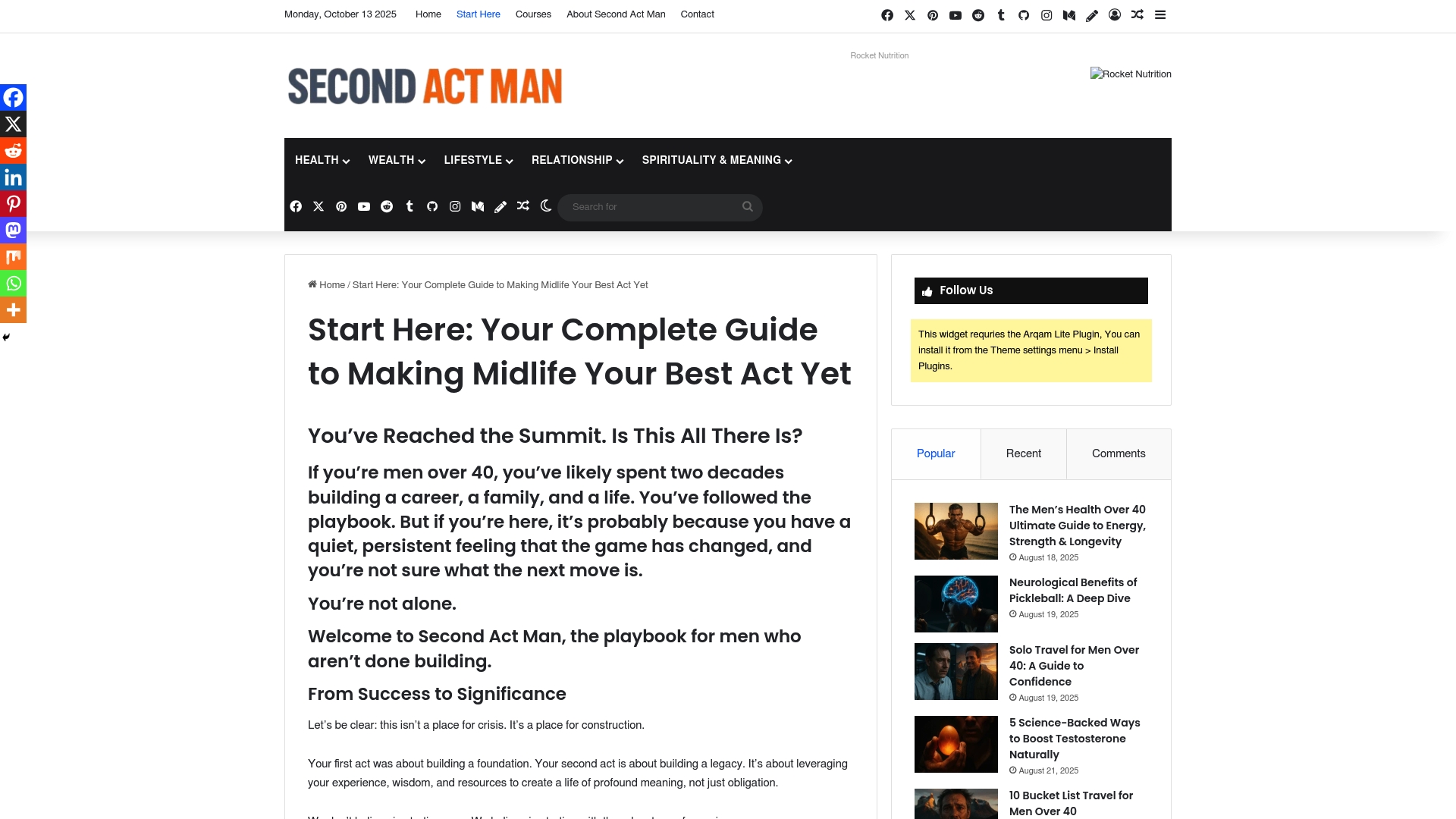
Don’t just collect numbers. Bridge the gap between wearable data and real health improvements. Start today with in-depth guides at Fitness After 40 for Men for proven strategies. For more on weight and metabolism, visit How to Lose Belly Fat & Manage Weight After 40. If you’re ready for a bigger reset or want purpose-driven support in all areas of your life, explore our personalized resources at SecondActMan. Make your next decade your healthiest yet.
Frequently Asked Questions
What features should I look for in a fitness tracker for men over 40?
A fitness tracker for men over 40 should include heart rate monitoring, sleep tracking, and activity recognition. Prioritize models that offer insights tailored to your age group, such as recovery data and stress management features.
How can a fitness tracker help improve my health as I age?
A fitness tracker can provide valuable data on your activity levels, sleep quality, and heart rate, enabling you to make informed decisions about your health. Monitor your daily steps and aim for at least 7,000–10,000 steps a day to maintain or improve your cardiovascular health.
What is the typical battery life I should expect from a fitness tracker?
Most fitness trackers last between 5 to 14 days on a single charge, depending on the model and features used. Choose a tracker that aligns with your lifestyle; for example, if you work out frequently, opt for one with a longer battery life to avoid daily charging.
How do I sync my fitness tracker with my smartphone?
To sync your fitness tracker with your smartphone, download the associated app, create an account, and follow the pairing instructions in the app. Typically, you will enable Bluetooth on your phone and select your device from the app’s settings to complete the sync process.
Can I wear a fitness tracker while swimming or showering?
Many fitness trackers are water-resistant and can be worn while swimming or showering. Check the specifications of your chosen model to ensure it can handle water exposure, especially if you plan to use it in the pool more than occasionally.
How can I use my fitness tracker to set realistic fitness goals?
Use your fitness tracker to analyze your current activity levels and set achievable goals based on that data. For instance, if you currently average 5,000 steps a day, aim to gradually increase that to 7,500 steps over the course of 4–6 weeks.





